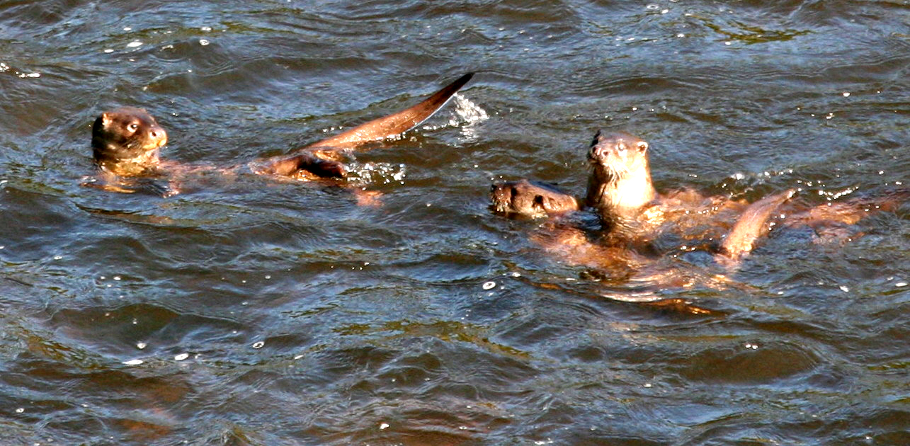Trout & Grayling Report
by Oliver Burch
December 2015
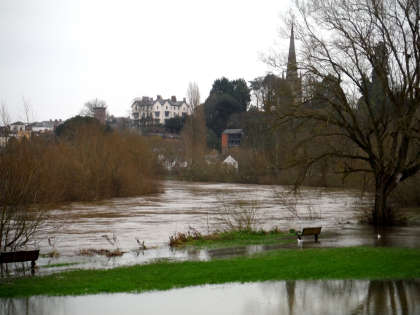
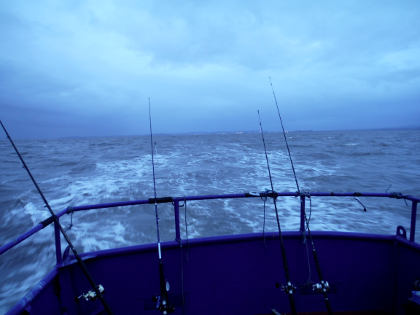
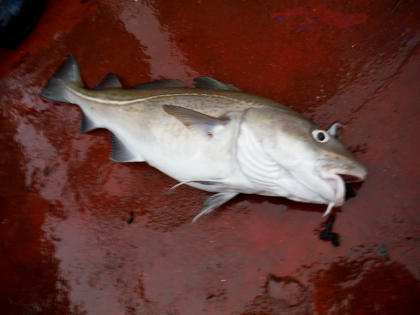
We have a way of telling the weather in the Forest of Dean. The idea is that you find yourself a view point on high ground and look out to the West. If you can see Sugarloaf Mountain behind Abergavenny, this means that it is going to rain. If you can't see Sugarloaf Mountain, this means that it is raining. So it was during the last month: either it had just finished raining, or it was raining or it was about to rain again. Along with this we had warm temperatures nearly all the time and storm-force winds on many days and nights. I am not sure that the amount of rain added up to a huge total. The WUF had measured the annual fall at 25 inches by the end of November, which is the kind of rainfall you expect in East Anglia rather than in western counties. Oddly enough 2015 might go down as an average or even a dry year overall for our rivers. As we all know, the worst of the weather went to the North West and later the North where rivers flooded catastrophically. Our rain was just persistent and once the ground was saturated, it took little enough extra rainfall to keep all our rivers in a state of permanent flood, day after day. Grayling fishing was just about entirely washed out. One wondered what happened to the November and December spawning season for trout and salmon: whether gravid fish held off for the right conditions, whether they have spawned on what flooded gravels they could find, and whether redds have been washed out? Wise heads pointed out that winter floods are hardly unknown and that nature probably has its compensation mechanisms.
For the whole month, therefore, I have virtually nothing to report, with the exception of a late one from November. On the 26th November, PB from Cheltenham got 8 grayling, including a large one, from Lyepole. There may be some late results from the Christmas holidays but, given the conditions, it hardly seems likely. Of course there are chances for grayling during January and February, but it will have to stop raining for a while first. For myself, I did go fishing out in the Bristol Channel on one occasion, finding the sea off Cardiff even muddier than usual from the discharge of the flooding rivers. Casting a Pennell tackle with a heavy weight and a cocktail bait of lug worm and squid up-tide for cod while on a rolling deck is not a subtle business, but my family at least did get a fish dinner out of it. Our skipper took us to a good mark and we had 16 to the boat. People tell me I should enjoy eating cod and other prime sea fish, but I somehow never manage to do so after fishing from a boat with the smell of fish slime, guts, chopped squid bait and diesel exhaust seeming still fresh in my nostrils. The moment when the skipper comes out from his galley with fried egg sandwiches to hand round is a test of the stomach.
Otherwise, you might be surprised to hear that I did a lot of dry fly fishing this month. During recent winters, there seem to have been many weeks and even months when grayling fishing has been pretty well impossible. Fishing for stocked rainbow trout in lakes and pools may not be exactly a substitute, but it's surely better than sitting indoors wishing for lower water levels in the rivers? I'm lucky in that the Forest of Dean has some quite good little commercial fisheries and there is also a rather picturesque syndicate lake tucked away in the trees just 10 minutes from my home. This pool, rarely visited by me during the summer (the WUF wild streams at Bideford, Cannop and Blackpool with their baby wild trout seem more attractive when I have a couple of hours to spare) has been a life-saver over the last weeks. It's noticeable that all our local waters have their different characteristics and require different fishing techniques. Some are more acid than others. Some are "buzzer waters" and some are not. Most have a certain amount of silt and one nearby lake, now sadly closed as a fishery, has a hatch of mayfly.
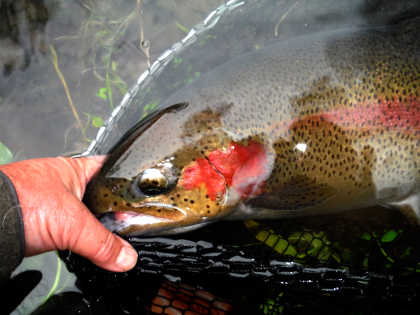
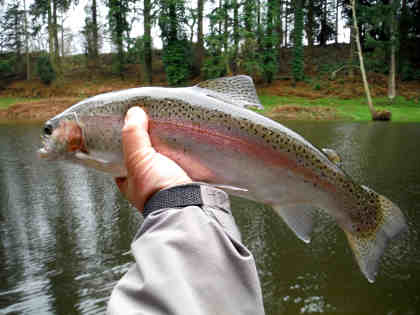
All the local fisheries now buy their trout from Exmoor Fisheries, which makes for economies of scale and delivery, and these days almost everybody orders a standard size, that is to say fish of 2.5 - 3 pounds. These are reliably cormorant-proof. When the truck arrived for the early November delivery (I accepted the consignment for our syndicate), there was an extra tank on board containing large rainbows up into double figures. Every customer on the run got one or two. "It's a freebie," the Exmoor driver explained. "And Happy Christmas!" I have to admit that, like the regular rainbows they send us, these big fellows were lovely looking fish, being well proportioned, muscular and fully finned. Later I was lucky enough to catch the big one put in our pond and one more salmon-sized fish from the clear pool at Big Wells near Redbrook. Both of these, one taken on a dry fly and one on a tiny Pheasant Tail Nymph, gave a very good account of themselves on a five weight rod. This isn't always the case with rainbows over 5 pounds. Of course, let me remark about these catches before somebody else does - this is nothing to write home about! From a stocked fishery, you only get out what you put in, certainly nothing more and quite possibly less!
There are those river fishers who like to sneer at this kind of fishing, which of course must necessarily be artificial to a large extent. For years tourists have paid to experience life on cattle ranches in the western USA and such places are known as "dude ranches." You might call this "dude fishing" if you like. But they fulfil a valuable purpose and these days they are many anglers' introduction to fly fishing. (And I sometimes smile when the same disdainful river fishers mention with pride their days on chalk stream beats where nearly all the trout, rainbows and browns both, have been stocked). Meanwhile, some of the clear water small fisheries are nothing like as easy as some people imagine. This is likely to be because of the impact of catch and release on fish which in any case become very nervous about being constantly cast over. You can watch your fly being inspected and rejected again and again, and if it is ever taken it will only be for a moment. Wild fish can seem relatively naïve by comparison. "I can’t buy a take,"” you will hear from an angler who will probably resort to an indicator to give him a split second chance of setting the hook before the fish ejects the fly.
The disdainful river angler will probably also make the ritual complaint about people "stripping lures" for rainbows on the commercial lake fisheries. I would suggest that the times of stripping lures back fast are more or less over. Back in the day when such flies had virtually no movement in the dressing, we had little choice. Nearly forty years ago, during the early days on Bewl Reservoir in Kent I can remember casting an Ace of Spades out on a fast sinking shooting head before pulling it back along the bottom and up to the boat as quickly as I could go for spring rainbows - a very muscular kind of fishing. But since the discovery of marabou and flies with sinuously waving tails, a slow, sometimes very slow, figure of eight retrieve is more likely to be successful. Besides, these days I often find it difficult to define the difference between a lure and an imitative fly, unless we are going to make the distinction by size. A kitten or a young cat can be guaranteed to pounce on a mouse which it sees scuttling across the yard. It can also be guaranteed to pounce on a piece of screwed up paper pulled and twitched on a string. Does it really believe it to be a mouse or is it attracted by the movement? The movement seems to be the key; rainbows and even brown trout are much the same in their reaction to it.
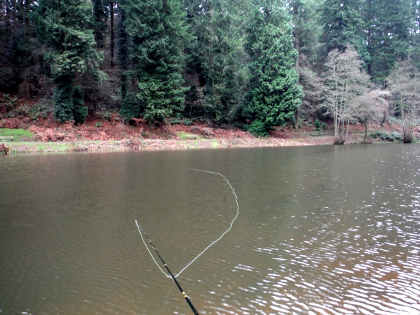

If the weather is warm enough, as it has been so far this winter, one can make the day more interesting with choices as to fishing method. Newcomers to our syndicate hoping to make a good bag are generally advised to make a start with an intermediate line (although most turn up with floaters). At this time of the year there are plenty of weed beds dying back in the shallow bays and if you wait long enough you are almost sure to see signs of fry feeding activity, usually small roach hopping from the surface or sometimes the stunned bodies drifting at the surface where a rainbow has just charged through. They will be mopped up later. Whether or not it may be imitative fishing or provocation with a lure, something with a long marabou tail - but unweighted - cast initially on the surface and then very slowly retrieved below it on the gradually sinking line usually produces an attack if it wasn't taken on the drop. All you need are a few different colours although I would tend to start with white; Cat's Whisker, Bob Church's Appetiser, Humungous, various Damsel patterns and Black Widow are all reliable fish-takers.
The fact is that this method works when fry feeding is going on, but it also works during the rest of the year at this particular Forest fishery. You can spend a lot of time doing that and catch a lot of fish, although without learning much new. For this reason alone, you might get bored with fishing the intermediate line. If fish can be seen on the surface, they can be taken on the surface and that certainly was the case this month. The wind blew often enough, even when it wasn't raining, and whenever I came to our Forest lake, fish were clearly interested in the debris blown from trees and now drifting along the surface in the middle. Long casting was involved because the fish were cruising far out. Even in a ripple, even without rises, it's possible with experience to detect rainbows moving a couple of feet down by interruptions in the surface pattern, smooth patches and other indications of "nervous water." I spent some time with a long "washing line" leader of 3X co-polymer, suspending a size 14 Traffic Light Buzzer between the floating line and a small Olive Sedgehog on the point.
There was altogether a surprising amount of action considering the time of year, but the dry fly was taken more often than the little buzzer hanging 6 inches below the surface. Later I went on to fish two dry flies 7 feet apart. A size 12 Chocolate Drop, the dry sedge pattern developed by Dennis Moss to take large browns from bays on Lough Corrib, was taken on the point again and again. Of course real sedges have not hatched in our lake for many weeks as far as I know, but the Chocolate Drop certainly was popular during December. Speculation as to when fish really see the fly as something to eat rather than something to be curious about will probably go on as long as anglers continue to cast flies to trout. These fish were fighting fit and long runs and leaps usually followed, with attendant anxiety about the floating line being drowned far out in the lake. My only problem was that this non-descript brown fly was very difficult to see at distance on a rippled surface in the dull December light. For this reason I picked another Moss fly, his pale coloured Cluster, also in size 12, to use as a sighter on the dropper. This was originally designed to look like a group of balling midges and consists of nothing much more than a brown and a grizzle hackle wrapped on the same hook shank. Whenever I lost sight of the Chocolate Drop, I just had to focus on the Cluster and keep an eye on the surface a couple of yards further on for disturbances.
I can only think of three things to do with a dry fly on a lake: to leave it static on the surface to drift with any wind, to give it an occasional twitch to draw attention, or to initiate a very slow retrieve through a ripple. Generally the first and the third options worked best. There were two main kinds of rises: a very positive attack from below with a noise like a pistol shot, which could be hit quite promptly, or sometimes a slow head and tail movement onto the fly which needed lots of time. With head and tailers I try to make myself wait until I see the leader move before I tighten. By the standards of river fishing, sometimes some remarkably slow striking is called for on a lake. I won't go as far as Brian Clarke who suggested reading a couple of chapters of War and Peace before reacting, but it might take 3 seconds or more. A long 3 seconds. In summary, if you find yourself missing fish on the strike, after the fly disappears, wait until you see wait the leader itself move. There is a wonderful sensation about connecting with a trout at a long distance in this way. Moments of pure joy. By the way, the Cluster was taken very occasionally, but never confidently. If you fancy trying it out, here is the tying for the Chocolate Drop:
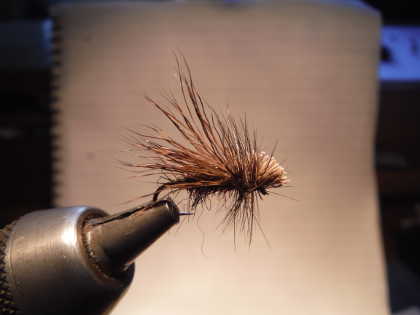
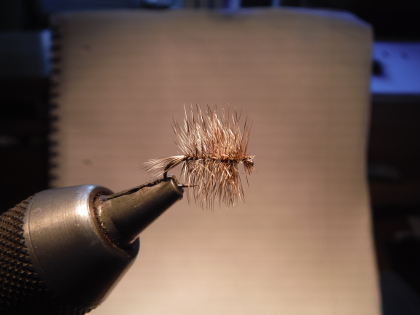
Hook: Kamasan B400, size 12, occasionally 14 or 10.
Thread: Dark brown 8/0
Body: Dark brown seal’s fur
Wing: Dark roe deer hair, with the butts left long and trimmed over the eye to represent a head.
Hackle: Coachman brown or furnace cock
(When making up a body of a secondary colour like dark brown, it's usually better to mix it up yourself rather than buying a pack of a plain bland colour like brown seal's fur. So try mixing fiery brown fur in a white bowl with some black, claret and a few strands of purple or royal blue. Use your fingers rather than a blender; you don't want to be chopping up the fibres. That makes a dark chocolate that any Swiss chocolatier would be proud of. The above is the untidy version without any rib to keep the body in order. The fly is all the better for that; the scruffier it gets, the more attractive it is).
And for the Cluster:
Hook: Kamasan B400, size 12 or 14
Thread Dark brown 8/0
First hackle: Grizzle cock, the length of the shank
Second hackle: Red game, front third of the shank.
By contrast, on the spring-fed clear pool over at Big Wells, once part of the water supply for a tin plate works, a place which is like a deep aquarium of slowly moving trout and where the wind blows less often in a more sheltered Forest valley, there isn't much chance of taking a fish on a size 12 dry fly and a strong leader. These are spooky fish which are cast over continuously every day on this commercial fishery. They will sometimes come to the surface, however, for a very small fly fished on a fine leader. So something like a size 18 CDC Shuttlecock pattern fished on a 6X tippet is called for and there will be moments of extreme tension as a trout ghosts up to the fly in full sight, halts about an inch away and waits as if in deep thought, before coming to a decision, slowly opening its mouth and sucking the fly in.
When the wind does blow at Big Wells, however, momentarily rippling the surface into a sort of blurred grey colour, there is another game which can be played. This only seems to work on certain waters, particularly those where hatching midge play a main part in the trout's diet and it really does require a wind. Using a double tapered floating line and a 5 weight rod, a single Pheasant Tail nymph in size 14 or 16, either olive or black in colour, is fished on a long leader. After casting the line is allowed to pull round in a curve at the behest of the wind. Retrieve just enough to stay in touch with the fly or not at all if the wind is strong enough. The more pronounced the curve, the better, and in fact a gust of wind accelerating the nymph often provokes a take. As the line is quite tensioned, the take, when it comes, is very definite and you react by sweeping the rod tip upwind parallel with the surface, although fish often hook themselves, usually firmly in the scissors. As the fly is less than 6 inches below the surface in this case, I don't believe the fish take this pattern for the olive nymph it may appear to imitate. My best guess is that it looks like a winter midge emerging from its shuck. This works well in a ripple, better than the Diawl Bach, but rarely when the surface is calm. Here are the dressings:
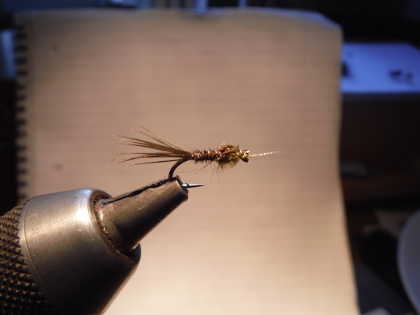
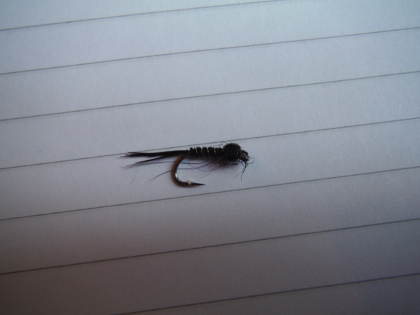
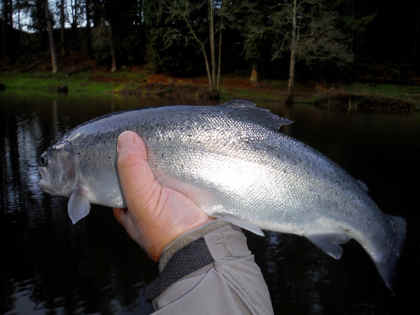
Olive PTN
Hook: Kamasan B175 or B170, 14 or occasionally 16.
Rib: Fine gold wire
Tail, abdomen and thorax cover: strands of olive-dyed cock pheasant tail
Thorax: Olive seal's fur, a few strands picked out with the dubbing needle
Black PTN
Hook: Kamasan B175 or B170, 14 or occasionally 16
Rib: Fine silver wire
Tail, abdomen and thorax cover: strands of black-dyed pheasant tail
Thorax: Black seal's fur, a few strands picked out with the dubbing needle
Despite the stocking levels in all these pools it can be difficult to rationalise an approach to this kind of trout fishing. At first some of the results don't make much sense. Most of the trout one catches may have been stocked days or weeks before, or possibly months, but rarely a year. What did they learn in that time? Some will be naïve, others extremely line and hook shy, having been pricked or caught and released before. Certain artificial patterns may have been over-used by you or other anglers. The lakes themselves vary from alkaline to acid, from open pools in rich pastures producing a huge crop of midges from the silt, to those surrounded by trees where insects blown to the surface form a large part of the sustenance available. Most of us like the idea of imitating a natural food source. The fish may have learned to feed on bloodworms and midge pupae/caddis larvae or hatching sedge pupae/ alder larvae/ damsel nymphs / olives / the fry of coarse fish / terrestrial insects blown to the surface by the wind - there is a long list of possibilities. Or, newly introduced, they may be looking only for the accustomed shower of artificial pellets arriving from above. Use of a marrow spoon provides some sort of clue, although I, like many others, tend to return my fish these days, so that avenue of experiment is usually closed. Occasionally there will be a direct correlation between observation and fishing method, such as hawthorn flies seen blown out of a lakeside tree on a spring morning, rises on the surface and the appropriate pattern taken. Such occasions tend to be the exception rather than the rule. Then there are the fundamental differences between rainbow trout and brown trout behaviour to be considered. The rainbow is a pelagic species, addicted to cruising the centre of the lake in shoals, usually on a circular patrol pattern. The depth at which rainbows swim is important, much more so than with brown trout. I carry a number of different lines when rainbow trout fishing, particularly if using a boat. At the same time, there are similarities in behaviour between the two species. Our Forest pool has always had a native population of wild brown trout, spawned in the feeder stream at its head. This month, despite the fact that they were out of season, several of them with great enthusiasm took the same lures and dry flies being fished for rainbows. So, in summary, the problem is complex but the methods described above do work at certain places and at certain times and there are certainly more experiments to be made. Why not give the small waters a try? Hopefully you may encounter and be intrigued by a " reassuring level of difficulty" as Bernard Cribbins once described his own fishing.
I'm sometimes mildly amused when people expect me to be tremendously enthusiastic to find they are fishing with a split cane fly rod. Several years ago one of a group of clients (a very nice chap, so I hope he won't mind me telling this story) arrived with a classic cane rod, a Hardy Palakona, received as a present from his family. Relatively new to the sport, he was struggling with it. Finally, making a wish to try out the Palakona my excuse, I borrowed it from him and handed him an entry level Sage in its place. You can guess what happened next. Behind me I heard: "Ooh, isn't it light!" And then: "Ooh, isn't it quick." Meanwhile I worked away with the Palakona and by modifying my timing managed to make some sort of fist of getting a line out. I can't say it was much fun. At the end of the session, my man was rather reluctant to give the Sage back and I bet he is using a carbon rod now.
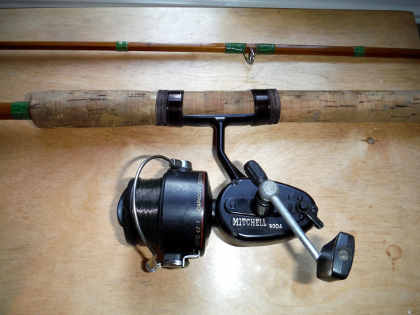
In fact I feel about split cane rods in much the same way as I would about, say, a single cylinder Norton motor cycle or an Austin-Healey sports car. I have owned both, and wouldn't mind doing so again. They have their charm but I certainly wouldn't use either for every day motoring now. Split cane rods were the norm when I began fishing, and I rapidly became used to the idea that all sorts of nasty things could happen to them. They had to be dried carefully, hung up in their bag, kept away from heat, never left leaning against a wall lest they take a set, re-varnished now and then. And the casting was....oh, so slow...although of course we didn't realise it at the time. Next came fibre glass and a particularly bad time for fly rod design. Some of these turned out to be even slower than the cane rods. Finally, some time in the early seventies, the space age reached the angling world and from that point rods got better and better. Thank God for carbon fibre; for my regular fishing I have never looked back.
That doesn't mean that I haven't been fond of cane rods in the past. There was that wonderful MK 4 carp rod, designed by Dick Walker. I bought the blanks and a kit of corks, ferrules and rings to build it up myself. Playing a big carp, you could feel it bend right down into the handle. That one was stolen at some time over the years. A stiffer version designed for pike fishing is still with me. They used to be paired with Mitchell 300 reels. Then there were the so-called Avon rods used for chub and tench, a couple of which I still have, hung up in their bags on the garage wall.
One split cane rod I do look at now and then, because it is mounted on pegs above the window of my study, is my first and only cane fly rod. It was a present from my parents when I was about 12. In truth, it's not much of a fly rod. From an obscure Austrian maker, it has an open whipping all the way up the blanks, usually said to be a sign of dubious build quality. It is 9 feet long, in three pieces, and originally came with a spare top. There was also a special spinning top which fitted directly into the butt section, thus creating a very short light spinning rod. These extra tops have long disappeared. Still, the rest of the rod has somehow followed me around over the years, and there it sits now, drooping on the pegs which have probably ruined what was left of its action, an old Ryobi reel screwed into the seat.
I first used that rod during a family holiday on Exmoor. It was a wet summer (remember those?) and the little rod turned out to be just right for what I was trying to do with it. You could see the grey torpedo shapes of salmon in the deep pools of the East Lyn, but further up on the moor, near Brendon, Malmsmead and Oare, I tramped for miles on open upland streams like the Badgworthy water and caught lots of little trout. Day tickets were mostly 5 shillings. I was fishing two wet flies down and across (a wet Coachman supplied by a shop in Lynmouth turned out to be the best pattern) and quickly found the sort of water where you could expect to see a flash of gold and experience a sudden pull as another 6 or 8 inch trout made its attack. I was using a level line, still available in those days, and actually not bad to cast with at short range. I met my first otter on that trip, coming in daylight down a side stream into the Doone Valley and carrying a trout in his mouth. More than 20 years later, I took one of my sons on an Easter camping trip back to Exmoor and we went fishing together, sharing the same little rod on some of the same streams. Again we caught lots of little trout. We had a cream tea at Cloud Farm. Only you could no longer buy a day ticket for 5 shillings.
The same rod accompanied me for the first time to a reservoir, and this must have been during the mid sixties. What else would I use; this was my only fly rod and I knew no better? We were bank fishing at Weirwood in Sussex, one of the early ones to open for rainbow fishing. Trout fishing for many of us in those days was something to do during the coarse fishing closed season. Later we had better rods, started to tie our own flies and fished the season through, but this was the beginning. Early April in thigh waders off a reservoir bank facing into the wind can be pretty daunting, particularly when you are wielding a delicate, soft little rod designed for streams. I can remember fishing one Easter holiday in a whirl of snow which cut out all vision, even to the bank behind me. We were using the kind of flies which tackle shops in those days sold to anglers planning to fish for rainbows: in other words, traditional sea trout patterns. Thus we were armed with the likes of Bloody Butcher, Teal Blue and Silver, Mallard and Claret, and of course Alexandra. Rainbow trout would occasionally take them, and that is as about as much as I can say for this fly selection. Hard work it was pulling wet flies in the wind and rain. After the first hour, the top section of the little rod started to take a set, a problem which was always to be present when it was worked too hard. Also, I found the rod sections tended to come loose - lesson: if you find yourself with a worn or loose ferrule, jam a blade of grass in it. After what seemed like 10 hours of continuously flogging the water I managed to cast a bit further out than usual and a rainbow pounced on my Butcher fly. The fish was probably not more than about 1.5 pounds, but the little rod was completely outclassed. It was bent double for about 20 seconds as the fish lunged to and fro before coming off. Reservoir trout fishing from the bank was a tough business I concluded on the way home.
The old Norton motor cycle (the one first mentioned) was thumping its way down the A3 towards Hampshire, still in darkness. The little split cane rod was lashed in its bag to the frame. Round the Devil's Punchbowl, just a few miles more of heath and I turned down a sandy track through oak woods to Waggoner's Wells. This chain of deep tree-shaded pools, near one of the sources of the River Wey, was named for the carts which were once driven into the water to tighten the rims on wooden wheels. Waggoner's Wells was then stocked at infrequent intervals with brown trout, modest fish which suited the little rod much better than rainbows. I think later it became a carp fishery. It was a quiet place in spring, often very cold in the early morning. You just showed up on the bank and fished; when the old bailiff turned up later, you gave him a pound and he wrote you out a ticket. Sometimes he took your pound and didn't write a ticket. I used to fish under the trees, sometimes crouched on a stump which leaned out over deep water, roll casting. The fish were on the bottom and close in. We had discovered nymphs and a long leader, and would creep Tom Ivens' Green and Brown Nymph or Sawyer's PTN very slowly along the bottom in a series of twitches until the leader pulled back. We usually got a few and I'm still doing this sort of fishing at times.
It was a hot August day in Cornwall and I was fishing the River Camel, trying for a brown trout with a fly spoon. In a deep pool buried in the woods, I was casting with the little rod, this time equipped with the short spinning top and a small fixed spool reel. A lady was with me, reading a book and, to be honest, yawning occasionally. I was fascinated with this river, which contained a lot more than small brown trout. I thought I had seen a shoal of sea trout, but these turned out to be mullet. Now I made a cast and promptly got the bale arm of the reel tangled in the nettles I was standing among. I took a minute to sort that out, reeled in and found that the spinner was fast in the bottom. I gave a couple of pulls and the bottom began to move. Out of the blackness and into the sunlit part of the pool came a great fish swimming lazily in a circle, terrifying to me in its beauty and size. I had never caught a salmon. "My God," I shouted, when I got my breath back. "Look at that! Look! It's as long as the bumper of our car!" The car was a Ford Cortina at the time, and the fish probably wasn't quite as long as that, but you will forgive me for a little exaggeration, I am sure. The lady didn't look up but only said, rather heartlessly I thought: "I'm bored. Can't we go now?" Seemingly I had totally failed to convey my sense of excitement. And at that moment, almost with an audible ping, the fly-spoon came free and flew back over my shoulder. The giant fish disappeared from sight and the bottom fell out of my world for a while. Ah well, there are girls you can and girls you can't take fishing. Should you take a girl fishing on the first date? Now there's a question. I know a chap who did and it actually worked out, believe it or not. But on this occasion I concluded here was a lesson that one should not mix one's passions.
You might not expect to find rainbow trout in the tropics, but high above the jungles of Sri Lanka, 7,000 feet above the sea, is a strange and isolated plateau called Horton Plains. It is an amazing place, looking rather like the Scottish highlands, where tourists come to the appropriately named World's End in order to gaze down on the tops of clouds hiding the forests below. In fact these highlands have a climate rather like that of Scotland on a hot day, with very occasional night frosts. The Plains were famous once for their game, boasting 1,000 head of elephant, leopards, deer and many other species. Victorian Englishmen made short work of shooting the elephants, although a few leopards were still present when I visited. This was the time of Mrs Bandaranaike's financial restrictions on imports and fuel, so Sri Lankans were finding it expensive to drive around; luckily I had borrowed an ancient Vauxhall Velox from my hosts in Nuwara Eliya to get up there. Apart from World's End, Horton Plains was a very quiet place at that time. I had a reason to be there, though. Although they had hunted out the elephants, those same Victorian Englishmen, ever ready to experiment with new species, had stocked the Plains rivers with rainbow trout and these still remained, a natural breeding population. The only other person fishing for them when I visited was a gentle old American missionary, a dry fly man, who used to come up a couple of times a year for a week's holiday and stayed across the Plains at the Far Inn.
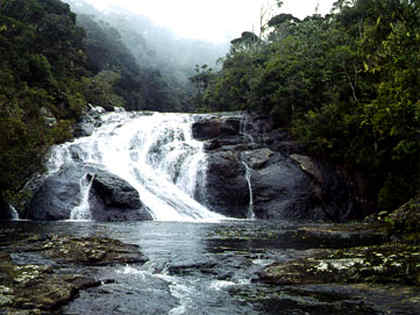
You might have guessed it: the little cane rod was the one selected to make this journey with me. Rack my brains as I might, I can't remember the fly I was using. I do remember the wildness of the rivers, deep pools studded with grey rocks and with one great plunge of white water - Baker's Falls, which were named after a British Governor. In places on the bank were pits made by illegal gem diggers looking for emeralds. The names on the map I had been issued with were fascinating: Black Leopard Dam, Elephant Bank Pool, English and Sinhalese names mixed. And I did catch fish, including lots of very aggressive little rainbows which were a strangely dark purple colour and one old cock fish of nearly 2 pounds, later curried by the cook at Nuwara Eliya’s Hill Club.
Very early on a summer morning, I was swimming in a pool formed by damming a mountain stream. The place was surrounded by beech woods with high peaks above. I was tired after a couple of days driving south and there was still a long trip in prospect. The last part had been a rather fancifully romantic journey, the route prompted in no small part by Ernest Hemingway's novel The Sun also Rises (or sometimes Fiesta). So, travelling like Hemingway's hero Jake, on his way from Paris to Pamplona, we had followed the Basque Country mountain roads, through the pass of Roncesvalles, out of France into Spain, at last up to Berguete. In 1925 Hemingway himself had come here to fish the Irati stream, using a worm I believe. The water was cool, clear and refreshing and there was room to swim a few strokes across the pool. Just as I got out, I distinctly saw a trout jump at the undisturbed far end. Back through the campsite I went to my family, still fast asleep in the tent by the Landrover, and grabbed the little rod. A small Black Spider seemed a good idea to put on the leader. And I had a good take at the very first try, which turned out to be from my one and only Pyrenean trout, a pounder very handsomely coloured in green and gold. I think that must have been the little rod's finest hour.
I returned the fish and later that day we went down to Pamplona where the San Fermines festival was still on, and where a drunken American tried to pick a fight with me. He certainly seemed to have read more than enough Hemingway. Later in Navarre we saw griffon vultures nesting on cliffs and by the river at Puente La Reina a family of gypsies were cooking a hedgehog on a wood fire. Over the next three weeks we travelled right across the burning plains of Castile and La Mancha in the summer heat, eventually to Gibraltar. My sons caught more than their own weight of wild carp in the river Tagus at Toledo by using floating crust. On the way back, the Landrover was broken into near Salamanca and I lost a Wheatley fly box and a Hardy reel, amongst other things. The little cane rod, however, was still there when we got back to England; presumably it was not worth stealing.
On a Sunday morning in early spring, several months after the agreement at Dayton, I wandered into the office. We were housed in one of the twin UNIS towers, which were a bit shot up like every other tall block in this burned out city. However, it was habitable in the lower part and we even had the original dark green glass rather than plastic sheet in some of the windows. Garcia was having coffee with Emad, the night radio operator, before he went home. Garcia and I exchanged our accustomed greeting, this being "No Pasaran!" and a high five, the reference being to unwanted visits from Geneva senior management. "It's very quiet," he said. We were all quite unaccustomed to this. For the last 4 years, Sunday had been more or less the same as any other day in a period which now seems, looking back, a confused blur of trucks, convoys, checkpoints, too much adrenalin, too much slivovitz, bloody minded local soldiers and politicians, together with, at times, equally bloody minded international soldiers, diplomats and humanitarians. From the point of view of the UN and the NGOs, being fired at without being able to shoot back is not a good recipe for the temper. There were a few high points, such as managing to get food trucks into an enclave with the population not too far away from starvation. First you would meet ragged soldiers at the frontline checkpoint, initially suspicious before pulling barricades and sniper screens aside, and shortly afterwards find yourself driving between lines of applauding civilians crowding either side of the road.
But now Garcia was right and the situation had surely changed. All we could hear the rhythmic hiss, hiss, hiss of the VHF receiver scanning along a dozen channels with no traffic on any of them. The antenna was strung across to the neighbouring tower and there was a relay on Mount Vlasic covering most of the country which would open with a pronounced click if anybody wished to transmit. This morning, however, there was no traffic. It still seemed strange, even though there was an agreement, even though NATO was deployed, strange to believe that this latest ceasefire might actually last. Nevertheless, we were coming to believe in it, in spite of ourselves. The blockade running days were over. We might even have time off on Sundays. Garcia wanted to go out for a pizza, something you couldn't do in Sarajevo 6 months before. I had another idea. "I'm going fishing," I said.
The little rod, regarded as expendable, had been kicking around in the back of various white 4WDs for four years, along with snow chains, ration packs, flak jacket and helmet. The last two items were rarely worn and in fact were regarded by most of us as an irritating liability. You had to have them with you and you had to be responsible for not getting them stolen. Every soldier at every checkpoint liked the idea of owning a flak jacket. If it was stolen while your back was turned, at the end of your contract you had its value deducted from your final salary payment. Kevlar jackets were around 1,000 dollars and I was already due for a radio hand set I had mislaid. I drove the Patrol out to Trnovo municipality, a little south and east from Sarajevo...and I put my hand up right now for using a UN vehicle for private purposes. Let's call it a monitoring trip. Near Trnovo I had seen a small reservoir, which somebody told me had been stocked with trout before the war. Could any of them have survived the intervening years of illegal fishing during which a tossed bomb had been the favoured method? When a whole country is living on humanitarian aid, fish in rivers and lakes aren't given much respite. I was told Michael Rose and his bodyguard went fly fishing in the Bosna river, but I hadn't done much over the last few years. With the little rod I had caught some dace and a very small grayling in the Drina above Gorazde, and a couple of brown trout from Mostar’s limestone Neretva, deep in its canyon. And I had naturally enough become interested in the International Rescue Committee's income generation project to restart the trout farm at Blagaj. One large mortar shell in the main production tank had put paid to that idea and the East Mostar market was flooded with small rainbows for a week. Also, generally speaking, wandering off fishing while leaving a white vehicle in a lonely spot was a very unwise thing to do in wartime (the office became really upset when the car was stolen). A final disincentive was that river banks, as a natural defensive line, were frequently mined during the ebb and flow of conflict and local forces rarely kept maps. The last matter is going to be a lethal problem for years to come.
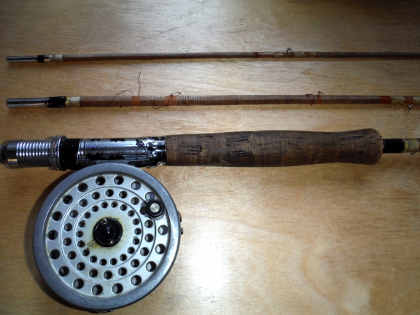
Halfway up the reservoir I parked the car and began to make up the tackle. The ceasefire map had left this small patch of water in an interesting position. I could see the Bosnian government flag flying from the buildings on the dam and on the road at the head, just around the corner, was another military post showing the Bosnian Serb flag. Soldiers watched with interest tinged with some amusement as I began to cast but nobody came over. If I learned one thing in this country it is never to ask permission for any action if not strictly needed, because it only invites the answer "No" In fact that's pretty good advice everywhere. And if it had been a working day, I might have worried myself about whether they were carrying long barrelled weapons in the Zone of Separation or any other such breach of the Agreement. But this was Sunday; I didn't bother them and they didn't bother me. I was fishing a Black and Peacock spider and I can tell you now that I fished for four very pleasant hours without a single take or even sight of a fish. Still, it was good to be out in the sunshine and getting my casting action back in. A couple of days later, one of our drivers mentioned to me that, only the week before, he had seen the reservoir drained right down to bare mud. It had just been refilled and could surely have contained no fish at all when I was there. I decided I didn't really mind.
That was 20 years ago and the last time the little rod was used. Now it sits, all these years later, gathering dust up on the wall. I notice most of the rings, several times replaced by me, have again become worn and grooved. It is really worthless and I have no intention of using it again. On the far side of the room there is a stack of carbon rods in tubes. These are the ones I use now: mostly Greys, a few by Hardy, an Enigma, a Japanese Tenkara, and some very expensive American ones. I only hope that, when I finally pop off, my wife doesn't sell them for what I told her I paid for them. But it's good to see the little cane rod up there; I would hate to say goodbye to it.
Tight lines and all best wishes to fishing friends for 2016.
Oliver Burch www.wyevalleyflyfishing.com
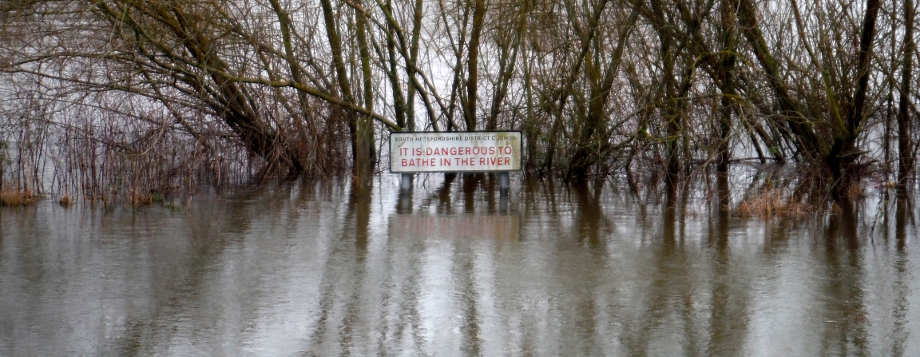
November 2015
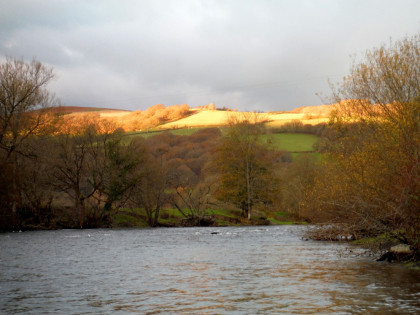
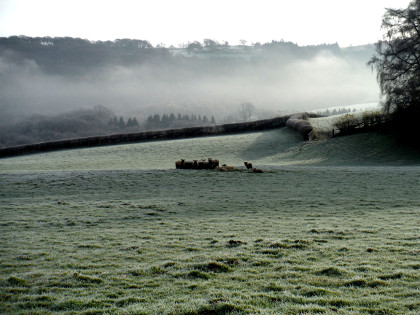
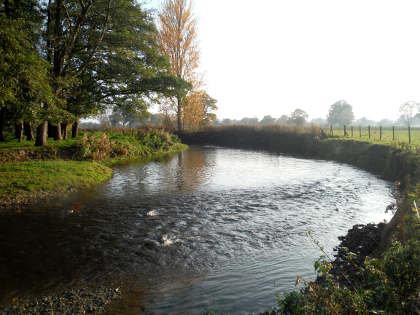
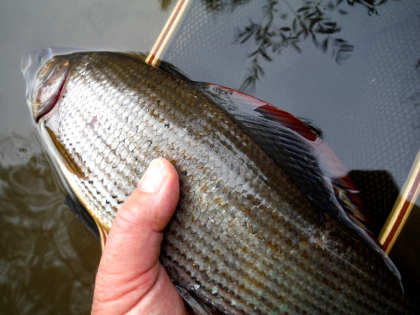
November rains brought a much needed end to what had become quite an extended drought affecting most of our rivers. As far as I could see, the salmon never quite made it in numbers to the very top of the Wye, or into the tributaries, at least until the extended season (to 25th October) was over. By the end of October, however, they were there all right, both in the upper river above Rhayader and in the Irfon. Over on the Loughor, the weeks of low water had led to an outbreak of saprolegnia fungus on migratory fish. I'm careful not to use that stark term UDN until it's proved in the laboratory, but as with cholera there are similar conditions which are equally nasty to those affected. This seems to have been quite a serious outbreak with dead and diseased fish being found in the river between Pontardulais and Ammanford. NRW visited the river and took away corpses of salmon and sewin to 18 pounds for examination. At the same time a number of the sewin and salmon fishers of South and West Wales are feeling somewhat gloomy at the moment as discussions between clubs and NRW have made it clear that, following analysis of the 2014 results, a blanket "no-kill" policy as on the Wye is being considered for a number of Welsh rivers. As usual there are dark remarks about "...giving up fishing if I can't take one home for the table." It hasn't proved to be so elsewhere.
As November came in the weather stayed remarkably warm, but it began to rain and it kept on raining. The rivers took a few days to rise but eventually almost every stretch where a grayling might be caught was in flood. Over time the main Wye ran greenish clear once the silt and muck was washed away, but the water continued at flood levels. Except for a couple of frosty mornings, the mild temperatures persisted. There were fishing opportunities now and then on a few of the tributaries,but not so many - congratulations to those who tried. This month I found myself envying some of the barbel fishermen, who were after a species which quite appreciates flood water provided it is reasonably warm. Without wishing to steal Adam Fisher's thunder, look at this report: RD from Craven Arms fished Middle Hill Court on the 11th November with the river 3 to 4 feet up and coloured, warm and overcast weather, and took a dozen barbel and a chub on meat baits. 6 of the barbel were over 8 pounds and the best was 9.4 pounds. What sport! Imagine catching grayling like that with a coloured river 3 to 4 feet up. I am thinking RD of Craven Arms must know what he is doing!
Now to the grayling. On the 30th October, IT from Dunstable with a friend fished the Glyndwr Preserve on the Dee in N Wales over 2 days and had 40 grayling to 1.75 pounds, mostly on nymphs. On the 31st , AS from Newent fished the Lugg at Mortimer’s Cross and had a dozen. MH from Hereford was on the same beat next day and had 15 small ones. On the 4th November HW from Penclawdd fished the upper Wye at Craig Llyn and had 22. On the 5th MC from Gorsley trotted the Arrow at the Leen and got 13 grayling. By now, however, the rain began to affect fishing almost everywhere. On the 16th AS from Newent found the level reasonable in the Dore at Chanstone Court and went on to get 5 grayling to 15 inches, and on the 24th he tried the Llynfi at Pontithiel and got 9 grayling to 17 inches. This certainly seemed like good fishing in difficult circumstances. In answer to GB from Ledbury whose friend was broken by a large unseen fish at Cefnllysgwynne on the Irfon – yes indeed, winter salmon can certainly become quite interested in maggots. If you find out of season salmon in the vicinity while trotting for grayling, the best advice is to move operations elsewhere to avoid an unwanted connection. The spawning beds should be left in peace as much as possible.
Otherwise, there has been little to report from the rivers. Slightly to my surprise I found the little Bideford Brook in the Forest of Dean was low enough for a couple of days to undertake the winter trimming visit and the monthly sample of invertebrate life for the River Fly Partnership. I was also able to fish the Lugg once and later the Irfon in high water. Otherwise, I kept myself reasonably happy with some rainbow trout fishing in Forest lakes, which get plenty of visits from me when the rivers are in flood. I don't have a dog to walk, so I go fishing to get some fresh air; while the rivers are up I don't despise having a few casts at stocked rainbows. In the Forest of Dean we are lucky in having a number of old hammer ponds which over many years have been pressed into service as trout pools for both syndicates and commercial fisheries. This month was so warm that the fish were high in the water and I was able to catch quite a number on dry flies presented amongst the dead leaves blowing along the surface. A greased-up Sedgehog fished static always works well at one pool shaded by giant Douglas Firs, although I have never been quite sure why. A washing line set up, suspending a light herl bodied buzzer on a dropper between the floating line and a dry fly was also very effective. In recent years we have been able to fish the top of the water in these lakes right through until Christmas and beyond.
I realised from a conversation the other day with Seth at the Foundation that there was a significant omission from the discussion of leader materials last month. This is the vexed question of what to do about twisted tippets when fishing a dry fly. Why does it happen? Well, one reason could be that you just hooked up into a leaf and tried to cast it off. Such a whirring propeller will twist a tippet as quickly as if it was hooked onto an electric drill. Another might be that you are using rather too fine a tippet for a largish fly, which tends to rotate as you cast. As a rough rule of thumb, 6X tippet goes with size 18 or 20 flies, 5X with size 14 and 16, 4X with size 10 and 12. I have been known to use 3X with a big mayfly or daddy pattern. The fly itself might be tied out of balance, thus promoting rotation. Seth and I agreed that we both often have trouble with the standard Adams pattern with its 45 degree splayed hackle tip wings. The parachute version of the Adams is much less prone to spinning on the tippet. Attempting to hurry the cast, perhaps punching into a head wind with tight, snappy loops, is another way of making the rotation problem worse. Slowing everything down and settling for more open loops may improve the situation. Limp tippet material such as copolymer is much more inclined to twist than stiffer standard nylon, and once a tippet has been twisted up and then painstakingly unwound, it will probably happen again. Changing the tippet for something more suitable is the usual and best solution. Otherwise, attached to my vest, I have a couple of pads of rubber mounted on fancy leather by Hardy or Bennechi which are intended to straighten up kinked tippets. All you really need in your pocket are a couple of 2 inch squares of rubber cut from an old inner tube. Pull any piece of nylon slowly through those and it will come out more or less straight.
One other leader material which I might have mentioned is that magic stuff known as Power Gum or Shock Gum. This has been available since way back in the seventies when it used to be sold by the spool. This is best described as a sort of artificial elastic which stretches until it reaches about 180% of its original length, when it quite suddenly locks up. It makes a very effective shock absorber and a protection against sudden smash takes. Effectively it means you can use a tippet thickness perhaps one size smaller than would otherwise be safe. The late John Goddard used to be very keen on this for his chalk stream fishing and I have it permanently incorporated in the floating lines I use for rainbow trout. Roman Moser now markets it in lengths of about 3.5 inches with a loop on either end. These fit easily between a braided loop on the fly line and a loop on the butt end of the leader. Test it for strength now and then - it eventually decays.
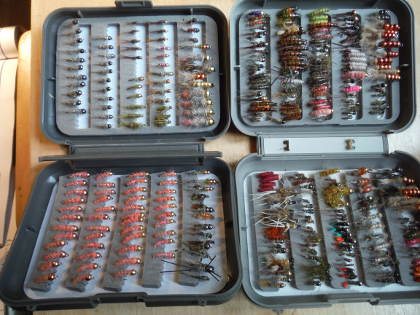
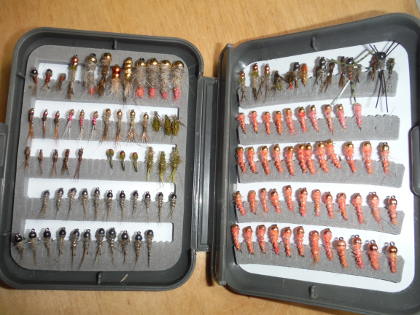
I thought it might be a good idea about now to write something about fishing with heavy nymphs. The problem I have here is that this particular branch of the sport is evolving faster than any other, very much driven by competition fishing and at the moment involving much international interchange of ideas. If somebody were to write a new book on the subject right now, it would probably have to be entitled something like: European Heavy Nymphing - the Story so Far. Of course competition has always fuelled development and this is natural enough. We would not have had disc brakes on our road cars during the sixties if Jaguar had not raced their cars at Le Mans with them during the fifties. For that matter, and to continue the technical analogy, armed conflict is an even more compelling form of competition leading to development; the power output of the piston driven aero engine increased by around 200% between 1939 and 1945. The fact is that for the moment, heavy nymphing, or as it is usually rather misnamed "Czech Nymphing" (because let's not leave the Polish gentlemen out of this) tends to rest in the hands of a younger generation of anglers who choose to fish to competition rules and who are in contact with other exponents elsewhere in Europe. They are as likely to buy their rods from the Czech Republic as from Hardy's and the leaders and other specialised items are still in the hands of niche suppliers. It won't always be so; in another decade or two this will be the mainstream of river fly fishing.
The history of the sport has always been one of fashions and at times you can almost tell an angler's age by his preferred "comfort zone" fishing method. For me, it has always been a subject of some regret that more old-fashioned methods tend to be overlooked as new techniques take over. I reason that if something worked 50 or 100 years ago, it will probably work today in the right circumstances. But I will also be the first to admit that the technique of leading a team of flies along the bottom close behind the rod tip, first shown in the UK by the Polish and Czech teams when they came to fish the Welsh Dee in 1990, is highly effective and has made a huge impact. Oliver Edwards, about as traditional a Yorkshire angler as you will find, to his credit recognized the revolutionary importance of the method as soon as he saw it and was quick to learn it and become an enthusiastic exponent. A lot has changed since the 1990s, in that the method has been evolving into what seem to be several different directions: ever longer and more sensitive rods, different ideas about flies and bite indication, fly lines which seem to be becoming more or less redundant, fishing with braid, and in particular the very long or "French" leaders.
With all this in mind, before writing this piece it seemed a good idea to have a chat with my old friend Rob Evans to find out about the current ideas. Rob has had a fair amount of competition experience, is still in touch with people in that scene, and has fished in the Czech Republic with some of the main international exponents. If I want to know what the young lions are doing, I ask Rob. Perhaps more to the point, I find him fascinating to watch when tickling a team of nymphs slowly along the bottom. Almost anybody can hit a trout or grayling which takes a nymph hard in a fast run; Rob seems to be able to detect bites which are merely tremors on the leader when the flies are barely moving. So we met for an October day's fishing on the Wye at Doldowlod, but began with a chat over what I like to call a "grayling fishers' breakfast" at Builth Wells. This cooked meal includes fried bread, eggs, bacon, tomatoes and black pudding and might also be known as a heart attack special, but it's just the thing before a day standing in cold water! After talking it all through and finishing the coffee, we went on to the river, to which we each took a pair of rods made up for both dry fly and nymphing. As it turned out, this was more of a dry fly day, but the discussion and comparison of nymphing methods turned out to be instructive for me.
These days I find I am using three heavy nymphing techniques, two of which, in the interests of simplicity, are deliberately slightly "crude." Firstly, for smaller rivers such as the Arrow and Lugg, overhung with alders and willows but with deep holes containing grayling over a gravel bed, I use either an 8 foot or a 9 foot four weight rod, short enough to help me flick a pair of weighted nymphs forward under the branches. In these places I find the normal 10 foot long nymphing rod too much of an encumbrance. The leader is a straight through piece of 5X or 6X fluorocarbon, about a foot less than the rod in length, tied to the loop on the end of the fly line. A single dropper is tied 18 or 20 inches up from the point. I find that two flies are enough for this kind of fishing in tight spots. I do use an indicator, usually one of the egg shaped polystyrene type locked in place with a cocktail stick peg (you can try it without an indicator by watching the leader for bites, but believe me, it's difficult). I think this outfit is quite complicated enough for making your way up what is usually an overgrown channel, in character very like one of the WUF's smaller "wild streams." This is a roving, rough kind of fishing, exploring every deep hole and fast run. The system does work and a big Arrow grayling is tremendous fun when played at close quarters on an 8 foot 4 weight rod.
(But note that this system is, I think, a bit too heavy and crude for a really small stream especially during low water. So for example I find that in the Escley Brook or the Dore, or indeed any of the really small wild streams, I manage much better with a light system involving a single nymph cast upstream on a tapered leader, watching the leader itself for takes. Single nymph and tapered leader is in fact the kind of light chalk stream nymphing that Frank Sawyer and Oliver Kite would have been familiar with. A nymph under a dry fly would be an obvious alternative in these circumstances.)
Secondly, for when a client is interested in learning the heavy nymphing technique for the first time on an open stretch of the main river, I usually offer a 10 foot 4 weight rod with a nice soft action, in this case also made up with a straight-through fluorocarbon leader and a movable indicator. This is a simple system designed as a first step in learning. Again, I find that two heavy flies are usually enough to deal with when practising the necessary overhead lob and leading the nymphs downstream behind the tip of the rod. There are certain mistakes almost everybody makes when trying to learn the technique: having too much fly line out and trying to fish at too great a distance, being tempted to try back and forth overhead casting with the nymphs in the traditional manner (resulting in disastrous tangles), allowing the fly line to drag on the surface (thus pulling the nymphs up from the bottom), failing to keep the rod tip leading the flies downstream so that they get ahead of the rod (so no bite indication), being uncertain when to strike (which of course is whenever you are in doubt), failing to make a mandatory strike leading into a new upstream lob when the flies have completed their downstream run, striking upwards (which causes no end of tangles) rather than downstream parallel with the surface, and generally failing to cover the river bed systematically. Eventually, after a fish ortwo has been successfully contacted, confidence grows and the novice gets into the rhythm of the method. It is, I suppose, a very repetitive procedure, but then so is casting a dry fly or a team of wets.
However, I doubt if many fully experienced nymph anglers today will be fishing exactly as I have just described. Firstly, there is the matter of the indicator attached to the leader. Competition rules outlaw this and Eastern European anglers generally disdain it – a new form of snobbery has been evolved about the use of separate indicators which is almost equivalent to Halford's upstream dry fly cult. Instead of a cocktail stick indicator or a piece of yarn, you are more likely to find a piece of coloured fine braid or nylon incorporated in the leader or possibly a dummy dry fly. To my mind, an indicator is an indicator, however you might contrive it. A more important point to bear in mind though, is that indicators or any encumbrance on the leader, if over-large, create surface drag. Always remember that the current at the surface is likely to be running at three times the speed of the water at the bottom of the river. Therefore the drag on an over thick leader or bulky indicator will tend to pull the flies up off the bottom of the river. In order to counteract that tendency, it will be necessary to use heavier flies and thus the whole system becomes much clumsier and less sensitive.
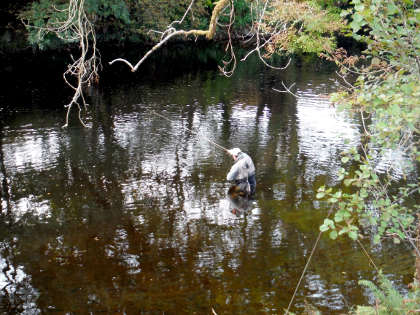
Next, the modern nymphing rod is now likely to be not a 4 weight, but a 10 foot 3 weight, or possibly even a 2 weight. When East European style nymph fishing arrived in this country, such rods weren’t available and the choice of 10 foot 4 weights was very limited. Now most manufacturers are offering very fine and sensitive rods of this type. In fact the difference between a 4 weight and a 3 weight with a long sensitive tip is considerable and makes a tremendous difference to "feeling" for delicate bites. It also makes playing quite large fish at close quarters an enjoyable experience, without putting overmuch strain on hook holds. This reminds me of a story. When I got my first 10 foot 3 weight, armed in this case with a French leader, I wondered whether it would be in any good for fishing a team of spiders. I made the experiment one September day on the upper Wye and came to the conclusion that it did the job tolerably well although it would be very difficult in any kind of contrary wind. For this reason, I would stick to my 4 weight for spiders in future. But while I was thinking all this through and still engaged in fishing one of our larger pools, there came the unmistakable long pull of a salmon which had come up and grabbed one of the spiders. Oh my Lord! What on earth to do now? Well, it turned out on this occasion there wasn't much I could do. Some salmon take their time in such circumstances, but of course this had to be a hot one. Off it went down my side, across the tail of the pool and then up the other side until it had drowned not only the long leader but nearly all the fly line in a huge curve. The little Airflo reel was discharging with a high pitched whining sound, such as it has not made before or since. The salmon jumped twice, showing me that it was a bronzed fish in the high teens of pounds, and then on the third try it jumped itself off. Interesting times, but clearly a 10 foot 3 weight was not right for that kind of work.
Let's make a comparison of the two nymphing outfits which Rob and I took to the upper Wye on this October day. I was using a 10 foot 3 weight Greys Streamflex XF2 rod (survivor of the adventure described above). Rob was using a 10 foot 3 weight Hanak rod, but he also likes and often fishes with an 11 foot 3 weight Sage ESN which we ordered for him especially from the USA. We both had small reels of appropriate weight and fly lines which, to be honest, have little significant effect on the procedure. Come to think of it, I rarely see my fly line. This is because we were both using French leaders and mine was no less than 40 feet long. This idea of very long tapered leaders was originally developed by anglers who fished at range for very nervous and easily spooked fish in the clear, shallow water of Normandy chalk streams. When I got my first one, I tried it out in high summer low water conditions and found that it could be used with the 3 weight rod to switch flies ahead with a kind of modified roll cast (it is the equivalent of about a 2 weight line). At that time, I wasn’t convinced that this ultra-light outfit would very often be necessary or useful to my own fishing. Since then, like many nymph fishermen, I have changed my view. The great thing about the long French leader is that it gives you the option of fishing either at range or close to, without making any tackle alterations. My 40 foot leader is not now compliant with FIPS Mouche competition rules, which limit leaders to twice the length of the rod. This troubles me not at all – the rule-making committee of the Federation Internationale de Peche Sportive Mouche moves in a way which is far too mysterious for me. Rob had a 6 metre leader attached which would just about fit the rules.
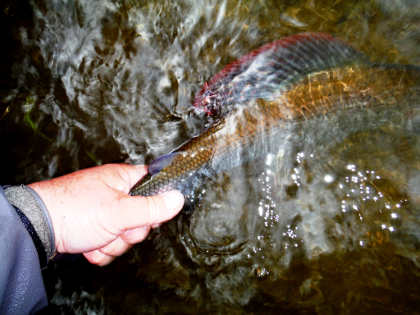
There was also a difference in the indicators we were using, although I think both these would have been competition legal. The end of my leader was nail knotted to 3 feet of very fine braid which faded from fluorescent orange into yellow/green to take advantage of varying light conditions, marked at intervals by black bands to aid visibility against the surface, and ending in a 1mm ring for attachment of the tippet. Rob’s indicator was similar, but of only about half the length. I had a tippet of about 5 feet of fluorocarbon and two weighted flies about 20 inches apart. Rob was using three flies, as he usually does, the heaviest at the point, and somewhat closer together on the leader. Some exponents like to fish the heaviest fly on the middle dropper, in order to try to bring all the flies close to the bottom. Both Rob and I are slightly uncomfortable with that, feeling that it leads to more tangles. Others still like to fish a heavy fly on the top dropper, thus bringing the indicator quickly into play after casting. There is also the vexed matter of dropper attachment and avoiding tangles round the main line. I have been shown a number of dodges and special knots to try and avoid this. Rob used to attach his droppers to tiny plastic bobbins, free to spin around the main line and positioned by a knot put in place for the purpose. I now find that by using 5X rather than 6X leader material, I can attach droppers with an ordinary three turn water knot without undue twisting, and have come to accept the slight handicap of the thicker leader. Rob tends to use 6X. I use Riverge Grand Max fluorocarbon while Rob likes Stroft ABR.
Rob and I do seem to disagree to some extent rather about flies. Czech nymphs, strictly speaking and as a pattern, are slim-line imitations of caseless caddis species such as hydropsyche tied on curved grub hooks. I have a fine collection tied up from various patterns picked up in magazines and books over the years and always very much liked the look of them; however, for some reason neither of us have found these particularly useful on the Wye although the naturals exist in numbers. Most of our current flies are recognizably imitations of either baetis nymphs or gammarus shrimps. Over the years I amassed a large collection of various weighted bugs, but eventually came to the conclusion that presentation is more important than imitation and that I needed just three patterns, or possibly four. These are:
Tungsten Hare's Ear – a small, dark baetis nymph imitation with a black tungsten bead, dressed in size 14 or occasionally 12.
Pink Shrimp – a bright pink gammarus imitation which trout seem to take nearly as often as grayling. I carry them in size 12 and 10, and with both tungsten and brass beads – so effectively in 4 different weights.
Sawyer's PTN – everybody knows this classic pattern tied and weighted with fine copper wire. On its own it would not have sufficient weight to fish the bottom effectively on our streams, but when I fish a third fly on the top dropper, this is the one I use, typically in size 16. The other two flies on the leader have the weight to pull it down, and the idea is that it will wave around just above the bottom.
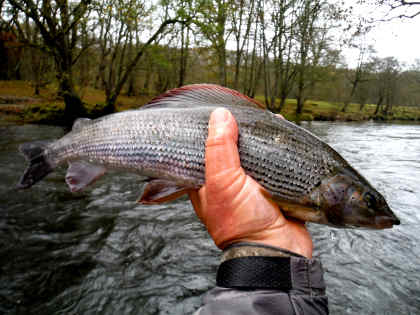
Hare's Ear Bomb - this is the pattern I hesitated over above. But just now and then, it seems to me, one comes across a situation where something really heavy is needed in extremis. It's dressed on a size 8 grub hook with the hare's ear body dressed over four or even five 5mm tungsten beads. (Rob thinks this one is very crude by the way). In theory it is intended as a sacrificial fly, to get the other flies on the leader down to the desired depth, but grayling certainly do take it. I can remember standing in the Wye changing the dropper one winter day and distinctly seeing a big grayling whirl up from the murk and grab the trailing Bomb on the point. I played it with my left hand wrapped round the leader and counted it a fair catch.
Most of Rob's flies are of the baetis nymph shape, but he has a lot of variations and many of them incorporate flashes of colour. He does believe that fly pattern matters and experiments a lot. On the other hand, he fishes a lot of hard-fished club waters such as the rivers of the South Wales valleys and the Dee at Llangollen, where I can well believe that fish get "picky." Most WUF beats are not so very intensively fished. Interestingly, he reserves the Pink Shrimp for very cold weather after Christmas. On the other hand I find the Shrimp works well from September on for both trout and grayling, particularly on the Lugg and Arrow. Rob has great faith in one particular nymph tied with a collar of vivid purple fluorescent material. This colour is almost indescribably lurid; I can only compare it to those violet neon signs outside Balkan truck-stop night clubs, with which I hope you are not familiar. You wouldn't think that any respectable grayling would go near it, but apparently they do.
As I mentioned above, this really turned out to be a dry fly day at Doldowlod, with fish rising all through. But Rob tried my nymphing outfit for size and pronounced it good. And then I had a difficult patch with a tricky fish, rising quite regularly in a gutter, which came up to, but refused, a whole series of dry flies in a row. Having started him on a Grayling Steel Blue, which he mouthed for a split second, I tried him on a Red Tag, John Storey and finally an Orange Otter all of which he swirled under without touching. I had a wonderful view of the whole thing. Eventually I lost my patience and called Rob in with his nymphs, who hooked the grayling on the second pass; at least I believe it was the same fish. Which must stand for something, surely?
As we walked back to the cars at the end of an excellent day, I teased my friend a bit on the subject of Japanese Tenkara fishing. I consider that these match angling guys are a bit like the lilies of the field...in that they Tenkara not, nor do they trot. Let alone spin. So I raised the question of why, since we have all moved to long flexible rods, lobbed nymphs and no fly line on the water, hadn’t we taken the next logical step of abandoning the weight of the rod rings and the reel, adding another couple of feet to the rod and using a fixed length leader attached to the rod tip? In other words, why weren't we fishing Tenkara-style today? Rob gave it some thought and then asked: "Well be honest now, how well can you manage a big grayling hooked on a fixed line?" Now I do fish with Tenkara tackle sometimes and told him, with reasonable honesty: "It's actually no bother at all. You just let the flexibility of the rod absorb everything, including the power of a good fish." After some more thought and remembering certain anxious moments, I added: "Mind you, there's a knack to persuading it to swim into the net at the end of it all." But I think my question to him was a good one and Tenkara is a subject for another occasion.
I have found a few books to read this winter – something else to keep me happy when rivers are in flood. Jean at Sweet's Tackle Shop came up with a copy of CV Hancock's Rod in Hand, which is one I have been trying to hunt down for quite a while. I am reading this right now and it is a real delight. I am surprised it has not been reprinted. Hancock was the angling correspondent of the Birmingham Post, knew our border rivers well and his book is mostly an account of his angling experiences with just a little advice thrown in. It was published in 1959 and includes vivid portraits of still famous border angling names: Herbert Hatton, the Hereford tackle dealer, explaining his theory of how to scare off bulls by imitating a gad fly; the Reverend Edward Powell and his dry flies; Ted Coombes of Tenbury Wells tying up some Red Tags while his customer waited, using a feather he had just plucked from a stuffed peacock in the hall; and yet another version of the invention of Harry Powell’s Dogsbody. There is a photograph of Hancock during the 1930s fishing the Lugg by the bridge at Lyepole – a familiar and much-loved location for many of us.
Jean also found me Sunshine and the Dry Fly by JW Dunne, a chalk stream classic of its kind from 1924. So far I have mixed feelings about this one, which is very much steeped in the exact imitation theory of early 20th century chalk stream dry fly fishing. Early on the bug-hunting Dunne probes deep into the mystery of the blue-winged olive, goes on to challenge Halford, turns to pale wateries and ends up, it seems to me, by out- Halfording Halford, concluding with yet another little lecture on angling ethics. Like Halford, he provides a list of imitative dry flies, with exact, literally turn by turn, instructions for tying them after obtaining the materials from a manufacturer specified by himself. I got as far as this:
"I had brought home with me, one evening, a glass jar containing five newly-hatched pale-watery female duns. They were baetis flies; but I see I have omitted to note whether scambus or binoculatus. (There were no vertical nervures in the hind wings; but I do not know whether the absence of this characteristic is peculiar to Baetis scambus. Halford is dumb here)."
And that is about where I put the book down with a yawn and the overwhelming thought that life, even an angler's life, is just too short for this sort of thing. And also that of course Halford would have been dumb on the subject; he had been dead since 1914. About the time that Dunne was writing this material, Harry Plunket Greene was cheerfully fishing the same chalk streams using his favourite little winged Iron Blue pattern nearly all the time and apparently doing well enough. I suppose that a difficult mid-summer evening on the Usk with picky trout refusing every fly in the box might make me pick Dunne's book up again. John William Dunne, born into an Anglo-Irish aristocratic family, was a well-connected, unusual and very intellectual sort of chap, a soldier, an early aeronautical engineer (supported by the Army although most of his experiments seemed to crash) and later the writer of several books on something he called philosophical serialism – the idea that all moments in time are taking place at once. Dunne's theories on time were much discussed by Oxford intellectuals between the wars. I also have a copy of his The New Immortality, given to my father by his tutor in 1939. I don't know how Dad got on with this; for myself, I am afraid I can't make head or tail of it, so I won't comment about Dunne in the field of philosophy. But it always seems to me that some of the cleverest and most educated people get to fish quite well, but at the same time some of the most successful anglers I know have hardly any education at all – and ropy old tackle to boot. Angling, it seems to me, is certainly a craft, reaches the level of an art in the hands of some, but it is a mistake to try and make it into a science. Halford, famously, didn't catch many fish. I'm not sure about Dunne.
Otherwise, it's amazing what you can find in Hay, isn’t it? Recently a cousin came to stay and brought a book of Sutton Palmer's water colour prints of the Wye which he had found there. Dated 1920, it is one of a collection published by A&C Black including the Nile and the rivers of Mesopotamia, so our own Wye valley is in exalted company. It was interesting to compare familiar views with the same scenes nearly 100 years before. I guess these were painted in October because all the trees are shown in their finest autumn glory, just as they were again this year. Only that motor roads seem much less visible, at Llandogo the old Severn trows are moored up to the same dock where I have cast for salmon on occasions, and there seems to be something like a steam tug at Ross. That set of prints can make a match on my shelf with J Allen Cash's photographic book on the Wye, published in 1952. Cash was shooting with a Leica on black and white stock and he produced some sumptuous images of our familiar landscape, including the then relatively new Elan valley dams. In Cash's day it seems that motoring along the Wye valley was still a matter of waiting for flocks of sheep to pass ahead of the traffic. In a Hay book shop a while ago I found a copy of Salmon and Women: the Feminine Angle by Wilma Paterson and Professor Peter Behan. This is a half humorous, half serious, examination of the pheremones theory and all those giant male salmon (including the record Wye fish) which have been caught by women. I took the book to the till to be wrapped and the female shop assistant smiled when she saw the title. "It's for a friend," I told her, "Who knows very little about either." I don't think she believed me.
And what next? Writing this on the 27th November, yet another front is on the way in from the Atlantic, and while it's still warm outside, the rain is falling in sheets yet again. I am not sure I have the nerve to make a prediction as such, but I will express a pious hope that it has to stop raining sooner or later, thus allowing us to recommence some trotting or heavy nymphing. Meanwhile Happy Christmas to everybody and let's hope we can get out on the river for Boxing Day at least.
Oliver Burch www.wyevalleyflyfishing.com
October 2015
I am sure that 2015 will go down as one of the better grayling fishing autumns. October continued remarkably warm for the most part with very little rain overall. There was just a little lift of river levels at the beginning (but not enough to help salmon into the tributaries and the top of the Wye before the end of the season) and again at the end of the month. Most of the tributaries remained rather too low for what would be considered ideal fishing throughout, but there were good grayling days reported all the same. In fact we have had a proper Indian summer which gave more than enough opportunities for surface fishing on many days. Plenty of pale wateries were hatching, along with the grey willow flies bumbling about above the river in their clumsy way. It's such a friendly creature, the willow fly, always deciding to settle on my rod handle or my glasses. Blue winged olives were to be seen on many days, the warm weather clearly suiting them. It's always a surprise to me that a fly we associate with summer evenings is still around as late as October, but it was certainly the case this time. (I'm also reminded now that I saw a solitary and rather forlorn true mayfly on the upper Monnow as late as September this year, presumably looking for another mayfly to mate with). Finally the dark olives began to show on cooler days later in the month, these being the smaller autumn versions of the fly. Dark olives may put in a brief appearance on mild afternoons all the way through to the spring.
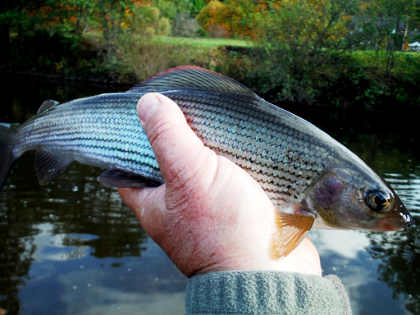
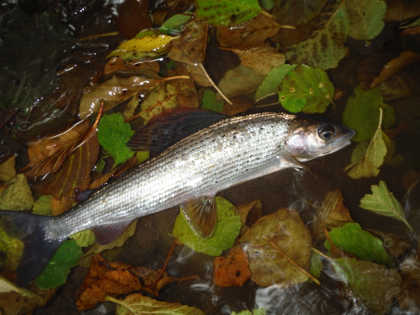
Once again during October, the section of the upper Wye between Builth and Rhayader was the star grayling performer. The Lugg and Arrow tributaries also fished very well, despite low water. Looking at the reports and considering fishing days on my own and with clients and friends, I had the impression that the Irfon and main Wye below the Irfon junction seemed to perform slightly less well than usual this year. That brown peat stain seemed to persist. On the other hand, there were certainly some exceptions to that statement: good days were had on the Cammarch Hotel waters, at Llanfechan, and on the main river too. The grayling are in superb condition and fighting fit - quite a contrast to the somewhat languid post-spawning fish which come to the net during June and July. I had a number of good days, including one on the Monnow at Skenfrith. I don't regard the Monnow as the best of our grayling fisheries as it always seems to me that the trout are the dominant species there. But Monnow system grayling are exceptionally handsome fish, usually with a silvery blue tinge which you rarely see elsewhere.
On the first of the month, MN from Bristol came to fish the main Wye at Gromain and got 18 grayling to 15 inches on nymphs. He also mentioned the slightly tricky turning space in the designated parking area. I admit this is a fairly steep and rough track, and I usually choose to take the Landrover down to it. With a low ground clearance vehicle, as MN suggests, it might be wise to park off the main road near the bridge. On the 3rd , HW from Penclawdd had 20 grayling to 14 inches from Doldowlod, first on nymphs and later changing to a dry fly. On the same day, CL from Hereford fished Craig Llyn with Shaun Watkins the owner and reported a remarkable catch of 10 grayling: 7 at 15 inches, two at 18 inches, and a truly extraordinary fish of 21 inches. P from Upton on Severn was out on Ty Newydd the same day and had 14 grayling to 1.5 pounds, mostly on a Grayling Steel Blue. On the 4th , MH from Hereford fished the Lugg at Lyepole and had a dozen grayling to 2 pounds on nymphs.
On the 5th , AG on holiday from Norfolk fished at Abernant and had a dozen grayling, about half of them on dries, and remarked that the big black bull in the field took no notice of him. Now what follows is a diversion from the main subject, but over the year quite a number of angler's reports mention cattle, in words either tinged with slight relief or concern. As you might perhaps expect, neither I nor the WUF are going to give you any guarantees about the behaviour of cattle - you will have to observe their demeanour on the day and make your own mind up. Be sensible. For what it's worth, I have known the Welsh Black cattle at Abernant for quite a few years and none of them, including the somewhat dozy looking bull, have ever taken the slightest notice of me, even when I was trying to shoo them away from my lunch bag left on the bank. I'm also reminded that on the Loughor a few years ago, the local farmer put a herd of Highland cattle, including a small bull, into one of the access fields to our club water. Members were slightly concerned, so our chairman approached the farmer for advice, only to be told that his bull was "a timid beast, who mustn't be frightened." As the animal was presumably Scottish, it was forever afterwards known to members as the "timorous wee beastie". Somehow the shaggy creature seemed less menacing after that. One thing I would not ever do is leave a car in a field with cattle. You might be so lucky that they will ignore this curious object newly arrived in their environment; however it is more than likely they will crowd round and slobber over it for its salty taste, turn round and give themselves a good scratching on it, thus rubbing off the door mirrors and bits of trim in the process, and finish by giving your pride and joy a couple of good kicks before wandering off.
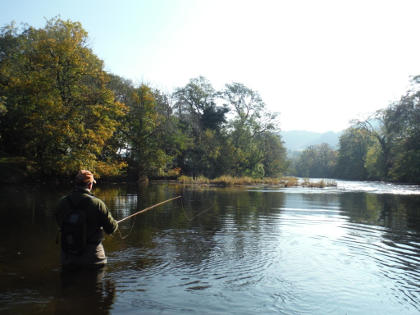
Back to the fishing results: on the 8th , AG fished Craig Llyn and got 15 grayling to 16 inches. On the same day, JG from Monmouth also got 15 grayling to 16 inches from downstream at Doldowlod, using nymphs and a Grey Duster. On the 14th , HD with a companion from Tierce in France caught 21 grayling to 48cm (that is at least one very large fish) from the Irfon at Llanfechan using small CDC dry flies. On the 15th, NG from Sutton St Nicholas fished Craig Llyn and found rising grayling very difficult to tempt on the smooth glides, but got a dozen from the fast water using larger dry flies. On the 17th , regular angler AS from Newent had 13 grayling to 16 inches from the Lugg at Mortimer's Cross. On the 19th , TU from Bristol made an early start with the trotting gear and centre pin reel, catching a very successful bag of 40 grayling on the Wye at Abernant. SW from Solihull came to Lyepole on the 23rd and got 11 grayling in the 12-14 inch range on nymphs, but lost a big one. SW is clearly another angler who was impressed by the charms of the Lyepole valley. On the same day, JM and a friend from Sombreffe fished the Irfon at Llanfechan and got 20 large grayling over 40cm using a mixture of methods. On the 25th , Dave Collins from W Herefordshire took 15 grayling from the main Wye at Ty Newydd, mainly on the dry fly. On the 26th , TF (not sure where from) had a dozen grayling to 1.5 pounds at Abernant using heavy nymphs. On the 28th , it was Dave Collins' turn to fish Abernant and he got 21 grayling, mostly on dries, during extended hatches of fly. Dave in his report had a plaudit for the fishery owner, who apparently has just repaired the bankside path on the upper part of the beat all the way up to the Edw junction. That is very good news and I can echo those thanks; I was just wondering when either I or a client was going to break a leg on the old precipitous path.
There are several more points arising. Firstly, Roy Pettipher from East Hagbourne reported the loss of a Guideline rod and Hardy reel in deep water near the Lower Planks at the bottom of Ty Newydd. Thankfully, I can report that this was found by an angler at roughly the same location a day or two later and a happy reunion ensued.
Secondly, some of us were rather disappointed that the three renowned Irfon beats belonging to the Cammarch Hotel are not on the Passport this year. The situation is that at this time of the year the hotel depends very heavily on parties of grayling anglers, sometimes as many as 10 strong. Although the hotel has 4 miles of fishing, it can be difficult to accommodate all their angling guests, particularly if a couple of beats have been pre-booked by day ticket anglers through the WUF. Needing to maintain flexibility, the management regretfully decided that hotel guests would have to be prioritised for fishing. However, all is not lost if you able to take short notice. There are gaps between the fishing parties and if you are prepared to call the hotel the evening before fishing, if they have a beat free for the next day, they will very happily sell you a ticket for 15 pounds. Call Kathryn on 01591 620545. I tried it a couple of times, and got good fishing on both occasions.
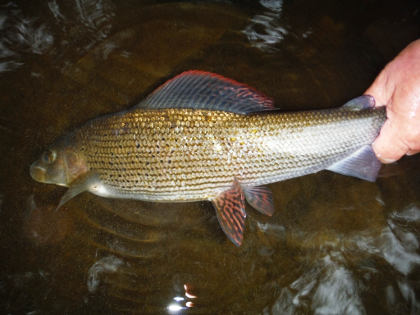
Thirdly, I was delighted to notice that a number of anglers reported success with the dry Grayling Steel Blue this autumn. I would be more than proud to think I might have played any small part in re-popularising this excellent little grayling pattern. What we know about its history is that it was invented, probably during the 1920s or early 1930s, by Roger Woolley of Staffordshire, an extremely knowledgeable angler and professional fly dresser. By all accounts it was his favourite grayling pattern. With its palmered blue-grey hackle, the GSB is clearly in the tradition of the old "bumble" patterns for the Derbyshire limestone streams with which Woolley would have been very familiar (Kingsmill Moore's famous Claret Bumble for Irish lakes originated from the same source). Roger Woolley was as good a businessman as he was a fly fisher and fly dresser; at one time his wife, four daughters, and quite a few other women in Marston Road, Tutbury, were busy tying for him. Roger was kept busy running up and down the cobbled street with materials and orders, collecting envelopes of finished flies to be despatched. The business continued until after Woolley's death in 1959 and Reg Righyni of Yorkshire, who came to regard the fly as a mainstay pattern, would almost certainly have had it from the Woolley catalogue. Righyni recommended the GSB in his famous work Grayling, which is where I had it from. A recommendation from Righyni, I came to realise long ago, is a suggestion to take seriously. The GSB is sometimes classed as a fancy fly along with the flame tails, but it seems to me to be very effective for any fish prepared to rise during hatches of pale wateries, willow flies, dark olives or any of the small greyish coloured natural flies of autumn. It's probably a bit late for this year's fishing, but here is the Grayling Steel Blue dressing again for anybody keen to tie up a few over the winter:
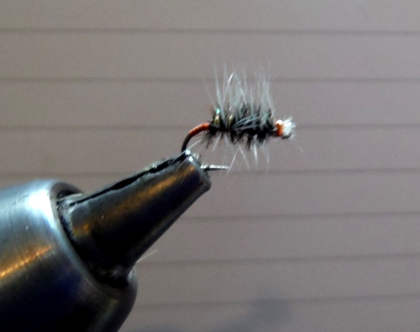
Hook: 16 or 18 dry
Thread: Burnt orange, leaving about 3 turns showing as a butt.
Rib: Fine gold wire
Body: Single peacock herl
Hackle: Blue/grey cock, palmered shoulder to tail.
Note that Woolley originally specified a grizzled blue cock hackle, but this is something I have never been able to find. Also that, tied on a heavier gauge hook and with a softer hen instead of a cock hackle, this makes a very good wet fly for late autumn fishing.
What next? I am writing now with a blustering gale of rain sweeping up the Bristol Channel and a few extra inches of water in the river, but the outlook on into November is for warm and dry weather again. It really cannot last very much longer, but if grayling are seen rising, by all means try for them on top. This is a time for trying the grayling fancy flies, those colourful flame tails, which grayling will happily pick out from among those equally colourful floating leaves. I am sure that the surface drift encourages the grayling up; think of all the bugs which must come down with the leaves on a windy day. A team of grayling wet flies will also work well, although constantly picking the leaves off three flies is a bit of a bore. Come the change to truly cold and frosty weather though, which cannot be too far away, it will be time to change to heavy nymphing or to trotting a maggot under a float (where permitted). You might also try a team of grayling wet flies with lead under the dressing or in combination with a sinking leader butt. Generally speaking, where I have a choice of methods, I would be more inclined to trot a bait under a float in high or coloured water, and to fish the fly in low or clear water. Believe it or not, the fly will often out-fish the float in such conditions and it is very likely to do so if natural fly are actually hatching.
I thought this month I would write something about leaders and the different materials which go to make them up. This can be something to think about, perhaps, during the winter. Beginners seem to ask about this subject more than any other, so those anglers who are not beginners are asked to forgive me and skip the following, which will be very familiar to them, no doubt.
The "leader" refers to everything between the fly line and the hook. Materials first, and let's start with the history. In The Beginning, by which in this case I mean even before my time, there was silk worm gut. Actually, no, there was horse hair before that, but we will park that subject for the moment. The raw gut came mostly from Spain, where the silk worms were bred, and the wholesalers had allocated a series of attractive-sounding Hispanic names to define the different thicknesses and qualities: Hebra, Imperial, Marana, Padron, Fina, Refina, Refinucha - dealing in this stuff must have been rather like buying sherry or Coq de Leon hackles. In most cases before use, gut had to be drawn, just like metal during wire manufacture, through a series of jewelled holes of reducing size to achieve the thickness the angler wanted. A system of numbers based on the number of holes through which the gut had been pulled was thereafter used to describe its thickness. Thus undrawn gut was described as 0X (about 11 thousands of an inch) and gut which had been reduced in size 4 times, was 4X (about 6 thou). Even trout anglers rarely used anything finer than 3X or 4X in those days. I will come back to the X system later.
Gut was tricky stuff to deal with. It came in short lengths, so it had to be knotted together. Bad quality gut had weak spots which had to be checked for. All gut had to be soaked for half an hour or more before it could be knotted or fished with properly. It tended to fray and "neck" easily where the hook was attached. But, as I can well imagine, gut was what anglers knew for many years and dealing with these problems was all part of the craft.
The introduction of artificial nylon was delayed by the Second World War and when it eventually came onto the market there was a good deal of prejudice against it. It certainly seems to have been the case that some of the early brands which arrived were extremely unreliable, even worse than gut. However, manufacturers addressed the problems, began to turn out a consistently reliable product, and by the 1950s nylon was established as really the only option for the business end of fishing tackle (silk fly lines lasted on the UK market for just a little longer). In some cases, modified knots were required, but in general nylon proved much less trouble to use than gut. Close to neutral density compared to water, it floats when it is greased and sinks when it is degreased. It does eventually deteriorate with age and particularly if exposed to sunlight for long periods. It's worth mentioning at this point that sport anglers are only a small part of the market for nylon monofilament. The big purchasers are the commercial long-liners, those who bait the open seas for swordfish and tuna. Nylon, virtually the only option, ruled the angling market during the next decades. Many of us now have a fishing lifetime of nylon use behind us and indeed continue to use it.
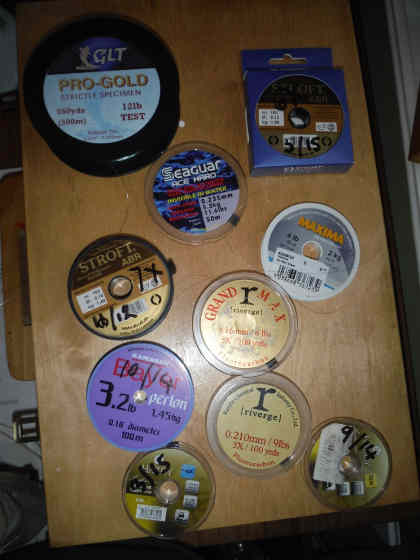
The chemical companies have come up with two other specialised nylon products in recent years. Fluorocarbon, evolved by Kureha of Japan, is generally thinner for its breaking strain than ordinary nylon. It is said to have a refractive index close to that of water so that fish have difficulty in seeing it - although I have my doubts about that - and it is virtually immune to ageing, including exposure to sunlight. The molecular structure of fluorocarbon is such that it is not weakened by accidental knots (so-called wind knots, or "bad casting knots" as they should more accurately be called). Fluorocarbon is heavier than water and has a definite tendency to sink.
Copolymer, on the other hand, is lighter than water and in most cases will float. This is perhaps its chief recommendation and the reason why it is used by so many dry fly men. Like ordinary nylon, it is subject to ageing and damaged by light exposure. It is often quite limp and flexible, a useful requirement at times when constructing a dry fly leader. Knots in copolymer have to be made carefully and the material frays more easily than the other two.
It took years for me to realise it, but quoted breaking strains are not generally speaking helpful to anglers. Angling nylon is tested and quoted breaking strains arrived at in the same way as ship's cables are tested: by clamping it between two pairs of blocks, applying a slowly increasing pull and noting the strain gauge reading when it breaks. No knots and no sudden shock are involved. However, in real life angler's nylon always has at least two knots and invariably, when a breakage occurs, it is at a knot. I have also heard it said that the Trading Standards people would have a field day if they ever get round to testing some of the tackle manufacturers' claims about the strength of nylon. Meanwhile, knotted strength, if we could know it, would certainly be of interest but in truth, thickness of the leader material is what really matters to us.
While anglers continued to be mesmerised by quoted braking strains in either kilograms or pounds and "double strength" lines, the European and Asian manufacturers also marked the spools up with the line diameter, either in decimal fractions of a millimetre or thousands of an inch, depending on their base. Much confusion resulted, particularly in the American market. Rather wisely, the US decided to go back to the old "X" rating for nylon diameters and it seems that idea is now catching on here again. Once again these days I tend to think of a piece of nylon as 4X, for example, and I'm not really concerned whether that is theoretically 3, 4 or 5 pound breaking strain material. Here is a rough conversion to metric for those unfamiliar with the X system: 2X = 0.23mm / 3X = 0.20mm / 4X = 0.18mm / 5X = 0.15mm / 6X = 0.13mm / 7X = 0.10mm.
(Incidentally, I totally disagree with the advice given in October's Trout and Salmon magazine "Beware of the X", which seems to be both confused and confusing. The article states that the X system refers to "neither strength nor diameter" and recommends that the angler buys his material by breaking strain. In fact the X system does refer to diameter - see above -– and can be easily understood by those inside Europe, outside Europe and even by Americans! But if you don't like the X system, then by all means measure your nylon diameter in thousandths of an inch or decimal fractions of a millimetre as suits you. Just avoid the trap of judging it by claimed breaking strains).
Making a selection between the different materials and brands is a very personal matter. Just as with the selection of knots to use, different anglers seem to have very different experiences and preferences. As always, what follows is a description of what works for me.
I still use plenty of ordinary nylon and, to be completely honest, it wouldn't be the end of the world for me if we had to go back to using ordinary nylon for everything. The one I like best is called Bayer Perlon, made in Munich and marketed by Kamasan these days. I like it because I have known it all my angling life and I feel I understand what it will and will not do. You will find salmon anglers who feel the same way about Maxima. Bayer Perlon in 4X and 5X is used for the tippets and droppers on my wet fly leaders for brown trout and grayling, and sometimes for rainbow trout also. I also use Bayer in a thicker size for sea trout surface lure fishing and one or two other similar jobs.
I tend to use copolymer when dry fly fishing these days, mainly in an effort to keep everything afloat. The Hardy Copolymer seems to be a reliable brand, although I used to use Orvis Superstrong. Unfortunately the Hardy is only available now down to 5X, so for 6X I improvise with Stroft ABR.
I do use fluorocarbon a lot when fishing for rainbow trout in clear pools. I don't believe it is invisible to fish, but it does seem to result in more takes on difficult days. It is also my first choice on rivers when fishing heavy nymphs along the bottom, when fine monofilament is needed to cut through the current. Riverge Grand Max, made by Kureha of Japan, is my preferred brand. The same company makes Seaguar, an excellent abrasion resistant version, which I use for salmon and sub-surface sea trout fishing.
So much for materials, let's turn to construction of the whole leader. It's fair to say this is also a complex and even perplexing subject, which a surprising number of anglers just decide to side-step. Just take a walk round any small still water and see how many hopefuls are fishing away with a single piece of straight nylon, usually somewhat less in length than the rod, connecting the floating fly-line and the fly. Surprisingly perhaps, you often see the same thing on the river. These anglers may well put a good deal of thought into what kind of rod and reel they have, possibly even the fly pattern they are using. Some of them may wonder at times why this leader "hinges" at the junction between fly line and nylon, so that the angler's cast fails to turn over the leader, leaving the fly somewhere behind the line when it finally arrives at the surface. But the idea of investing a small amount of money in a tapered leader, or making one up for themselves, always seems to be a step too far. In fact the fly line and the leader in combination are the most important parts of the tackle, worthy of considerable thought and very definitely not the place to economise.
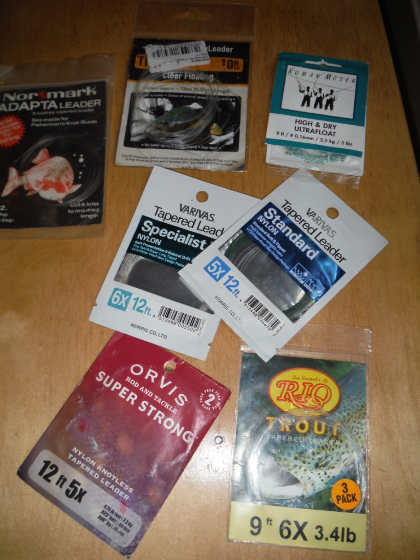
There are of course occasions for using a short leader of straight-through monofilament straight off the spool, usually in combination with sinking lines, in salmon and sea trout fishing, and particularly when trying to achieve depth while fishing heavy nymphs East European style under the rod top in fast water. You will also see loch-style fishers short-lining teams of wet flies on surprisingly long lengths of straight nylon in front of their drifting boats. But remember that all their casting is down or slightly across the wind. Otherwise, for nearly every kind of floating line trout fishing, some kind of tapered leader is essential, thus providing a smooth flow of energy from the fly line through reducing diameters to the tippet, in order to achieve turn over and place the fly more or less accurately where the angler wants it to be.
As discussed above, we now have three leader materials available to us - flurocarbon (sinks), copolymer (floats) and old-fashioned nylon (floats or sinks according to treatment) - but in the interests of simplicity, I am going to use the all embracing term "nylon" from now on. Most dry fly leaders you can buy will be made of copolymer or old fashioned nylon - but check. Obviously don't buy a fluorocarbon leader and expect it to float along behind a dry fly.
A tapered leader can be designed and constructed in many ways and there are choices to make here. What type and power of rod will we be using? Are we fishing a wide open river with all the room in the world, or a narrow and overgrown brook? Are we trying to deliver a heavy fly which doesn't cast easily, or a light fly which is to be dropped delicately - perhaps a team of flies? Are we going to be casting into a stiff wind, down or across the wind, perhaps in a sheltered place with still air? How easily are the fish spooked - how muchdistance do we need to create between the fly and the fly line? What is the current like? Which will be more important: accuracy in delivering the fly or avoiding drag once the fly is on the surface?
There was a time when, to make up a tapered leader, it was necessary to sit down with a micrometer gauge and lots of spools of nylon of different thicknesses, measuring and cutting and knotting pieces to make a leader up to a planned formula. Some people still do this, particularly in the US where they have always been more "technical" about their trout fishing. It's rather easier for most of us today, when we can just buy a factory-made leader with an extruded taper, generally 9 or 12 feet long. This we can extend or modify by adding extra tippet material, perhaps with droppers, to suit our purposes.
Before we go any further and to avoid confusion, let's define some technical terms:
Leader: All the nylon material between the fly line proper and the fly. When I started fishing, we called this a “cast” in the UK, but the American term “leader” has taken over.
Butt section or leader butt: The thicker part of the leader near the fly line.
Tippet: The thin part of the leader to which the fly is knotted – will vary in length and diameter according to various formulae.
Point: the far end of the tippet carrying the fly.
Taper: Self explanatory, but there will always be a reduction in diameter, either steep or gradual according to various formulae, between the thick butt and thin tippet sections of the leader.
Dropper: one or more nylon extensions knotted into the leader to carry extra wet flies, or occasionally more than one dry fly, some distance above the point.
The tackle catalogues will give plenty of information (mixed with even more advertising puff) about what the different manufactured leaders will do for you. Here are two extremes to choose from, with their advantages and disadvantages:
A leader of overall short length with an extended heavy butt and a short taper and tippet, perhaps made from a stiff kind of nylon, will be good for turning over heavy flies or fishing into a head wind. The presentation may leave something to be desired.
A long leader, with a short butt section, extended taper and tippet sections, probably made from a soft material, will be good for presentation if you can get it to turn over and the long, limp tippet will assist in avoiding drag as the fly moves down with the current. It won't be so good for casting into the wind.
A practical "middle of the road" solution for those starting on Wye or Usk river fishing with a dry fly would be to buy a 12 foot leader tapering to 5X, which in most circumstances will be "fit for purpose." Of the many brands available, I quite like Orvis Superstrong and Rio Powerflex. Attach it to the fly line, grease it all except the last 18 inches of the tippet (which should be degreased before you start casting), tie on a fly and you should be ready to go.
Having made a simple statement, we always have to complicate it, don’t we? I will add the following comments and caveats:
The difference between a manufactured 9 foot leader and a 12 foot leader of the same brand may only be that the first has 7 feet of butt and taper with 2 feet of tippet, while the second has exactly the same 7 feet of butt and taper combined with 5 feet of tippet. Check it and see for the next time you buy. It's the butt and continuous extruded taper we are really paying for here; extra tippet we can add ourselves.
The tippet is something you will very likely be adding to, subtracting or changing regularly through the fishing day. Tippet material is mostly cheap; you can regard it as expendable. If you need to drop the fly size down to 18 or 20, you should probably add another 2 feet of finer 6X nylon to attach the smaller hook. If, perhaps in mayfly season, you need to go up to a size 10 or 12 fly, you should be using 4X nylon with it. Tie tippet sections together with a 3 turn water knot and don’t change thickness more than one X number at a time, ie don’t try to attach 3X directly to 5X nylon.
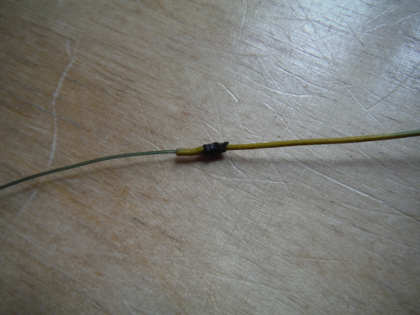
Commercially made leaders normally come with a pre- tied loop in the butt section, which can be attached loop to loop to a braided loop or a manufactured welded loop on the end of the fly line. That makes a secure connection, but not a very neat one. A connection which is bulky tends to throw off spray when lifting the line off the surface. More annoyingly, there can be problems in passing such a connection through the tip ring, either when ready to begin casting or in the final stages of playing a fish. Squeezing the thick butt section loop closed with a pair of strong pliers (you won't do much harm to 80 pounds BS nylon) may make the connection slightly less bulky. But a neater solution by far is to cut off the loop and attach the leader butt to the line with a nail or needle knot. If you would then like the attached butt and tapered section to last for a while, you can end it with a 1 or 2 mm metal ring to which tippet sections with or without droppers can be attached (and discarded) on the day of fishing.
Personally, I like a long leader for dry fly fishing on the open river and in some circumstances I use one of 16 feet or more. In practice and provided there is not a very contrary wind, these work quite well with 4 weight rods of 10, 9 and even 8 feet. In recent years I have taken examples from the well known instructor and brown trout angler Paul Proctor who seems to take the same approach and those of a technical bent might like to copy these formulae by Paul:
A. 8 foot taper cut from commercial leader to 2X / 2ft 3X / 2ft 4X / 2ft 5X: total length 14 feet. This makes a nice general purpose leader for fishing dry flies of size 16 and 14.
B. 8 foot taper cut from commercial leader to 3X / 2ft 4X / 2ft 5X / 4ft 6X: total length 16 feet. This one is designed for very small flies of the midge type and ultra spooky fish.
Of course, being the lazy sort of chap that I am, there is a temptation on the day to simply extend the leader A by another 2 feet of 6X if it turns out that very small flies are going to be required. Also, I do keep some 7X and 8X leader material in the car, but it is very rarely used. I see no merit in making a fetish of fishing very fine if there is no need for it and there is a risk of breakage. I used to make my tippets up with Orvis Superstrong, but I am getting on quite well these days with Hardy Copolymer supplemented with Stroft ABR in the smaller diameters.
It's a point of interest that the long and very finely tapered leader concept has eventually led to the "French Leader" idea which is currently so much in vogue. These were designed for very spooky fish in clear and shallow water. Some of these leaders are more than 30 feet long, so that effectively they take the place of a conventional fly line when casting, being equivalent to a 2 weight and requiring a very light and sensitive rod to work with them, even in a modified roll cast.
Also, I should note that there are those who take a very different approach. I was impressed this spring by the American Bill Toone, who fished the Usk and Wye with a leader of rather less than 9 feet which he didn't grease at all. He paid a lot of attention to putting in mends so that his fly did not drag, but there was also nothing on the surface between the end of his line and the fly. The fish seemed to be suitably impressed also. There are many other theories, indeed experiments to be made, in leader construction. One interesting idea is the double tapered leader, which (from the fly line) is tapered from thin to thick, to thin again, in order to modify the shape of the casting loop.
Going on to my own wet fly leaders (spiders), I use 7 feet of taper cut from a commercial leader along with 8 foot of tippet nylon which carries the two droppers. Bayer Perlon is my nylon of choice for the business end. This makes 15 feet, but it all seems to turn over well enough with a relaxed casting stroke.
For the brooks fished with the little 7 foot 3 weight rod, I like a leader length of no more than 7 feet or so. This simply consists of 5 feet of taper cut from a commercial leader (the Varivas Standard leader works well) and needle knotted to the fly line, attached via a mini-ring to 2 feet of 5X tippet.
For fishing two or three heavy nymphs under the rod top in the East European style, I like straight through fluorocarbon. I am happy with Riverge Grand Max (made by the fluorocarbon inventors, Kureha), but the German Stroft is also very good, particularly the ABR (abrasion resistant) version.
The list of knots I have found reliable, at least when I tie them in the materials I use, is relatively short, and nowadays I can refer you to the internet for the tying instructions:
To attach leader butt to fly line: Needle Knot
To make a loop in nylon: Blood Bight Loop
To join two lengths of nylon: Three Turn Water Knot (Surgeon’s Knot)
To attach a dropper link to the main leader: (Improved Dropper Knot, or alternatively the Three Turn Water
Knot with the tag end away from the rod left long as a dropper).
To attach a hook (to fine nylon and hook size up to about 10): Tucked Half Blood.
To attach a hook (to thicker nylon and hook sizes 8 up): Grinner Knot.
I have got a clever little tool for tying them, but these days I am not a fan of the full blood knot. Back in the day, we used to buy commercially made wet fly leaders with two droppers and these were always made with full blood knots, one tag left long for each dropper. The attraction of these was that the dropper stood out from the main leader. Nevertheless, I am convinced that the three turn water knot or improved dropper knot is more reliable. An accidental overhand knot (a so-called wind knot, which really means a "bad casting knot") will significantly weaken nylon and most types of copolymer. The molecular structure of some flurocarbons is such that it will largely resist wind knots, but personally I would always replace that knotted section before fishing on.
There are some precautions to take about buying and storing the age-perishable types of tippet material, ie plain nylon and co-polymer. Firstly, keep them in the dark to avoid the deleterious effect of sunlight. Rather than stockpile this material over a period of years, buy it regularly in small quantities from a supplier which seems to have a steady turn-over. Never buy any spool of nylon which has been displayed in a shop window. With a felt tip pen, mark the date of purchase on each spool when it arrives. Test your spools regularly; if one has suddenly turned in your keeping to the consistency of rotten cotton, it’s better by far that you find out about it before the fish does.
Some extra points: firstly, there are many different preparations on the market to keep dry fly leaders afloat. I have always been happy with the Mucilin brand made in Redditch, but note there are two versions of this in either a red or a green container. The green version, I understand, can be applied without damage to the tip of a plastic fly line to keep it floating high, but the red version will eventually produce cracking of the coating. You can use the Gink used for dressing dry flies on the leader too, but that is relatively expensive. Secondly, I like to take the grease and the shine off the 18 inches of a dry fly tippet next to the fly. There are those who will tell you that it makes no difference and that there is no need to make the end of the tippet sink. My response to that is that I think it does make a difference to the number of takes achieved, although we will never be sure about this until we find a trout or a grayling prepared to be interviewed. Also, that I have no intention of making the tippet to sink, but that it seems to me that a degreased piece of tippet lying in the surface film looks like a very thin black line while a greasy one makes an indentation in the film like a thick cable. Bear in mind that human skin normally collects quite enough grease to affect nylon (just try touching the tippet after eating a bag of crisps for lunch). I make my own tippet degreaser from a sticky mixture of fuller’s earth, glycerine and washing up liquid and carry it an old camera film container. If you can't find a chemist to sell you fuller's earth powder, cat litter from the supermarket usually consists of granulated fuller's earth which can be ground back to a powder in a pestle and mortar - something to keep you busy in front of the television during winter evenings. Alternatively you can pay quite a lot of money for a very small tub of essentially the same product from the tackle shops. After degreasing your tippet, rinse this concoction off your fingers before handling the fly line in order to preserve its slick surface. If push comes to shove, a pinch of ordinary river bank mud will take the shine and grease off nylon, or pulling it through an alder leaf will have a similar effect. I treat the whole of a wet fly leader with tippet degreaser, but rub a little grease into the braided loop at the end of the fly line to act as a high floating sighter.
Finally, nylon can be very bad for the environment, including wildlife and farm stock. I have described tippet material as expendable, but please don't leave it lying around the countryside or in the river. Stuff your discarded material into a pocket, and then at the end of the day wrap it round two fingers and cut the whole lot through with scissors into harmless short lengths.
Development continues and as you can see from all the above, there is much to ponder when choosing nylon and leader materials. For example, Riverge also make a designedly limp version of their fluorocarbon, Soft Plus, with the idea that it will improve presentation to spooky fish. Note that this one does not resist wind knots, however, without being weakened. There is also a deliberately stiffer version, slightly thicker for its quoted breaking strain than Grand Max, which is popular with reservoir boat anglers for making up leaders with droppers which will be less likely to tangle round the main leader. Tom Saville's company for many years has supplied a very stiff standard nylon called Tynex, also said to virtually eliminate tangling droppers, and which still has a loyal following among reservoir anglers. The sea trout specialist Steffan Jones recently recommended a leader material for night sewin fishing called GLT Pro-Gold. It's an ordinary nylon, I think, relatively thick for its quoted 12 pounds breaking strain, quite stiff, but with a remarkable amount of stretch compared to other materials. With this in mind, I got to thinking of those vicious sewin pulls which come suddenly in the night, but with no hook-up. Could it be that a "stretchy" nylon gives a big fish a chance to hook itself as it turns on the fly? For that matter, could it be that those "zero-stretch" sewin lines I have been using for a while are costing me fish? I'm going to worry about this all winter. Tight lines with the grayling in November!
Oliver Burch www.wyevalleyflyfishing.com
September 2015
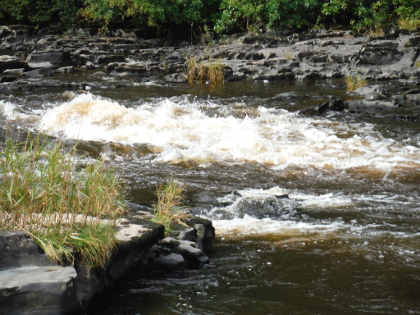
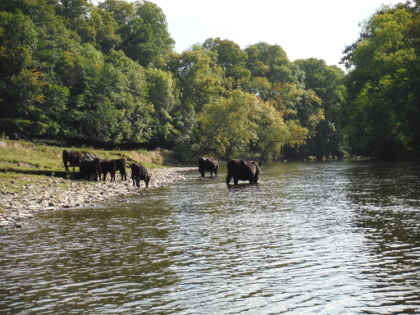
JH Hutton, the famous salmon angler and pioneer of fish scale reading, once wrote in a rather picturesque phrase: "...the 'crab' of the Wye is that it is such a dirty river." I am one of several who have remarked that the river has held a surprising amount of colour, a kind of persistent brown stain of peat, throughout the last months. There were days when I could only see 12 inches through it. I'm told this may be due to forestry works at the top of the Irfon, where heavy machinery has churned the upland bogs around the sources. It's not that the river has been particularly high or muddy due to rainfall in the ordinary sense. Although most of September was another cool month of blustery winds and localised showers, this year is so far still a dry one overall and there were only a couple of short-lived spates on our main rivers: one in the middle of the month and a brief rise towards the end. Other streams such as Lugg and Arrow were virtually unaffected and the Monnow remained low all through. Nevertheless, even when the level quickly dropped off, most of the Wye remained surprisingly opaque with that brown stain and I'm sure this had its effect on the dry fly fishing for grayling. In general the better results so far this year have come from above the Irfon junction. At the same time, some wonderful catches of barbel and chub were being made from the lower river (see Adam Fisher's report). I suppose it is unreasonable to expect a fish to be able to see and rise through 4 or 5 feet of thick brown water to take any natural or artificial object from the surface. On many such days, fishing nymphs along the bottom proved to be a much better option.
However, high pressure established itself during the last days of September and we began to see calm, dry sunny days. (I'm writing this now on a clear and bright morning, with hot air balloons over the Severn estuary in view from the office window). The situation changed and fishing a dry fly started to be rather more fun. For once, not only anglers but the rest of the country's population declared themselves happy with what now looked like being an Indian summer. As the water of the Wye eventually began to clear, grayling started to feed from the surface in earnest and sport was commensurately rather closer to what we expect it to be in September. Logically enough, this began in the shallow runs. One warm morning we found a large shoal of fat grayling lined up in the outfall of the Clettwr stream at Erwood feeding on pale watery duns drifting down in the foam lane. As the water cleared further (so that I could see my feet when wading waist-deep), we began to see rises at the surface of the deeper, steadier glides. Meanwhile the Arrow and Lugg fished well all through the month as did some of the small streams. There are some more remarks about water levels and colour with their effect on fishing later in this report.
For the results, let's start with a couple of late August reports from Talybont Reservoir. On the 28th , AB from London reported a very creditable 18 inch trout. On the 31st, PH from Bath, having been washed off the Usk where he had lost a salmon the day before, caught a cock brown trout of 2 pounds 11 ounces from the lake. These Talybont fish are often hard won, but they can be fine specimens. PH described himself as happy on the way home - and didn't mind too much about the lost salmon!
Now we can turn to the rivers. On the 3rd September, AM from Dorridge reported a big catch of trout and grayling on the nymph from the Lugg at Lyepole. On the 4th September, LB from Cornwall also used a weighted nymph to take a dozen trout to 12 inches from the Ithon at Tyllwyd. CK from Stroud reported 14 trout from the upper Usk at Fenni Fach. On the 6th , OE from Abridge had 15 trout up to a pound from the middle Usk at Glan y Cafn. On the same day, JD from Hereford was fishing the Wye at Doldowlod where he took 13 grayling to 18 inches on spiders. Meanwhile, N from Cwmbran fished the Wye lower down at Ty Newydd and took 3 trout and 14 grayling. On the 7th , BAK from Lancashire reported 16 grayling on spiders and nymphs from the Monnow at Skenfrith. On the 9th , NJ from Felindre had a dozen grayling to 17 inches from Doldowlod using nymphs. On the 10th , SS from Oxford fished the Lugg at Lyepole and got 2 trout and 11 grayling. On the 13th , EB from Cwmbran fished at Craig Llyn for 3 trout and 9 grayling (and met the new owner who seems very active in looking after the fishery). On the 13th , regular AS from Newent fished the little Olchon, a Monnow tributary, and got a dozen trout on nymphs. On the same day, PJ and SB from Newport fished at Craig Llyn and reported 15 trout and 30 grayling between them. RH from London, the other rod on Craig Llyn, caught 7 trout and 7 grayling. On the 16th , PB from Churchdown on behalf of a party of four anglers, reported an exceptionally large grayling of 20 inches from Doldowlod. There was a 20 inch trout on the same day, both caught on dries. (The same party were at Dolgau a couple of days later, still catching, although a couple went swimming. There is some tricky wading in that part of the river).
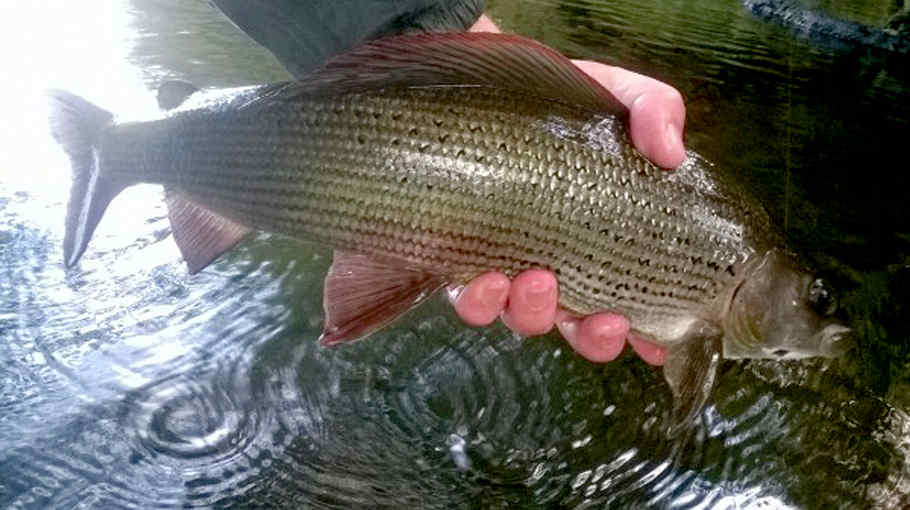
On the 19th , HW from Penclawdd took 11 trout to 14 inches fishing fast water of the upper Usk at Trallong and Abercamlais. AS from Newent had an interesting trip on the same day, fishing the little Dore at Chanstone Court for 15 trout and 2 grayling. I gather this was very much a matter of plumbing the deep holes with a nymph during drought conditions. Also NC from Warwickshire had a good day on the upper Arrow at Hergest Court, taking 17 trout with the duo method (mostly on the suspended nymph). AM from Dorridge fished the Lugg at Lyepole on the 20th and took 6 trout and 17 grayling, all on a beaded Endrick Spider, a nice example of a northern pattern fly translated to southern waters. But on the 21st JD from Porthcawl fished the little Edw at Hergest and got 11 trout, this time on the dry fly. GS from Launceston in Cornwall also used a dry fly to take 13 trout to nearly 2 pounds from the Usk at Dinas and Abercynrig.
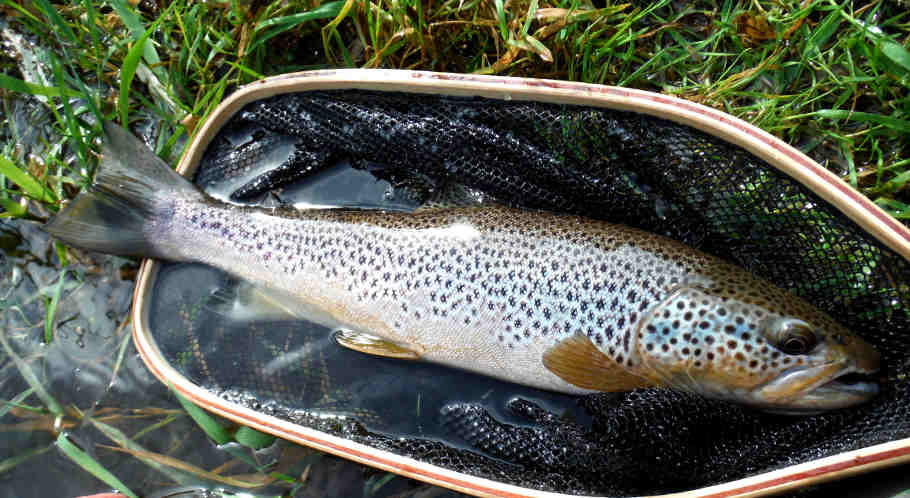
By the 22nd and after a night of heavy rain a short-lived spate was in force on the upper Wye for a time. DB from Dover found the river at Craig Llyn "...in full flow and dark as black coffee." But on the 24th GS from Launceston was able to move over to the Irfon at Cefnllysgwynne and took 6 trout and 6 grayling on dries. The following day QD from Arundel took 2 trout and 10 grayling from Abernant with a variety of methods, noting that on this occasion grayling were rising for most of the day. On the 28th , RW from Portishead finished his season with 10 trout from the Honddu at Lower Henllan on a size 18 Iron Blue Parachute.
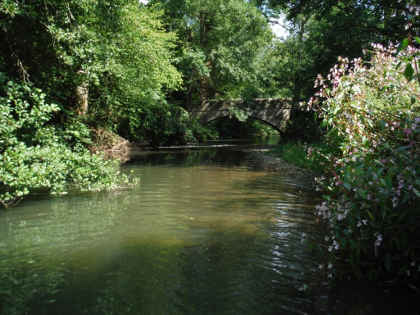
Recently JD of Porthcawl asked about reading the webcams and gauges which are now available to help us when making decisions about fishing. To my mind, the whole rainfall and water level business is still a distinctly imperfect art rather than a science, and what follows is, as always, a personal opinion. And therefore, before you get to read this, I'm going to ask the fishing folks at the Foundation to cast an eye over it and to add, subtract, explain or disagree as they feel necessary. (WUF Note: no changes were necessary. In fact, we learnt a few things ourselves!)
The first points to consider, I suppose, are about the way flood water travels down different rivers. The Wye is 134 miles long and so a plug of high and dirty floodwater arising from localised rain on the headwaters in the Cambrian Mountains will take two days to travel right down to the tide. The Usk is around 63 miles, so local rain on the Brecon Beacons will produce a rush of flood water taking roughly one day to work its way down the river. Of course, prolonged and heavy rain falling over the whole region is likely to produce flooding of the entire rivers over an extended period. In general, if you are determined to find fishing during flood conditions, your best bet will be to try and go as far upstream towards the source of either the main river or tributaries as you can manage. The upstream areas will clear first.
If rain falls after an extended period of drought, it is quite possible for a large amount of water to be absorbed into dry ground without the rivers being affected. During summer months while leaves are on the trees, a great deal of water is also sucked up by tree roots. The rivers might therefore be slow to rise. Conversely, if fresh rain falls during winter when the ground is already wet and the trees are leafless, you can expect the rivers to rise and colour quickly. The first proper flood after a long drought is likely to be a dirty one as accumulated rubbish and algae are flushed from the river bed. An extended period of flooding, especially in winter, can eventually result in continuing high levels but relatively clear water as the river bed has already been cleaned out. We saw conditions like this on the upper Wye for many weeks last winter, with the colour of every stone on the bottom showing with almost painful clarity although the river was high. Again, localised flooding on certain tributaries can affect the main river with colour downstream, for example grey clay silt suspended in water from the Ithon or a peaty stain from the Irfon can colour the Wye all the way down to the tide. Flooding of the Monnow or Trothy (which have a tendency to colour quickly and easily) will drastically affect the lowest section of the Wye below Monmouth.
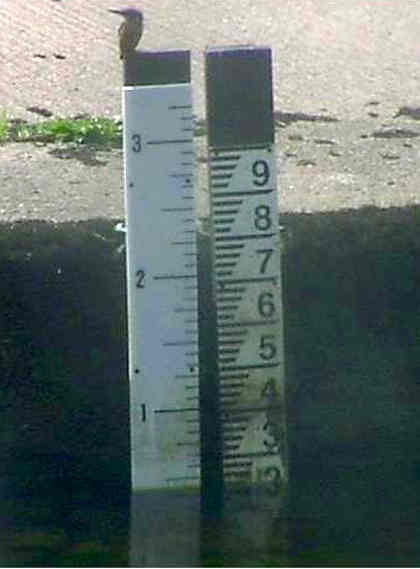
There are several more rather obvious points to bear in mind when looking at gauges and weather forecasts. A small and shallow stream can stand much less of a rise in water before being affected than a large and deep river. A foot of dirty water added to a brook or to the headwaters of a main river constitutes a flood. A foot rise near the estuary may not involve much more than a change in fishing conditions and an increase in current pace. Similarly, the weather conditions which are about to affect your ongoing or planned fishing day may be nothing to do with rain falling on your head. It's the weather upstream in the hills which you should be worried about. Most of our weather comes out of the west, the direction of our prevailing winds. Rain picked up from the Atlantic is likely to fall first on the high ground to the west of our main river valleys: the Cambrian Mountains, Black Mountains and Brecon Beacons. These uplands are where the headwater sources of our rivers are.
We have two main types of gauges to help us see what is happening with rivers and streams. The EA/NRW system, basically put in places strategically chosen to give warning of floods, gives a water height in metres taken several times a day (the time of last reading is on the display) and also a very useful graph line trace showing the rise or fall of the water during the last 48 hours. The WUF sponsored gauges show a live camera picture along with four historic daytime photographs taken over 24 hours so that you may follow the trend. Note that you cannot see a current reading on a WUF gauge during the hours of darkness. However, in a good light during the daytime you may get an idea of the colour of the water, a feature not available with the EA system. There is a certain charm about the live camera system; occasionally a friendly duck may paddle into view.
People tend to ask: "So how do I read these gauges? What does zero mean?" I am afraid to answer that the information given by each gauge is very specific to its own location and needs to be assessed in the light of familiarity with the local situation. And zero doesn't necessarily mean much, although I have an idea that engineers installing gauges try to set the zero mark at the lowest level which might possibly be experienced in that part of the river. Generally, it is necessary to watch a river gauge regularly over a period of time before being able to work out what fishing can and cannot be done. Here, for example, is a list of readings from the Llanstephan gauge and how we think they would affect fishing on the Pwll y Faedda beat of the upper Wye near Erwood:
0-6 inches - dead low, summer drought conditions.
6-12 inches - low water, trout and grayling fly fishing.
12-18 inches - high water, trout and grayling fly fishing, occasional salmon.
(18 inches is the safe wading height limit for much of the beat and the maximum safe height for fording the
river).
18-24 inches – good salmon fly fishing water
24-30 inches – salmon spinning water
30 inches upward – flood
However, the above advice is specific to this beat which is known as a low water catch and where wading is in many areas quite difficult. At Abernant, where wading is relatively easy, at least in the gently sloping lower pools, I would put a different interpretation on these same figures from the nearby Llanstephan gauge. At Abernant, I would consider trout and grayling fishing, in the lower parts at least and provided the water is not too coloured, to be reasonable up to 24 inches on the gauge. And one day last winter a client of mine was trotting from a carefully selected safe stance at Abernant and achieved a good catch of grayling although the (relatively clear) water was up to 36 inches on the gauge.
As you can see, for two nearby upper Wye beats, here are quite different interpretations of what the reading on the gauge indicates for our activities. Salmon anglers, because their sport so much depends on water levels, are often more sensitive to these readings than trout fishermen and the salmon fishing notes available for many WUF beats make an interesting and useful read for everybody. Coarse fishers will have yet another take on the situation - barbel anglers at times will do well enough in a heavy flood while winter pike anglers will be anxious to have clear water. For the purpose of the trout and grayling men, I'm going to divide our two main rivers and tributaries into manageable sections, describe their characteristics and make some suggestions.
Upper Wye: The Wye is a relatively small river for a long distance from the Plynlimmon source until it is joined by the Ithon and Irfon tributaries above Builth Wells. Floods on this top section are produced by heavy rain in the Cambrian mountains. By monitoring the WUF gauges at Llangurig and Rhayader, each of which should not normally show much more than 12 inches, it is easy to see what heavy water might be on its way to affect the fishing around Builth and Erwood. The remarks above about the Llanstephan gauge might be some help in assessing fishing conditions around Erwood. If you prefer to use the EA system, there are gauges all down the river which you can monitor. It's worth noting that, this year, an agreement with the water company has resulted in compensation releases from the Elan valley dams supplying Birmingham, which has resulted in the summer level keeping up to a minimum of 10-12 inch range on the Llanstephan gauge. In previous years the summer level might drop below 6 inches.
Lower Wye: This section is of more of interest to coarse and salmon anglers, but 6 to 18 inches on the Fownhope gauge should provide good fly fishing opportunities. Spinning and other methods can be used at 24 inches and higher.
Irfon: A large Wye tributary, very short and steep, which drains extensive areas of high wetlands, much of which is now forested with conifers. As a result, there have been intermittent problems with acid flushes in a river which is, nevertheless, a superb autumn grayling fishery in its lower reaches and an important salmon spawning ground. The great characteristic of the Irfon is that it rises and falls very quickly. Two or three hours of heavy rain while fishing will probably result in a rapid rise and colouring which will push you off the river. Before long, the same dirty water will be discolouring the main Wye below the Junction Pool at Builth. But when the rain is past and floods recede, the Irfon can drop off to fishing condition a full day before the main Wye. There is no WUF gauge on the Irfon. Instead I use the EA gauge at Cilmery and regard 0.60 metres as the maximum height for practical fly fishing, although winter trotting for grayling is possible with care at slightly higher levels. When the Irfon is down to the region of 0.30 metres during a dry period it does not fish well in my experience.
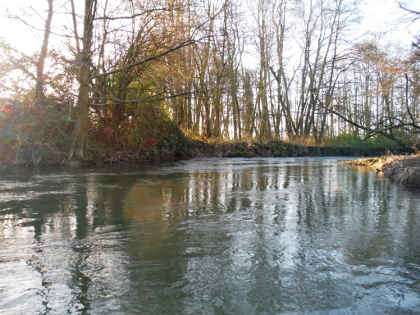
Lugg and Arrow system: Two more tributaries, along with the Hindwell Brook, which all flow from the Radnor Forest (which is really just high ground) in the west, first across North Herefordshire to Leominster and then south to Hereford and the main Wye. They all tend to have a slightly greyish tinge at times, matching the greyish white gravel of their bed, a tinge which does nothing to spoil their superb trout and grayling fishing. These streams seem more controlled by their source springs than by rainfall, so that any change in the level happens slowly. During a dry summer they all, especially the Hindwell Brook, tend to be kept up to level by their copious supply of spring water. During a wet winter when rain keeps going long enough to really charge the springs, the levels become unacceptably high and stay so for months. You can lose a whole winter of grayling fishing in that way. For both the Lugg and the Arrow, which usually move together, I use the WUF webcam at Byton, which for good fishing I don’t like to see much over 12 inches.
Monnow system: The Monnow is a delightful tributary, fed by a complex network of streams, all with different characteristics, and all flowing eastwards in adjacent valleys out of the Black Mountains and across Monmouthshire to the Wye. With the exception of one (Grwyne Fawr which goes to the Usk), every stream on the east side of the Black Mountains, from Hay Bluff in the north to near Abergavenny in the south, is feeding into this system. An important point is that there is a significant rain shadow effect on these valleys below the looming bulk of the Black Mountains. If the west side of the mountains takes the main part of the rainfall, as quite often happens, the east side can remain dry and Monnow streams will still be in fishing condition while everything else is in flood. Do check this out as we go into this winter - it's a feature which can be quite helpful at times. The WUF have a main Monnow webcam at Grosmont, and again I don't like to see this gauge go over 12 inches. Also look out for colour in the main Monnow which tends to come out of the Dore, a lowland tributary from the Golden Valley which is rather prone to it. (Note that these streams contain plenty of silt, which is why their mayfly fishing is so good). The Dore has a gauge at Peterchurch, which should not go over 0.30 metres (but worry more about the colour after rain) and the Honddu, a clear water tributary of the Monnow with an upland character, has another up at Tafalog near Llanthony Abbey (again, look for 0.30 or less). The Escley Brook, which is an important fishing tributary, has no gauge and nor does the upper part of the Monnow itself, the Olchon or the Dulas Brook. For these I tend to rely on the Tafalog gauge and hope that rainfall in nearby valleys has not been so very different. You can catch some excellent fish in the deep holes of the Escley Brook, even when levels are low, but in very dry weather avoid the upper of the three Escley beats, which does suffer badly in a real drought.
Usk: The Usk, as already mentioned, is a short river compared to the Wye, collects most of its water from the Brecon Beacons and is well supplied with WUF gauges at Brecon, Glanusk Park and Trostrey Weir (just above Usk town). Via the gauges, you can watch the progress of a flood down the Usk in the course of a long day. Don't underestimate the power of the Usk; a couple of springs ago I was nearly caught out when trying to ford the river at Brecon after a few hours of heavy rain. The river rose 2 feet in not much more than half an hour. Brecon is the most useful gauge for the upper and middle Usk and I like to see it between 6 and 12 inches for ordinary trout fishing, perhaps up to a maximum of 15 inches for a safely waded gravel pool. At the lower end, 12 inches is enough on the Trostrey gauge for good trout fishing, but again fishing can be manageable in places up to 15 inches.
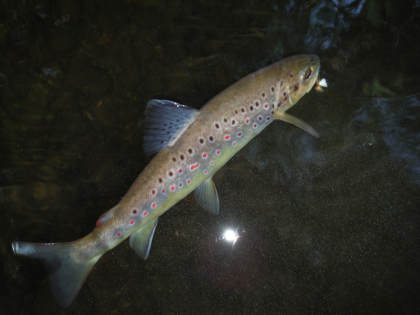
My advice is to try to build up a picture over time of the water levels which suit your favourite beats. If you keep a fishing diary, make a note of the relevant gauge reading at the time of fishing and you will soon get an idea of the levels likely to produce good results. Better yet, put it on the catch return to the WUF and everyone will gain some benefit. Finally, I appreciate that a lot of the smaller tributaries and wild streams just don't have any kind of gauge, either from the WUF or the EA. In this case you will have to consider what is known about the stream and the rainfall in the area and consider what might happen. For example, if I wanted to fish the Llynfi Dulas, which is an excellent little dry fly river, especially during early summer, I would be concerned that heavy rain might have put too much colour into it. I have seen this one running a livid yellow colour after rain, even though the level was not unreasonable. The Cannop Brook in the Forest of Dean flows through a marshy wooded valley with side drainage channels cut into a clay soil, so it can colour very quickly after heavy rain. The nearby Bideford Brook, however, is relatively resistant to flooding as the forested areas upstream tend to soak up rainfall very effectively and release the water slowly. The great thing about the flexibility of the wild stream scheme is that if you have a roving season ticket, you can check the night before to make a list of what might be available and then check on the spot to see which is free and in fishing condition. If one stream doesn't look good, the one in the next valley might very well be just fine.
I hope that will all be some help. But I still wonder, you know, if life wasn't easier when we just listened the night before to Michael Fish giving his explanations of those black and white charts with all the isobar lines and then in the morning gave the hall barometer a tap before heading hopefully to the river.
Looking back over this past season, I can recall a couple of slightly strange incidents. The first happened when I met a client for a late spring day on the middle Usk at Ashford House. We were unusually delayed in starting, partly due to an hour of absolutely torrential rain which kept us confined to the cars. We are old friends, so a bit of a gossip and general catching up on the way down to the river resulted in a mid-morning start. As it was, we just had time for one trout on the dry fly before the ensuing flood of muddy water came down with a rush and so we had to leave the river at that point. As most of the dirty water was coming out of the Talybont stream which joins near the top of the beat, we walked up to see if we could perhaps find some clear water just above it. And here it was that my companion saw something very odd rolling down the current under the far bank. "It looks like a ball of snakes," he said. I looked up a little late, didn't get such a good view, but had an impression of something thrashing frantically in the water on its way down into the dirty flood below. I was almost certain that for a moment I saw a big coil above the surface. What on earth could this be? Eels don't behave like that. Could the storm of rain somehow have washed a dozy grass snake off the bank and into the water? But grass snakes swim with great efficiency once in the water. Besides, the coil had looked as thick as my wrist.
Another friend, months later, described a better view he had taken of something similar or identical which provided a clue, indeed I think probably the explanation for our experience. What he saw was a 2 pounds trout to which one of the big sea lampreys had suddenly attached itself. A life and death struggle ensued with quite a commotion on the surface of the water. I imagine the lamprey won the battle eventually. Looking back through the catch returns, it seems another angler witnessed exactly the same thing on the Grywne Fawr (Usk tributary) in June: ".....got a shock towards the end in a deeper riffle when what looked like an octopus broke surface & rolled past me in the fast water turning over end on end - realised after it seemed to be a 2-3lb fish wrestling with a large lamprey - went past in a flash." I had assumed for some reason that these creatures, like salmon and sea trout, come into the river only to spawn rather than to feed. Has anybody else seen something like this? Certainly the strain of spawning seems to tell on the lampreys; the bed of the Towy was adorned with their decaying corpses before the last flood.
Then there was the case of the gate keeping otter. I should explain that our Wye beat near Erwood has a couple of particularly good lies where, if conditions are right, you can take a resting salmon. Between them they account for the majority of fish taken on the beat. Both places are very similar: a V shaped piece of deep smooth water on a pool tail, just above a narrow fast-running gutter. Salmon will lie under the protection of rocky ledges here at any water height and show now and then, but if fish are running, this is where they like to take a rest for half an hour or so after the effort of powering up the gutter before moving further up. Under such conditions it is perfectly possible to take a salmon from one of these resting places, come back an hour later and take another - a new arrival. Alternatively, if conditions are right and fish are shuffling through, it's logical enough to stay on the spot and just keep casting over the lie until you do encounter one. We call this gate keeping. It's not the most interesting kind of angling, but it does work at times.
On this occasion, a day when conditions looked about right, I went down first to the lower of the two lies on our bottom pool. I was just about to cast when I saw a huge swirl just at the surface of that critical triangle of smooth water. Excellent; a fish was already on the lie! But then the movement came again and I realised it wasn't a salmon at all, but my friend the otter. We have had a family of them on the beat for more than a year and they have very little shyness left. This was the big one, I presume the male, and I watched him for more than half an hour. He went back and forth across the hotspot assiduously, surfacing every now and then, searching steadily. It must have been quite an effort for him to manoeuvre in that deep fast current, but it was quite clear that this was the place of interest for him, although there was a whole pool of trout and grayling for him to chase above. I came to the conclusion he was doing exactly what I wanted to do: he was gate keeping in case a fish came up. I don't know whether he eventually got a salmon or not, but there didn't seem to be much opportunity for me here. I went to the upper "gate" and kept that for a while, but nothing came through. With an otter on guard down below, perhaps that is not surprising. There is a legend from days of old that river keepers who wanted to keep salmon in their own water would look around the neighbourhood for two or three dead dogs to string on a rope across the top of the beat. Unlikely as it sounds, salmon would apparently be reluctant to pass the corpses wavering in the current, which they took for otters. Well, it is true it is a story...
Incidentally, I sometimes wonder that we have anything left to catch in our fishery given the number of predators around, attractive as some of them are. Look at the long range photograph taken by Heather, our hostess, from the terrace the other day. You can see an otter making its way across the middle of the pool. If you look closely, two young kingfishers bred here this year are perched on rocks in the foreground. And in the background, at the upper left of the picture, one of the herons stands like a hunched old man. Perhaps we should rename it Predators Pool.
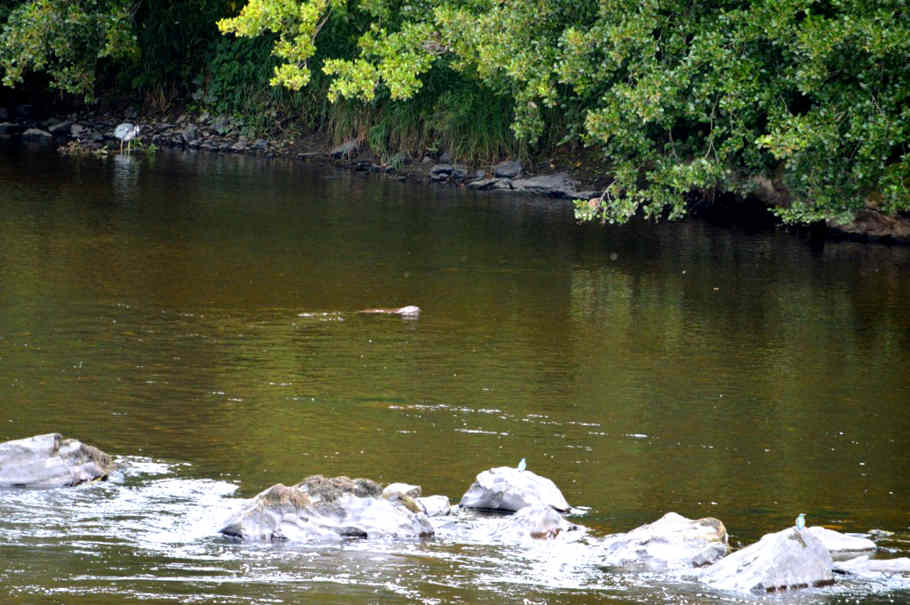
I remember now that a few years ago, during a short mid-summer night of sea trout fishing on the Loughor, I came across an otter behaving in a similar way. I spent from midnight onwards on just the one good holding pool, fishing the body of it as best I could with a variety of lines and lures. Sea trout, even large sea trout, will progress upstream through surprisingly shallow water during the darkness. This pool has shallow stickles over gravel below the tail, not far away from where I was standing, and it was perfectly possible to hear the change in the regular sounds made by fast trickling water over the stones as a big sewin came flapping its way up from the pool below. Ears become more sensitive in the darkness of night when there are no other distractions. A minute or two later there would sometimes be a Polaris-like leap from the new arrival on the pool tail. As the night went on, I became aware by the dim light of stars that an otter was there down on the stickles, crouching in the shallow water. He stayed there for hours, moving slightly occasionally, but returning always to exactly the same spot. I could see the outline of his alert head quite clearly. When dawn came and he was gone, I went down to look at the place and found there was a slightly deeper channel, maybe 10 or 11 inches deep and a couple of feet wide, under the steep clay of the far bank. This would have been without doubt the easier route up into the pool chosen by the sea trout. And right beside it was a patch where the algae had been worn off the stones by the otter during his long vigil. I wondered how often he caught one?
I have been wandering a long way from the main purpose of this newsletter. Let's get back to our fishing. We say goodbye to the trout fishing season now and to most of the wild streams, excepting the few which hold grayling. Still, there is plenty to do with the grayling fishing on the Wye and main tributaries, especially if fine autumn weather holds. The tiny pale watery duns and willow flies should continue to hatch for a while, in which case dull grey dry flies such as Grey Duster and Grayling Steel Blue, in size 16 or down to 18 if necessary, should continue to attract rises. When I wrote about spiders a few months ago, I failed to mention one important wet pattern which is a good imitation for the pale watery and usually fishes well at this time of the year. This is the Poult Bloa and here is the dressing:
Hook: size 14 or 16 Partridge Captain Hamilton wet or equivalent.
Body: waxed primrose or pale yellow Pearsall's silk
Hackle: pale under wing covert from a young grouse.
An alternative is Light Snipe or Snipe Bloa, which is very similar but uses the same under wing feather from a jack snipe. As the natural hatches dwindle, you can start to experiment with the "flame tails," both wet and dry, so see if Red Tag and Treacle Parkin or perhaps the slightly duller Yellow Bumble will be favoured by the fish. John Storey and Orange Otter make good change flies when fishing dry. I'm aware that these are all traditional patterns and that there are 101 new ones to experiment with, but whatever you try I suggest that for autumn grayling you keep the size small. If you are selecting from a "modern" fly box, try a small Griffiths Gnat.
By all means fish nymphs if nothing is happening at the surface, but bear in mind that before too long we will have no choice but to plumb the depths in one way or another and will be doing so until March. In not much more than a month now, as the sun lowers and the water cools, our opportunities for fishing any kind of fly at the surface are going to be severely curtailed. If anybody is thinking of taking up trotting for grayling this winter, I noticed a couple of good offers which are current at Glasgow Angling Centre. One is for a Greys Bewick 4.25 inch centre pin reel (no longer in production) for 100 pounds. That is a very well designed piece of kit for about half the original price. The other is something called a TF Gear Classic centre pin. I don't know this one, but it seems to have all the right features and is offered for 49.99. Combine one of these with a 12-14 foot float fishing rod, preferably one which does not have all the action in the tip, some fine nylon and some wire-stemmed Avon floats with hooks and shot and you are ready to go.
Tight lines for October!
Oliver Burch www.wyevalleyflyfishing.com
August 2015
This was hardly a typical August and, while water levels were low at times, nobody can complain about a heat wave spoiling fishing. Instead, cool weather, clouds and some showers characterised the month. One or two misty mornings felt almost autumnal. Rain caused the levels to lift slightly at times early in the month, but it was during the last week that there was enough precipitation for most of our rivers to come properly into spate and this disrupted trout fishing to some extent.
Until the rains arrived in quantity, the Usk had to struggle along with low summer flows. The Wye, on the other hand, was being reinforced with water from the Elan valley dams, according to the new agreement. It struck me that this water was fairly cold, or so it seemed while standing in the river, so I assume it is taken from the bottom of the dam. There was also a fairly pronounced peaty stain, shading from brown through to black according to the depth. Let us not look gift horses in the mouth; fish caught from the Wye seemed less affected by fresh water lice than in recent summers and the grayling in particular seemed to be in fine fettle already. It was interesting how often the upper Wye section between Rhayader and the Ithon and Irfon junctions near Builth appeared in the better results. These reports included some large fish which one would not necessarily expect during August.
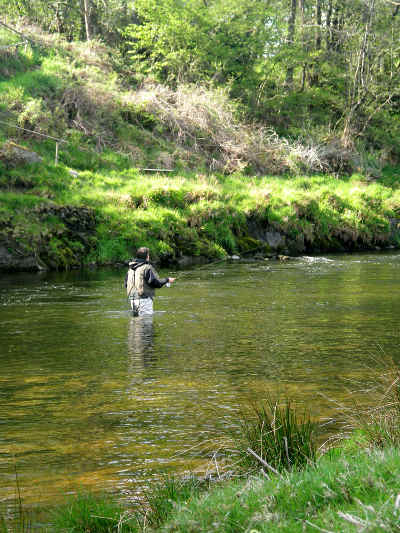
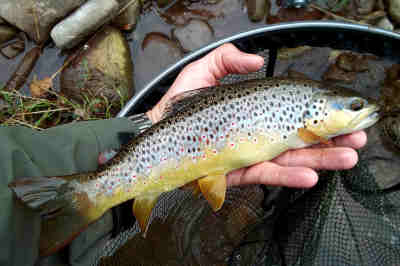
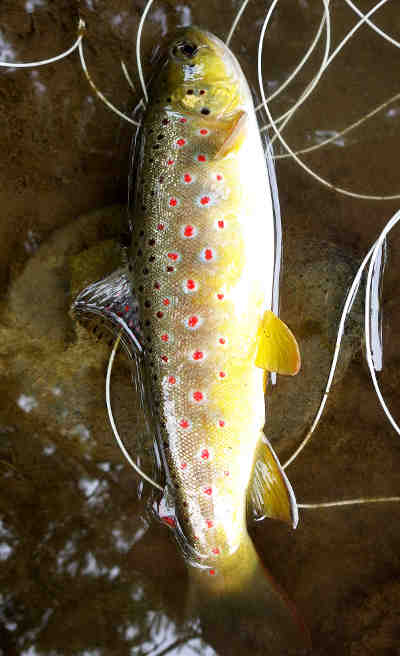
Craig Llyn is always a good beat containing specimen trout and grayling (and it is a good place for a salmon at the back end), but it fished particularly well last month. AM from Dorridge fished there on the 2nd and included a brace of 3 pound trout in his bag. On the 4th , TH from Warwick fished downstream at Doldowlod and had 1 trout and 17 grayling. He was out on Craig Llyn the following day and had 3 trout and 10 grayling, before moving on the 7th to Abernant, where he took 2 trout and 18 grayling. On the 8th , HW from Penclwdd fished the Irfon tributary at Cenllysgwynne to take 10 trout and 5 grayling, including a very impressive grayling of 19 inches. On the same day, PJ from Hereford had a couple of large fish in his bag of 5 trout and 15 grayling from Craig Llyn. Meanwhile, Dave Collins and Glyn Williams of West Herefordshire and Little Comberton were out on Ty Newydd, where they took 12 trout and 44 grayling. On the 9th , MB from Cwmbran fished Doldowlod and took 3 trout and 35 grayling to 17 inches. On the same day, MS from Cape Town fished at Craig Llyn and caught 2 trout and 24 grayling to 16 inches, commenting that it was "worth travelling 10,000 kilometres for." I have been out with a few South African anglers (Drakensberg dry fly men know what they are talking about) and I found that comment on our rivers quite flattering. Dave Collins was back in action on the 11th and took 8 trout and 45 grayling from Abernant. It took him 12 hours as the fish were "on and off" during the day, but that is an impressive total. On the 13th , TC from Ware fished Craig Llyn for 4 trout and 27 grayling. On the 15th , HW from Penclawdd fished the Usk at Fenni Fach and took 12 trout to 16 inches. He also reported a poaching incident promptly to NRW, for which thanks. On the same day, PJ, JB and SG from Churchdown had a 20 inch trout in their bag from the Wye at Doldowlod. On the 16th , MB from Cwmbran fished Craig Llyn and had 2 trout and 13 grayling, one of which was a big fish at 19 inches. On the 17th , Dave Collins was at Dolgau where this time he had 8 trout and 18 grayling, and on the 18th he fished Craig Llyn with Glyn Williams for 2 trout and 28 grayling. On the same day, SC and JT from Bristol fished Doldowlod for 31 grayling. One of these was another 19 inch fish. On the 20th , MN from Bristol fished Craig Llyn for 1 trout and 20 grayling, including a 19 inch fish and a real monster of 20 inches.
On the 22nd (and it's nice to be able to mention another river for a change), DP from Neath fished a long section of the Taff in high water and got 36 trout. He was using nymphs on a French leader and the best fish was 21 inches. On the 24th, JC from Chepstow fished the Honddu at Lower Henllan and had 15 trout on a mixture of dries and nymphs. On the 27th , AM from Dorridge had 15 trout and 3 grayling from the Lugg at Lyepole. On the 28th, CD from near Northwich fished the Irfon at Cefnllysgwynne and took 8 trout and 3 grayling. And on the same day, JL from Bedfordshire took 12 trout from the gorge of the Cletttwr. It's already been suggested, but I really think there should be a special club for those who successfully manage to complete the rigours of the Clettwr beat. Perhaps members could be awarded a tie depicting an angler falling backwards into a deep pool. Those over 60 probably should have a gold medal. Finally, it was nice to see MW from Ashford back on the Longtown Monnow beats. I just want MW to know that I took my wife for a short and peaceful break staying at the Longtown Crown the other weekend and I didn't even pack a fishing rod. Is that the sign of a dutiful husband or what?
So we can see from the results that grayling came more and more into the picture this month on the upper Wye. As is often the way, many catches involved large numbers of 8-12 inch shoats, but a few of the better specimens were around. All the same, grayling can be contrary little blighters at times, can they not, particularly in their way with a dry fly? Now generally I'm a believer in smallish dry flies for grayling in our freestone border rivers. Clients arrive from Hampshire with boxes filled with size 12 and 14 flies, and then they are surprised to see mine, which are mainly size 16 and 18. There is also a little box living permanently in my top vest pocket, marked "micro-use 6X tippet." This box, which contains flies down to size 24 including some American Trico Midge patterns, isn't resorted to so very often, but it is useful on occasions. It has come out for use a couple of times in the last month.
One was with a client on the upper Wye, when we found ourselves surrounded by smutting grayling which wouldn't look at a size 16 Griffiths Gnat. It turned out they would take a size 18 version of the same fly with a very much reduced hackle. My client was new to the game and although he caught half a dozen, he missed a lot more rather nervous takes. Then he lost the fly and it turned out that was the last one in my "day box". There were some more in the car, but rather than walk back to it, I tried a size 16 version, again with the hackle reduced by trimming. No, they wouldn't take it. So I turned back to the little box and dug out one of the "No Name" grey midges designed by Ed Koch for the limestone streams of Pennsylvania. It was tied on a size 24 hook. Instant success; it seemed they would have that all right! On that occasion I concluded that size was more important than anything else, including colour. Checking the surface you could see a mixture of tiny insects, more or less microscopic in scale. A sedge hatch was also going on, but the grayling were resolutely ignoring these. Incidentally, I rarely go below 6X tippet, even for these little flies, and although I have 7X and 8X nylon, it tends to stay in the car. I never see any merit in fishing any finer than you absolutely have to, thereby risking break-offs.
Another day, another client, but on the same part of the river, and we had a very similar experience. We were fishing with a Grey Duster this time, and it seemed a size 18 would provoke some nervous takes. In an attempt to engender a bit more confidence in the grayling, I tried various other flies without success. Again the sedges were hatching, but the grayling were totally uninterested, preferring to pick up various tiny items from aphids to smuts floating in the surface film. So we carried on with the Grey Duster, and as the light began to fade on a rainy evening, the takes became more positive by the minute and my client was able to hit a much higher proportion of them. During a purple patch before dark, a size 16 was attracting rise after rise, some of them larger fish in surprisingly shallow water, and my man was able to finish his day with 15 or so grayling as well as a couple of very nice trout.
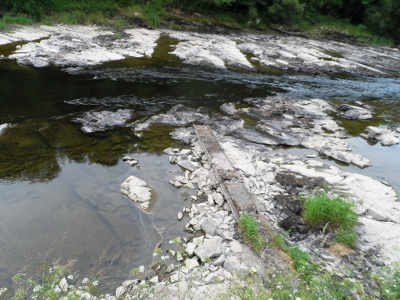
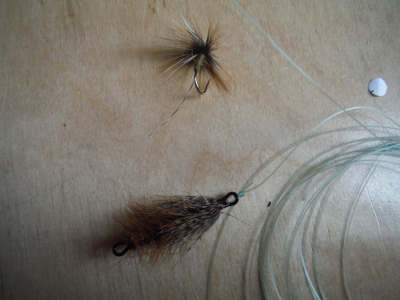
Same week, same water levels, I was fishing for myself on our own beat nearby. Rather intrigued by an article by Dave Riding (Fly Fishing and Fly Tying, September), I thought I might try a few low water experiments for salmon. Dave Riding's Dropper and Drag dry fly technique (apparently discussed with Falkus many years ago) is intended to tempt salmon to the surface from the fast water at the heads of pools during summer low conditions. Well, we hadn't seen a taking salmon for a couple of months and even in low water conditions we have plenty of deep fast running gutters on our water. It would be worth a try, or so I thought. With a 14 foot salmon rod, chosen purely for its reach, I had on a 7 weight floating line and a leader of 12 feet of 12 pounds BS nylon. On the point was a 25mm Waddington shank, weighted with lead and dressed with a buzzy palmered hackle. Note that no hook was attached - the sole purpose of the Waddington was as an anchor to "grip" the current and stabilise the dropper fly 5 feet further up the leader, so that it could be made to furrow a wake along the surface, and even skip across the current. This dropper fly was dressed on a size 10 Kamasan B175, with two stiff stripped hackle stalks for a tail and a really stiff collar of Greenwells cock hackle. The whole purpose of this dressing was to maximise the surface disturbance and make the fly's action as attractive as possible. When I tried this rig out, it all seemed to work rather well. By standing close to the edge of the gutter, provided I did not have too much line out, it was easy to work the dropper across the fast running water a couple of times, then take a step down and so search the surface foot by foot. This dancing fly looked extremely attractive, or so it seemed to me, just the thing to torment a great salmon up from the depths to make an attack. I steeled myself for the sight of the great head and body rolling up onto the surface and reminded myself that when the moment of truth came I absolutely must give it time to go down with the fly before tightening.
But no such thing happened. What did happen was that, as I worked my way along, admittedly in slightly steadier water, a series of grayling suddenly appeared from nowhere and grabbed this beast of a fly, the hackle of which was about an inch in diameter like one of Powell's "Fuzzy-Wuzzies". They hooked themselves thoroughly in the process. One of them jumped out several inches to grab the fly while it was dancing along in the air, and he too was well hooked. What price tiny flies now? Riddle me that one if you can!
One of our regulars, JD of Porthcawl, was in contact recently, asking if some advice can be given in this newsletter about reading water gauges to predict rises and falls in levels. (JD, it's a difficult subject as I'm about to explain, but we will try to put something together for a subsequent letter). In fact it's particularly difficult, when rain occurs, to work out when or whether rivers and streams which have been at summer level for weeks, are suddenly going to rise into flood. This last August has been a difficult month at times, with the rivers up and down. River levels, of course, are even more important for the salmon and sea trout anglers.
Now I should explain at this point that there is a disease which some of us are prone to, a disease very well known to the staff at the Foundation, generally known as Salmon Fisher's Twitch. Sufferers from the Twitch can be recognised at a glance by the fact that that through their waking hours they are feverishly playing with tablets, laptops or other internet devices, constantly checking weather forecasts, water gauges and beat bookings. Occasionally they attempt to relieve the tension by ringing the Foundation for advice: "What do you think? Will there be enough rain to send the river up? Where exactly should I fish to give me a chance of a salmon on Saturday?" Foundation staff advise as patiently as they can and the disease spreads steadily as the season progresses into the autumn.
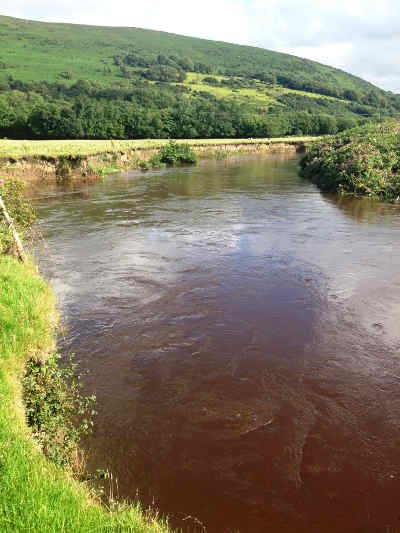
I know all about this because I suffer from the Twitch at times myself. The onset of modern information technology and especially social media has only made it worse. It doesn't seem so long ago that I was ringing up the unfortunate (non-fishing) proprietors of guest houses near the river with questions such as these: "Did you take the dogs for a walk yet this morning? Did you by any chance look over the bridge? And what colour was the water? Would you say it was like milky coffee or just weak tea?" Now the internet makes most of the information almost instantly available, except for really accurate predictions about what is about to happen with river conditions. Somehow this stresses the nerves even further.
If you are interested in sea trout as well as salmon, the situation becomes even more complicated and worrying. Imagine this scenario. I have a night of sewin fishing planned for the Towy. For fly-fishing at night I want low and clear water - and the Towy has been just so for the best part of a week with plenty of sewin now in the pools. There are a few other ducks I would ideally like to get in line - a warm and cloudy night, dark of the moon, high spring tides - all these would be nice, but will hardly be possible for every fishing trip. On the morning of the planned excursion, I see the new weather forecast is for quite heavy rain through the afternoon and into the evening. That's no good, I think to myself. The river is going to rise and colour. If there is one thing I know, it is that is close to useless to fish at night on a rising, muddy river. Therefore I cancel the night fishing idea and decide that instead I will go salmon fishing on the Wye next morning. A rise in the level there should be just the thing to bring a few salmon onto the take.
So I congratulate myself on how intelligently flexible I am being with my fishing tactics and fall asleep with the rain beating on the bedroom window pane. When I wake up in the morning, find the rain has stopped and check the gauge online, I see there has been no rise at all in the Wye, which is still on summer low. It seems that, after a long dry spell, the rain has been sucked into the ground and into the leaves of trees. After all the anticipation, there will be no good salmon fishing today. Twitch! More time wasted. Later on, though, I receive from a friend one of those "morning after" messages seemingly addressed to everybody he knows. This chap did go sewin fishing on the Towy last night and he had no trouble with coloured water because the Towy didn't rise either. The message includes one of those grainy mobile phone photos taken in the dark of a magnificent 10 pound cock sewin being returned.Twitch, twitch! Of course I answer his message, congratulating him on the wonderful fish and telling him how pleased I am for him. Really I am! Twitch!
About then I see sense and decide to forget the whole migratory fish business of trying to be in the right place at the right time. Instead I put the little rod in the car and go off to fish a brook for brown trout. At once I start to relax. There are rising fish here and there. I can see them. Not like these silver tourists - fish which of course may, or may not, be there. If I miss one of these modest trout, it doesn't really matter - there will be another one round the corner. For the rest of the day I start to get my life back and feel like a human being again. I look at the scenery. I even catch a few trout and pop in to the local for a pint afterwards. I'm polite to my family. But now what's this? Once more my so-called friend is making with the messages, this one addressed to everybody except God. I think I saw the Pope's name on the list, though. On this occasion there is a picture of a salmon in a net. It seems he woke up and felt like more fishing, found a South Wales river which had risen slightly, spun for an hour and this was the result. He thinks it might have weighed 15 pounds: a good fish for the Loughor. Twitch, twitch! This is too much! I resist the strong, if ignoble, impulse to reply telling him it doesn't really look like 15 pounds to me, but the nervous twitching is now virtually uncontrollable. I imagine it probably won't be cured until October 17th .
The message I have from all this and now pass on, for what it is worth, is that brown trout and grayling fishing will make you a happier and more sociable person. At least these fish have the decency to be in the river all through the season, do they not? But there is more. A couple of evenings later, the twitch takes over again and once more I have the sewin fishing impulse. As I put the tackle in the car, my wife Nerma says encouragingly: "You know what? I have the idea you are going to catch a decent one tonight. I can feel it in my bones." That is interesting, I think to myself. She never said that before. So, despite a persistent headache I have had all day which won't be improved by a long drive and dark hours standing in the Towy, despite some current tennis elbow trouble in my right arm which I know will be exacerbated by casting big sewin flies with a 10 foot 7 weight rod, I head off to Carmarthenshire. There I find the river low and clear, just as the gauge indicated.
Long story short, just before midnight, there is a violent pounce on a surface lure which I have cast under the dark shadows of the far bank, that famous thrashing on the surface, followed by a downstream run with the rod bucking and the reel check whirring. Then the fish comes upstream under the black overhanging trees and I have to wind in fast to keep pace. My pulse rate doubles and my right elbow hurts like hell, although I ease it when I can by holding onto the butt section with my left hand. The fish starts to circle and I unship the net. It is no monster, as it turns out, but a 25 inch silver torpedo all the same. With artery forceps I release the Towy Intruder which was hooked firmly in the scissors, hold the tail for a moment and then watch the fish undulating away into the darkness from the pool of headlamp light. It is the only take of the night, but never mind. As my wife predicted, it was a decent one - a respectable catch. Towards 2 o'clock, lured by thoughts of the flask of coffee in the car, I walk back across the dark fields and the railway line, barely able to hold the rods with my aching right arm. The green eyes of sleepy cattle stare at me. I text "you were right" to her (but she won't be awake) before driving. I will be home before dawn. Everything now seems well with the world and the twitch has disappeared for a while. And by the way, just to show Lyn Williams that he really is still a friend, here is the picture of the wonderful 30 inch Towy sewin he caught while fishing the other night with his father Eifion.
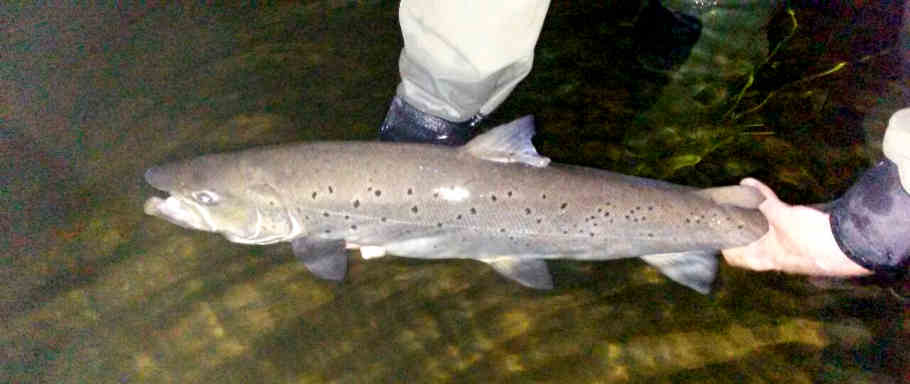
What comes next? Hopefully some of the best of the year's fishing - as is well known, I just adore an autumn spent chasing after grayling on the upper Wye and tributaries! Let us not neglect, though, the last month of the trout season on the Usk. Some good fish can be taken from the Usk in September, although they are unlikely to be as naïve as they were during the early season. The same goes for tributaries such as the Monnow and all the smaller trout streams which are open for another month. We can still expect sport from the top of the water and dry fly men will find plenty to interest them as the fly hatches increase for a while again in cooler autumn weather. Sedge hatches become more and more important as the year wears on and now it is acceptable sometimes to permit a dry fly a bit of drag on the surface if you can see the fish are interested in scuttling sedges. The grey willow fly, familiar creature of mild autumn days, is already out and about with its rather clumsy flight and doubled up wings, which mysteriously become so neat when folded and at rest. This is also very much a time for terrestrial insects, everything from beetles to crane flies, to be taken by fish when blown onto the surface. Pale wateries will still be around and the iron blue is not unknown late in the season. Midges, like the poor, are always with us. Eventually, as the temperatures drop, we will begin to see the large dark olive again, as we will continue to see it, intermittently, through the winter. On the middle to upper Usk, you might just come across an unusual up-winged fly, large and very striking, boasting a chestnut coloured abdomen with pronounced segments. This is the autumn or august dun, which could easily be mistaken for a march brown. However, take it from me, if you see this insect in September, it cannot possibly be a real march brown, although an artificial March Brown in size 12 from your fly box is exactly the one to imitate it. Fenni Fach is one Usk beat where I have often seen trout taking them with enthusiasm.
Over on the Wye system, I will probably still be using a series of small greyish coloured dry flies such as Grey Duster and Griffiths Gnat, and certainly the Grayling Steel Blue. I love everything about that fly, from the way it looks to the fact that a single quick false cast dries it and also that it is so easy to make. Grayling and trout seem to like it as much as I do. I will have some terrestrial patterns on hand and small versions of the Hair Wing Sedge for caddis feeders. The more colourful flies come into their own as the natural hatches eventually dwindle, although the fish are still looking up. John Storey will certainly get a swim then along with some of the other grayling traditionals, such as Red Tag and perhaps Orange Otter as a change fly. I have come to be fond of Yellow Bumble in recent years. Generally speaking, number 16 is the useful hook size for both dries and spiders.
Tight lines for September!
Oliver Burch www.wyevalleyfishing.com
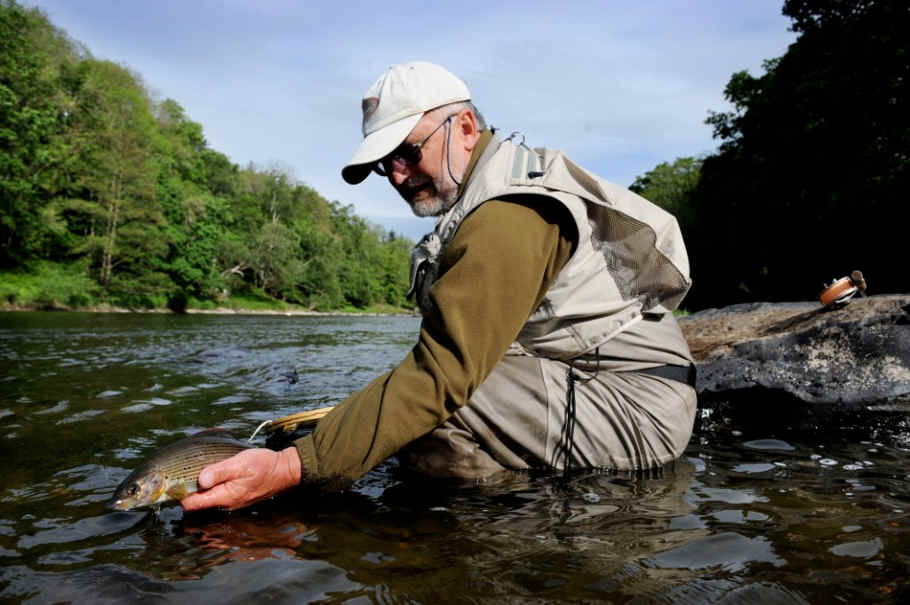
July 2015
I don't suppose that the non-angling section of the population would agree, but the past July was not such a bad month for our purposes. Neither heat wave nor drought really developed and eventually the weather became quite cold. We had plenty of cool and cloudy days, although often the showers which actually fell did not amount to very much. Twice there was enough concentrated rainfall to give a lift to the main rivers and the second one on the Wye eventually produced a flood from the top end, enough to start the salmon running. For the rest of the month the new regime at the Elan valley dams kept the upper Wye from going down to the very low levels seen in recent summers, although not so much of the extra water seemed to escape the diesel pumps of Herefordshire irrigators and reach the bottom end. There was an interesting tinge to the Wye water at times this month, sometimes distinctly red, presumably with peat from upland bogs, and sometimes blackish. Was that from the Irfon or the Elan? I have a preference for the red stain myself. The poor old Usk, without compensation flows, probably suffered more from the lack of water.
As usual in the middle of the summer, there was much less fly life visible on the main rivers than in the spring, although a few late mayflies were still to be seen on the tributaries even at the end of July. In these circumstances of low, warm water and a slowing of the insect hatches, fishing can be difficult and the larger fish generally do not feature so much in the catch returns. Nevertheless, there can be some good late evening fishing on both main rivers at this time of the year. Simon Evans at the Foundation was telling us about a blue winged olive spinner fall and adventures on an Usk pool tail with a Sherry Spinner. On the Wye, the grayling began to feature more in catch returns. Meanwhile, some of the smaller streams fished distinctly well, particularly the Monnow headwaters and the Edw, while there were more reports of good fishing in the Taff. Upland lakes also fished well at times and I had a couple of memorable evenings on Talybont. Apologies as always for anybody's notable fishing day I have left out - we do appreciate that special days don't always involve lots of large fish:
On the 1st of the month, PW from Brecon fished the Usk at Dinas and Abercynrig and got 11 on an Elk Hair Caddis. On the 2nd , RW from Portishead caught 15 from the upper Grwyne Fawr on a Parachute Adams. On the following day, DP from Neath had 36 from the Taff Fechan using an Olive Klinkhammer. MB from Cwmbran went to fish the Wye at Abernant on the 4th and got 15 trout with 20 grayling. On the 11th , HW from Pencawdd got 5 trout and something over 20 grayling from the upper Wye at Craig Llyn. On the 15th , RA from Holme Lacey tried the new Ithon beat at Llandewi and got 12 trout with a Tenkara rod. On the same day, RW from Portishead took 15 trout on the dry fly from Aberedw. Dave Collins of Moccas was out on the 16th and took 12 trout and 15 grayling from the main Wye at Ty Newydd. HW from Penclawdd was another who tried the Usk on the 18th , and got 13 fish on heavy nymphs at Fenni Fach. On the same day, PS and SW from Yarpole fished Craig Llyn and had 3 trout and 30 grayling. On the 19th, AT visiting from Scarborough fished a late evening on the Usk at Glan yr Afon, catching 9 trout to 2 pounds (BWO spinner fall perhaps?). Dave Collins was out again on the same day and had 5 trout and 7 grayling from Doldowlod on the upper Wye. Dave was fishing again on the 23rd , at Craig Llyn on the upper Wye and caught 13 trout and 29 grayling. The same beat pleased MN from Bristol on the 26th, "...the rain came down and the fish came on..." and he caught 6 trout to 16 inches and 20 grayling to 17 inches, mostly nymphing with a long leader. On the same day, JD from Porthcawl had 7 trout on an Olive Klinkhammer from the Upper Crai, where he was delighted to meet a family of otters. On the 28th RS from Upton-on-Severn took 11 from the Garren Brook with a small F fly – and yes please, Mr RS, we would be delighted if you would like to help with the wild stream maintenance during the closed season. And on the 29th , DP from Neath was out with a friend on the Taff where they took 36 trout with dries and nymphs.
My favourite recent report (and please forgive the teasing) was from the gentleman who caught his brace of trout with a "Tup’s Indisputable" fly. Now of course I wouldn't dispute it, not for heaven, but can we have the dressing for that one perhaps?
What can we expect next month? The dog days of August are now on us and with the best will in the world we can't reliably assume that the main Usk and Wye will fish at their best.... unless, of course, we get yet more rain to freshen them up. There are plenty of other things to do. If the water is low and clear, on warm nights it's still a great time to head west for Carmarthenshire and the sea trout. You will need to give the family some sort of explanation for adopting a nocturnal life-style (in the Forest of Dean, where I live, censorious neighbours still tend to growl "dirty stop-out" at men seen slinking home at dawn). A shower or two might earn you a Wye or Usk salmon if the rise in level is enough to stir them up. The brooks should still have a few trout on the rise beneath shady trees. And of course there are the mountain lakes and the particular charm of fishing "loch-style" with a team of three wet flies and the top dropper trundling its way through the surface ripple, ready to provoke an attack from below.
I wish we had more of that kind of fishing and that I was not forced to drive so far for it. The hill lakes give us a special kind of sport, putting the angler in touch, not only with water, but with wind and light and sky. North Wales is rather better gifted with wild trout lakes than the South, while Scotland and Ireland are more than generously endowed. If you live in the Scottish Highlands or Islands, this will likely be most of your trout fishing. Still, the WUF has a few gems in the Welsh catalogue which really should be experienced. On Llyn Gwgia you can short-line your flies in front of a drifting boat, which really is loch-style fishing at its best.
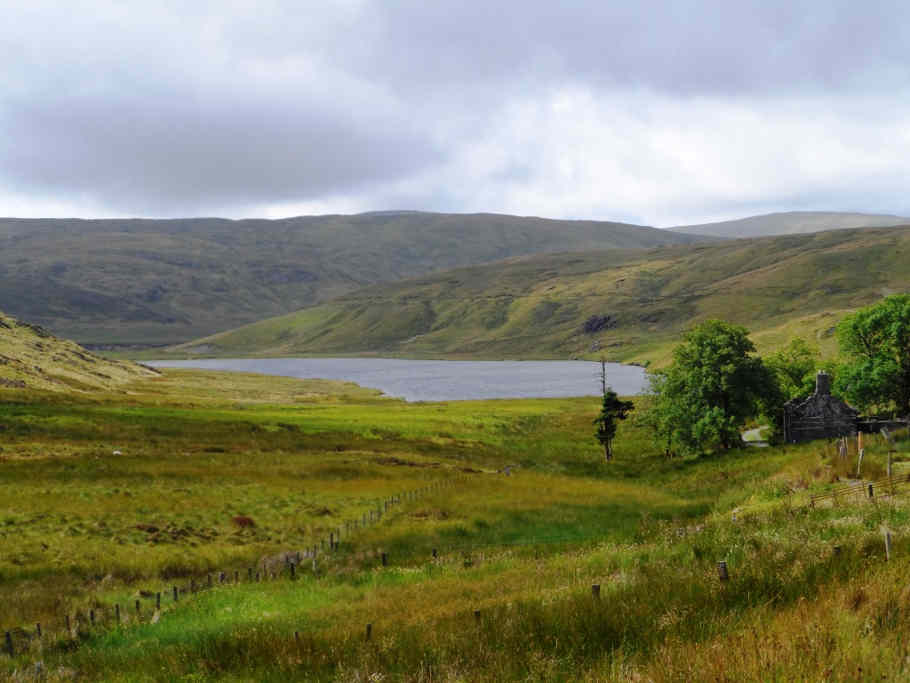
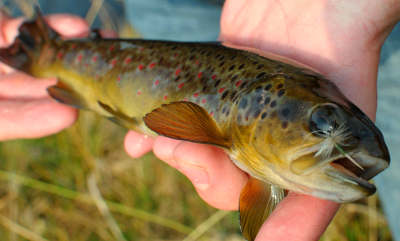
Llyn Bugeilyn, in truly lonely country on a head stream of the Dovey, requires a four wheel drive or a hike to reach it, but contains its own race of black-finned trout living in peat-stained water. Frank Ward in his Lakes of Wales wrote of Bugeilyn: "The Shepherd's Pool lies, dreary and remote, on a desolate tract of elevated moorland north of Plynlimmon." Well, bad weather can make it seem dreary perhaps and you should be prepared for that, but the view on the journey up can be magnificent, looking down on clouds and valleys below. Plynlimmon, seen to the south in a fiery sunset, can appear like a Turner painting. Teifi Pools near Tregaron have been famous in angling literature for a century or more. Llyn Berwyn, with some larger trout often very ready for a dry fly, has its own band of enthusiastic adherents.
Further south in Wales we have the water company reservoirs, some of which are perfectly good stocked rainbow fisheries, while others are reserved partly or entirely for brown trout. The one which has always fascinated me is the fiord-like Talybont, which is not so far from the Usk valley and not very high in terms of altitude, but is nevertheless closely hemmed in by beautiful mountains and forests. It can be a bit of a "heart-breaker" as they say in Wales, and my early trips were often fruitless. Long hours spent in the wind and waves might be interrupted, just once, by a sudden pull and the sight of a good fish cart-wheeling above the surface in the distance before coming off. Still, the continual presence of cormorants was a clear indicator that something was out there to be had. There was plenty of food in the lake. I remember wading through masses of big empty buzzer shucks on the downwind shore in spring and seeing some very big sedge hatches on summer evenings. I got to quizzing those members of Merthyr Tydfil Angling Association who know the lake well, trying to find out what I was doing wrong. One conversation with a chap I buttonholed in the Usk Inn went something like this:
"What is the secret about Talybont then? I mean I've asked around. Some say you fish the duck fly hatch in spring with midge imitations. Or you can pull rainbow type lures on a sinking line through the deep water. And some say you should fish the structure, where the old causeway goes down into the water. Others think you should fish a muddler pattern fast across the surface when there is a wind and a big wave. Or fish around the weed beds. Or just concentrate on fishing during the evenings. What do you think I should be doing?"
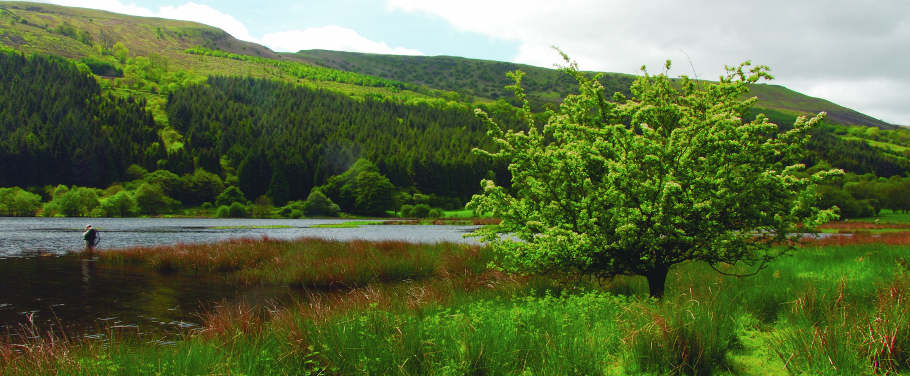
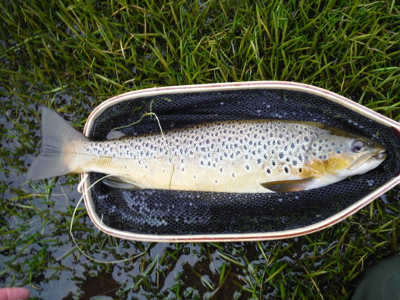
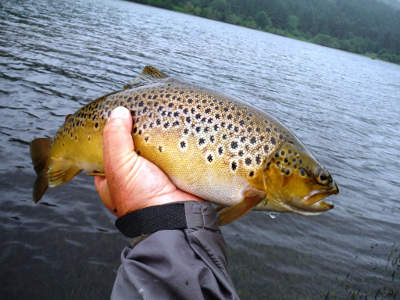
"Well," said my fount of knowledge with an air of having considered all that very carefully, and after taking a long draw on the pint I had just bought him, "All of those, I would say."
I pass this conversation on for what it might be worth. What I have found useful is the last suggestion, to fish during the evening. The reservoir, I gather, is occasionally lightly stocked, but it also contains a healthy race of wild brown trout, which look to me very like Usk fish. The Usk, I suppose, going back to the days before the reservoir was built, would have been their genesis. The Talybont stream at the head of the lake still affords a short stretch of spawning gravel. Just as in the main river, I think I can identify a silvery and a golden strain. Plenty of 6-10 inch fish seem to live around the weed beds, which are more exposed when the level of the reservoir is a little down. However, there are much larger fish than those in Talybont. Some of these seem remarkably canny about approaching the shore, keeping well out in the lake until the light level drops, although I have seen a big one harrying shoals of sticklebacks into the bank at midday.
So, hope for a soft cloudy sky and a wind. Truth to tell, I don’t mind a sky of lowering cloud and a big wind, "the old wind in the old anger," pushing white horses down Talybont, provided only that the blow is not so strong or in such a direction as to stir up silt in the shallows. My general tactic is to fish for the two or three hours before darkness falls, keeping on the move and searching my way along the bank with a team of three wet flies, ideally casting across the ripple, watching the top dropper as it comes tripping along towards me. There is a high likelihood of a fish hitting that dropper, although others will merely swirl at it before taking one of the two sunken flies following along behind. I use a 10 foot rod and a 5 weight double tapered line, an outfit which has about enough authority to deal with the wind.
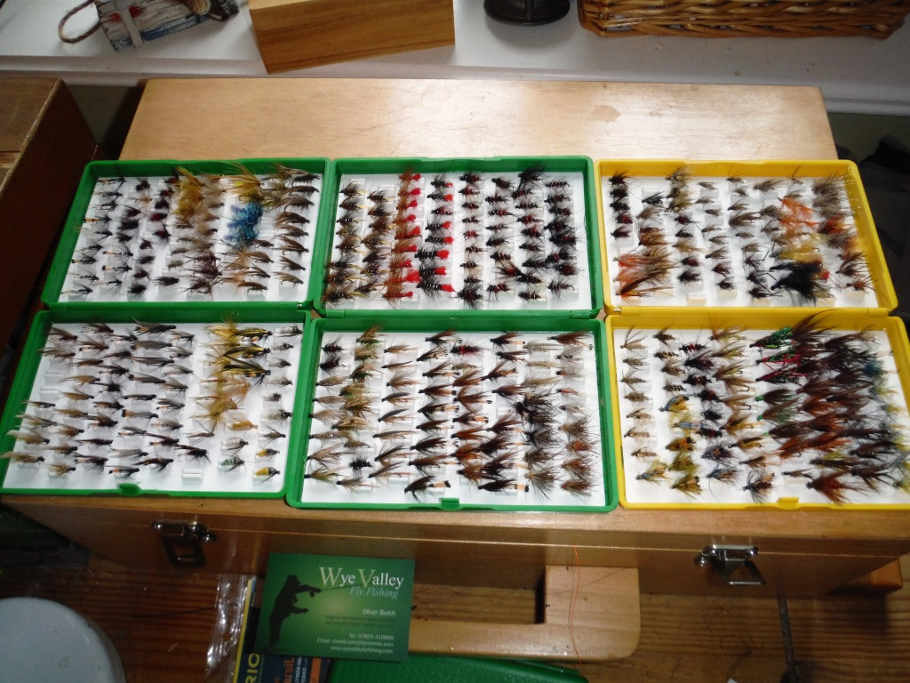
There are plenty of loch-style flies to experiment with, both the traditional ones and new ones from the likes of modern specialists such as George Barron and Stan Headley, mostly in size 12, but on occasions going up to 10 or perhaps down to 14, depending on the strength of the wave. Top dropper flies usually have a buzzy palmered hackle designed to make a disturbance in the surface. A Kate Maclaren is a favourite of mine for the top of the leader, but a Bibio is also very good in this position and so is a Zulu. If fishing a lake from the bank as opposed to a boat, I actually grease the top dropper fly to make sure it keeps up in the surface as much as possible. The other two flies should be anything but bushy, rather tied slim to give them a clean entry through the surface. Mallard and Claret or Grouse and Claret make a reliable point fly, as does a Silver Butcher if I suspect trout are interested in pin fry. There is often a quandary about the middle dropper position, often considered the least productive one, but I like a Harry Tom or any of the hatching olive patterns. There are many other good ones including Black Pennell and the wet Greenwells. All these are impressionist flies rather than exact imitations, although clearly some are definitely intended to mimic something in particular, such as an Invicta for a hatching sedge. On Talybont you will see the coch y bonddu beetle at times, so that the appropriate imitations will often work, as will various sedge pupa patterns. Lochflies generally are attractive to look at, rather more colourful than our usual run of river flies and spiders, relying on movement and little glints of well-chosen colour to do their work. The Irish are the real masters of blending colours when fly dressing, but look for the muted combined effects of black and claret, little hints of gold or silver peeping through seal's fur bodies, various shades of olive and fiery brown. If it looks right, it will probably fish well.
Loch flies are also often described as "pulling flies" and indeed you will need to pull quite briskly from a boat scudding along before a brisk wind, if only to keep the flies stationary on a reasonably tight line. When fishing from the bank there is no need to compensate for the speed of a drifting boat and I often figure of eight quite slowly, allowing the wind to do most of the work. As with all wild trout, takes are usually pretty solid and you will have your work cut out for a few minutes if you hook a big one which goes charging in and among the weed beds with spare hooks trailing behind it. Thankfully, evenings quite without wind are rare at Talybont, given the exposed nature of this mountain valley. It is not impossible to catch a lake trout in a flat calm, but a ripple is almost always better. What I really dread about such windless conditions are the tiny biting midges which then emerge and proceed to drive you quite mad, seemingly undeterred by applications of Jungle Formula. On such an evening you can be driven almost screaming from the lake, rubbing your scalp with one hand all the way home while trying to drive straight with the other!
In the March newsletter I bemoaned the loss of Upper Neuadd Reservoir, another much-loved upland lake. Since writing that piece, my son took me for a walk along the Beacons crest (where two walkers were tragically killed by lightning strike a few days later) and I got a look at Upper Neuadd from above. All that could be seen was an expanse of mud, notched surprisingly deep in the centre of the bed where the stream once ran. I could see then why the water company would be concerned about the strength of the dam. Another reservoir which used to provide some wonderful fishing was the one at Grwyne Fawr, lying in the very heart of the Black Mountains. This is a most unusual water, 1,870 feet above sea level, almost all of it very deep (to 150 feet), with banks sloping at around 30 degrees making them difficult to stand on. When the level was down and some of the lake bed of loose scree was exposed, it was rather like fishing from a house roof covered by loose tiles, trying to avoid the chimney on the back cast. In those days you bought a ticket from the last house on the road up the valley. Grwyne Fawr used to be stocked with rainbows, the truck coming up the valley on a perilous side track, before tipping the trout in from the top of the dam. These fish were bred at Bibury Trout Farms on the Gloucestershire Coln, yet interestingly, once introduced into this upland environment, seemed to take on the behavioural characteristics we associate with wild trout, taking traditional wet patterns off the top. As you might expect in such a deep lake, nearly all the productive fishing was around the margins, particularly at the places where side streams came down into the lake. Apart from the stocked fish at that time, Grwyne Fawr has a natural population of minnows (accidentally introduced by live-baiting anglers during the early years of the reservoir) and some wild brown trout, a few of which grow large.
Best of all in those days, anglers were allowed to fish Grwyne Fawr from float tubes, so that we could paddle around quietly and fish in towards the bank without any need to scramble across the hills from one stance to another. The float tube is a wonderful device for sneaking up on wary trout, far more effective, as I have proved on numerous occasions, than an unwieldy, noisy rowing boat. It is an elegant solution to the problem of making a quiet approach undetected. Unfortunately the idea of float tubing seems to make water companies and their insurance companies unaccountably nervous, although they have a much better safety record than boats, which anglers regularly manage to fall out of or to capsize. At first you feel somewhat clumsy reversing into the water with the device round your waist and a large pair of flippers on your feet – rather like an overgrown duck in fact – but once afloat and used to the system, everything falls into place and you can fish quietly and with great efficiency, manoeuvring yourself into position and holding there with occasional strokes of your feet. I can remember catching several wild brown trout of 2 pounds or so from the Grwyne Fawr margins, casting within inches of steep banks. Such fish, like the rainbows, would tow your float tube round and round during play.
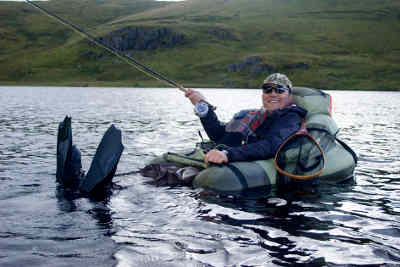
Sadly, due to poaching problems attracted by the stocked rainbows and the difficulty of patrolling this remote spot, fishing at this reservoir eventually lapsed. Now, to finish, I have a plea to make. Is there any chance that those good people at the Glanusk Estate, which has always held the fishing rights at Grwyne Fawr, could make it available again as a day ticket wild trout fishery, ideally via the Wye and Usk Foundation? Fishing at Grwyne Fawr is a great experience and I believe would be bound to be popular with visiting and local anglers alike.
Moc Morgan has gone and the angling magazines are carrying obituaries. It may seem like a cliché to make the remark, but the passing of Morgan John Morgan really does seem like the ending of an era. I only met him a few times, but it was always a great pleasure. From his Tregaron youth, where he learned so much about fishing, he could recall memories of some of the famous masters of the art. As a boy he met the Rev Edward Powell, one among the many gentry who stayed at the hotel during their fishing holidays on the Teifi. Moc himself was taught by the legendary Tregaron professional Dai Lewis and later wrote (in Welsh) a biography of the great man: In Dai's Shadow. (I think Moc's sense of humour might have been at play there in the most respectful way; Dai Lewis had a towering reputation as an angler, but he was physically quite short). Later in life, as a head teacher, Moc somehow managed to combine running a school with a remarkable amount of fishing and associated organisational work (although, from what I have heard about life in Central Wales a few years ago, it seems a lot of routine educational activities somehow became shelved while salmon and sea trout were running). Moc was honoured for the services he provided to Welsh angling, for his radio and TV programmes and for his encouragement to interest young anglers in the sport. He wrote Trout and Salmon Flies of Wales, still the standard work on Welsh patterns, and, with Graeme Harris, Successful Sea Trout Angling, which in my view stands alongside the Falkus book as one of the two you really must read on the subject.
It's difficult to explain the regard in which Moc was held within Welsh angling circles in later years; people would literally stand up when he walked into a room. Always full of fun, even when old and quite unwell he was seemingly up for any fishing adventure. When he told me he had somehow never got round to fishing our little River Loughor and wouldn't mind a try at it one night, I was all for inviting him as a guest of the committee. His wife Julia was wisely alert to that risk and intervened with a flood of Welsh to steer him off to safer conversations. Moc's son Hywel is still very much on the Welsh angling scene and has the same gift for conveying his lively enthusiasm and talking to the camera. Having attempted media training a few times myself, I think I must accept that is a talent which might be inherited, but cannot be taught - or so it proved in my case!
The wild stream maintenance group met at the Foundation during the month, to consider the past winter's work and next winter's priorities. We were feeling rather proud that we finally managed to complete trimming the Chanstone Court water, an interesting but naturally very bushy section of the River Dore in the Golden Valley. Some good fishing days were had at Chanstone Court this spring. As always, we would be interested in recruiting potential volunteers. It would be particularly useful to hear from anybody living on the Brecon - Sennybridge axis or nearby who might be able to do some maintenance on the Usk tributaries. I'm happy to be first point of contact.
Tight lines for August.
Oliver Burch www.wyevalleyflyfishing.com
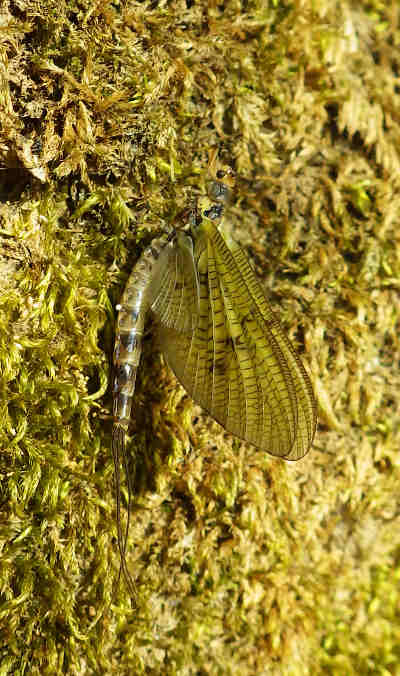
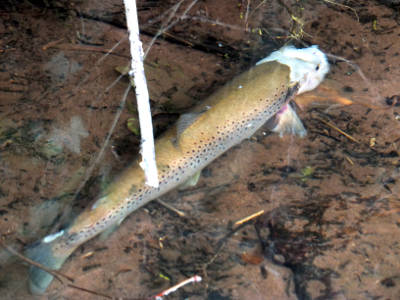
June 2015
June opened pretty well for us with heavy rains and plenty of water in all the rivers. As I had hoped, the mayfly fishing then carried on with plenty of the big white flies hatching for another week to 10 days in various places and there was some excellent sport reported. I accompanied clients on the Escley Brook and the Llynfi Dulais during this time and the dry fly fishing in both of these little streams was about as good as it gets. As the month went on, however, fishing on the main rivers got rather tougher as further forecast rains failed to materialise to any significant extent and the water levels dropped steadily. By the time of writing (28th June), we really needed some proper rain and catch figures were dwindling. It's normal enough to experience something of a pause in dry fly fishing once the mayfly is over, and you can notice from the reports that various forms of nymph fishing, including the duo method, are showing success again at this time. A team of sub-surface spiders can also score over the dry fly in such conditions and this report includes some advice on this North Country method.
During the month, there was an oil spill into one of the feeder tributaries of the Cannop Brook, apparently contained by prompt action from the EA. There were also more reports of Usk fish bearing fungus. During this spring I have seen several trout and one large salmon on the Usk quite heavily affected. My understanding is that this is not unusual during low and cold water conditions early in the season; the fungus spores are always present and will only affect a fish which already has an open wound. High water and warmer conditions make infection much less likely. Encouragingly, the trout we do catch seem to be fat as butter after their spring feeding and in pretty good condition.
We also had another very good month of angling effort and again there were many pages of reports to analyse. These were the ones which caught my eye and, as always, apologies for those omitted. On the first of the month, EM and GB from Denmark and Surrey had 16 trout in the rain from the Usk at Fenni Fach. On the same day, DC from Accrington was fishing the Edw at Aberedw and had 10 on large flies during a mayfly hatch. On the 2nd , we had a report from AJP from Crewkerne of 22 trout taken on nymphs by four anglers from the Teifi at Tregaron. On the day there were apparently difficult conditions of high water on this very famous fishery now marketed by the WUF. On the 3rd , NG from Sutton St Nicholas had a wonderful day at Arrow Mill, taking 13 good trout on mayfly patterns during a big hatch. DC from Accrington fished the Edw again at Hergest, "...probably the nicest piece of water I've seen," and took a dozen on large dry flies. RE from London had 11 trout from the Usk at Dinas and Abercynrig, while JB from Smallfield with a friend took 20 from the Middle Escley. They moved to the Olchon on the 4th , and had 20 more from that stream during a mayfly hatch. On the same day, MN from Bristol caught 10 from the Honddu at Maes y Beran using a small Elk Hair Caddis. Meanwhile, AD from London fished the Usk on the now combined Glanusk Ty Mawr and Canal and Rivers trust water, caught 10 trout and reflected on a clerical ancestor after whom Parson's Pool is named. EOB from Ireland fished the Teme at Bucknell and had a fine trout of 2 pounds 7 ounces with a dry sedge pattern. That is an impressive fish and it's good to see this beat featuring in reports. On the 5th , KP from Gloucester fished Monnow Valley with the mayfly hatch well under way and had 14 trout to 2 pounds. On the 6th , HW from Penclawdd fished Cwmwysg Ganol and had 16 trout up to an impressive 20 inches on nymphs. NG from Godalming had 10 to 1.5 pounds at Glan y Cafn. JR from Crewe filed an interesting account of fishing from a boat at Llyn Gwgia on the 9th . CT from Brecon had 14 trout to 12 inches from Aberedw on the 10th , while CK from Stourbridge had 11 small fish on nymph from the Disserth Ithon. On the 11th , SP from Coventry had 16 trout to 10 inches at Abbeydore, while MN from Bristol fished the Honddu at Lower Stanton and got a dozen up to 12 inches on a Parachute Adams. GS from Leominster fished the Lugg at Litton and got 14 up to 10 inches, fishing dries through the fast water. ST from Stoke on Trent was another who used a Parachute Adams to take 15 fish to 10 inches from the Clywedog "...probably the best day's fly fishing I have had." JD of Porthcawl had 14 fish to 10 inches from the Lower Cray, using a standard Adams. On the 12th , AB from London had a dozen to 12 inches from the jungles of Abbeydore Court using the duo method. My friend David Burren from the Forest of Dean enjoyed himself with 9 trout on dry flies from the Monnow at Skenfrith. On the same day JD from Porthcawl had 28 on dries from Aberedw - but see later in this letter for his thoughts about this. On the 14th , AT from Lincoln and a friend had 28 to 2.5 pounds from the Usk at Dinas and Abercynrig, mostly on the duo. On the same day, BP from Pembridge had 19 from the Clywedog using nymphs fished on the French leader system.
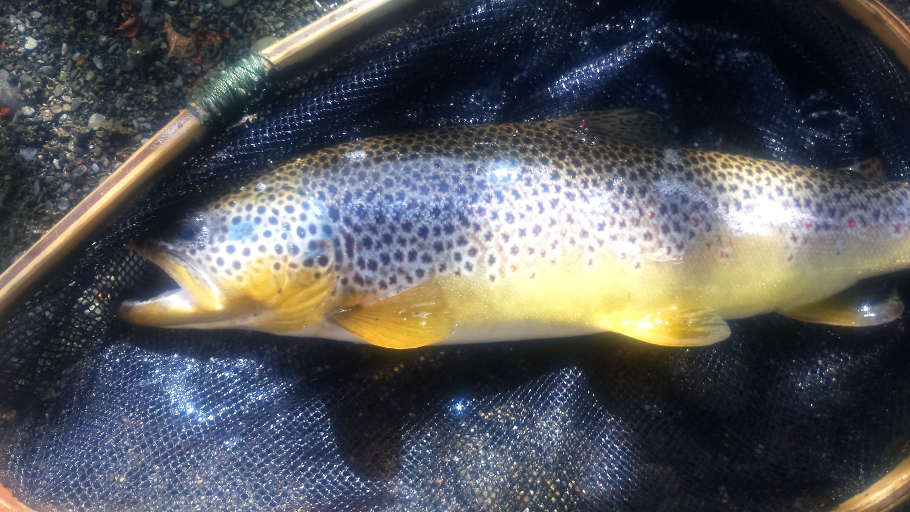
For the rest of the month, while the coarse anglers were out on the Wye and doing well (see Adam Fisher's report), the game anglers were beginning to struggle rather as the water levels dropped. There were exceptions.
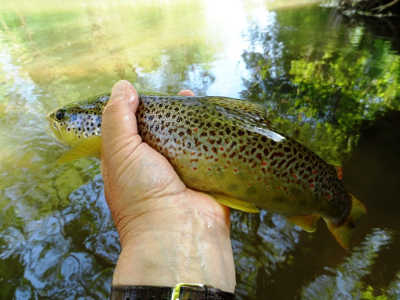
On the 16th , MP from Upton had 9 trout on dry fly from the upper Lugg at Pilleth. On the 18th , NM from Tetbury also had 9 from the Usk at Penpont, using a nymph in this case, and BM from Leight Sinton had a dozen from Ashford House on a caddis pupa imitation. On the 19th , KP from Gloucester found the fishing at Monnow Valley more difficult than during the mayfly, but got 10 on various dries. On the 20th MG from Cardiff with two friends took their limits on the Usk Reservoir during a hatch of lake olives using a variety of patterns. On the 22nd , GT and JD from Belgium reported a big catch of trout and grayling from the Rectory beat of the upper Wye. On the 23rd , NC from Warwickshire had 10 from the Arrow at Kington with an Adams. On the 25th , PB and JB from Churchdown had a good day at Ty Newydd, taking 12 trout and 18 grayling to 17 inches. The following day, Dave Collins of Moccas was also out on the upper Wye, describing a testing time at Abernant, but eventually taking 5 trout and 17 grayling, mostly on dry flies.
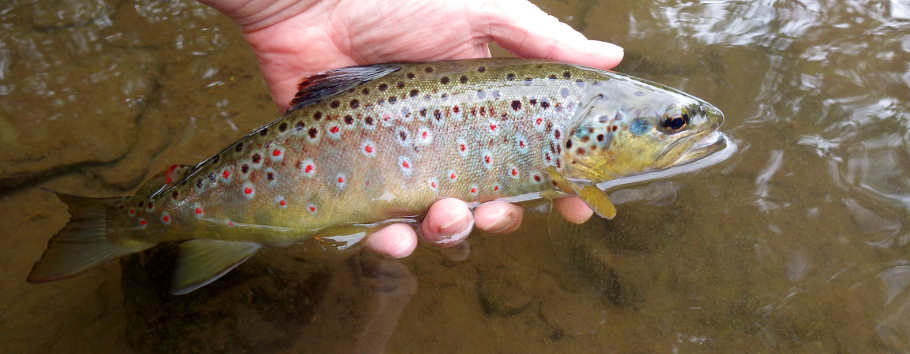
Looking forward again, July is not usually the best of months for main river fishing, although much will depend on the rainfall. If we have some heavy rain and floods (and we really could use some), look for a few days of good fishing to follow. Cloudy days will be better than sunny ones. If the water levels remain low, concentrate on evenings or early mornings. The grayling season is of course now open on the Wye and tributaries, although these post-spawning fish will probably be at their best during September, October and onwards. Shaded wild streams are now a good bet for fishing during the day, as are the upland lakes. Try an evening session on the Talybont reservoir. If the magic of fishing for sea trout by night has ever attracted you, now is the time to try it.
During the warmer months of the year I do some of my main river fishing with a team of what are generally known as North Country spiders. All the trout and grayling anglers of Yorkshire and Lancashire seem to know about these. Many northern anglers use them all the time and the method is almost as old as the hills. And yet, despite an extensive angling literature (with almost as much written about spider fishing as there is on the dry fly), and despite fairly regular articles about the method in the angling press, it's surprising how many southerners are not familiar with it. In fact more than unfamiliarity is involved; there is often quite a mistrust of a method which seems somewhat unlikely, of tiny flies which don't at first glance look realistically like any kind of insect which trout might eat, and also concern about the idea of fishing with a team of three flies on the leader, which can of course get tangled very easily. People who fish loch-style on lakes are used to the idea of fishing a team, but many modern river anglers do not normally go beyond a pair, "clink and dink" style. Nevertheless, people ask me about spider fishing all the time, and if I'm lucky enough to show them conditions for which the method is just right, they soon get keen on it. There is nothing like a few trout or grayling brought to the net to convince. I'm going to write about it in the question and answer format:
What exactly is spider fishing? There are two common misconceptions, which I should deal with first. One is that we are imitating terrestrial spiders fallen into the water. Not so. While many of these flies consist of no more than a body whipping of coloured silk over the hook shank, together with a sparse collar of game bird hackle fibres – at first sight somewhat spider-like in appearance - the intention is to imitate the same aquatic insects, up-winged flies etc, as other more conventional fly fishing methods. Until we can find a trout or grayling prepared to be interviewed, we won't know for sure, but the general feeling is that these flies are taken either for the hatching nymphs arriving at the surface and about to hatch, or adult duns which have failed to hatch successfully or been drowned by rough water and are now floating downstream in an untidy tangle of legs and wings. Taken they certainly are, with great readiness at times.
The second assumption is that this is a method of fishing much deeper than the angler who has his dry fly on the surface. This is not true either. Spiders, strictly speaking, are fished either on the surface film or not far beneath it. Most of the time, you will be working your team in the top 6 inches. Therefore the method, like the dry fly, has a requirement that fish are prepared to rise. Of course, it's perfectly possible to add a weighted nymph to the point of the team in order to search the lower layers. I do this very often if I want to make an experiment when things are quiet as it's such an easy modification to make to the tackle. But this is not strictly spider fishing, which should really be seen as an alternative to the dry fly for fish which are prepared to rise at least most of the way to the surface. When I'm hoping for top of the water sport, I tend to go to the river with two rods made up ready, one for dry fly and one for spiders. Generally speaking, spiders work better in fast water than in slow glides and pools.
What sort of tackle is needed? You can fish a team of spiders perfectly well with your standard 9 foot trout rod, the same one you use for dry fly fishing. But if you do much of it, you will soon conclude that a longer rod will be very helpful, for holding the line clear of the water and mending it to control the movement of the flies as you fish. I use 10 foot 4 weights and I like a reasonably slow and soft action to them. A few years ago, it was difficult to buy such a rod (the old Grey's Missionary 10 ft 3 inch was about the only one), but now that close nymphing has become so popular, almost every manufacturer is making them. So the good news is that your spider fishing rod will almost certainly double up as an efficient Czech nymphing rod! A nice river trout reel, which can be slightly heavier than most to balance that longer rod, can be loaded with a floating line. People smile at me for continuing to use double tapered lines, but they do suit this kind of fishing, which is not going to be at big distances and where a nice turnover of a long leader is going to be vital. In fact all my river lines have a mark made with a water-proof felt pen at 30 feet. When that is outside the tip ring, it's a reminder to me to consider wading closer to the fish unless I have no choice but to engage in "long-range sniping" because I can't get nearer. The more line you have out on the surface, the more takes you are going to miss. Trout and grayling are not salmon; they do not "hold on" to a fly for long.
The leader set-up will to some extent depend on whether I'm planning to fish upstream or downstream (and more on that much-vexed subject in a moment). There will be a tapered butt section as usual, which can live with the line on the fly reel. The rest of the leader is a tippet section about 8.5 feet long, which I still make up with standard 4X or 5X Bayer Perlon nylon, a material which I thoroughly trust, having used it all my angling life. I get through a lot of these, so I make them up in a good light at home and carry spares in a wallet. There are two droppers, giving 3 feet between each of the flies, which I find suitable for the relatively clear waters of our rivers. It is important that the dropper sections are not too long, or they will tend to twist around the main line if used and retrieved through rapid currents. Three inches or four at the most are enough. And for the same reason, try to ensure that you do not use flies which have any tendency to spin. Do not dress spiders on hooks with an offset point. In the autumn, do not try to cast off leaves which whirl like little propellers.
That arrangement will give you an overall leader length of about 15 feet, which is fine if you are going to fish across or down, or the wind is not too contrary. If you are definitely going to fish up or the wind is troublesome, however, I would reduce the overall length of the leader to around 12 feet, mainly by closing up the gap between the flies. In a really difficult wind or if you are new to the method and find you get a lot of tangles, try fishing two flies only. Personally, I find three flies in a team quite enough, but instructor Louis Noble up in North Wales uses four. Respect! Professional anglers on the Clyde once used up to a dozen. Even more respect! And by the way, keep an eye on your team of flies as you cast them back and forward. Keep your loop nice and open and your casting action relaxed and measured. Just lay the flies out there on the surface. Remember that unnecessary false casting is just that, and an opportunity to scare fish and tangle your leader. And if you do see that two flies are hitched on to each other, for heaven's sake stop! If you catch it right away, you can probably sort it out. One more cast and you will definitely have what in the north they call a "fankled" leader or what I call a bird's nest.
Shall I fish upstream or downstream? Oh dear me! So much has been written about this matter, which was the subject of a furious row during the 19th century, the ripples from which still seem to be spreading. It was and is very much like the disagreement between the disciples of Halford and Skues about whether a fly should be fished on or below the surface. Even recently I have someone ring me up, quite late in the evening, apparently purely to give me a lecture on the subject of the "right" way spiders should be fished. A few more might do so after this. There is the question of which way you face, which way you cast, and which way you progress, either "up" or "down" the pool. One point which is noticeable is that devotees of either upstream or downstream fishing are much affected by the kind of water which they normally fish. Geoffrey Bucknell, to take a modern example who wrote a great deal in praise of upstream fishing, spent a lot of time fishing pocket water in upper Teesdale.
So how do I fish spiders "up?" This is essentially a close range method and, like the upstream dry fly or upstream nymph, also rather a busy method if the current is fast. Before starting I rub some grease into the braided loop at end of the fly line, because this will be used as a sighter, but degrease everything below that with a mixture of fuller's earth and washing up liquid. As with dry flies, shiny nylon above the surface while fishing spiders is not conducive to success. You then face and work upstream, ideally without much more than a yard or so of line out of the rod top, and "dap" the flies on the surface ahead of you, searching your way from side to side, leaving them on the water for no more than a couple of seconds before you recast. You will understand now why the long rod is an advantage, giving you range without extending too much line. You are after the trout which will dash at a fly the moment it touches the surface, and obviously the flies will not have an opportunity to sink much if at all. A rise to the artificial will be quite visible. It is an ideal method for searching pocket water swirling between boulders projecting above the surface - water of the type you find at Glan yr Afon on the Usk, for example. It has the advantage that you will be able to approach the fish more closely from below, and the supreme advantage that you will always be striking downstream, so a high proportion of your takes should be hooked. Upstream spider fishing was evolved for water very similar to that for which the Tenkara method was evolved in Japan. In fact a Tenkara rod will do the upstream spider job very well, with more reach and less tiring weight involved than a more conventional rod and reel.
Upstream fishing is not, however, so much fun in a strong downstream wind, and it is not at all effective for fishing at range across deep and wide pools and runs which cannot be waded. We have a lot of water like that in both the Wye and the Usk.
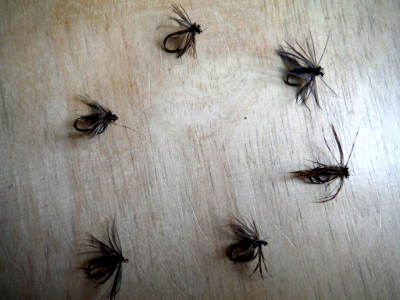
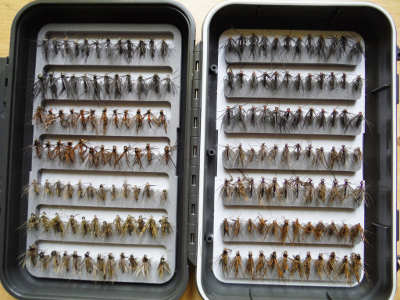
And how are spiders fished "down?" Think rather across and down. Begin by facing across the river and make the first cast rather upstream of straight across. Usually I then put in an upstream mend straight away and, depending on the current, I may mend again several times as the flies track down the stream. Salmon anglers will recognise some of this floating line technique from the ideas of AE Wood about "greased line" fishing. What I am looking for initially is a drag-free drift for as long as I can make it happen - 30 feet or so is usually possible. If a fish takes and stops the end of the leader moving while the flies are floating dead-drift, very often the line just begins to feel heavy as the current gets a purchase on it. In which case you tighten up to set the hook which will usually be securely in the corner of the fish's jaw. When the line gets about 45 degrees below you, the flies will begin to lift in the water and come across the stream towards your side of the river. A sharp take may well come at this moment. Some would move a few steps downstream and recast at this point. You may choose to let the flies swing right round below you before recasting, but be aware that it is much more difficult to get a good hook hold on trout which take "on the dangle". On each cast, follow the flies round with the rod, but also keep the rod high, about 30 degrees up from the horizontal with the line hanging down from it in a curve and also try to have the smallest possible amount of line lying on the surface - a yard would be perfect. A rise can show itself as the normal ring spreading along the line of the flies, possibly a flash showing below the surface, or a purposeful pulling forward of the end of the fly line. The reason for holding the rod high is to give the fish slack so that it can turn back down with the fly in its mouth, in which case you will see the curve of line below the rod tip straighten out. Striking will come with practice; you should react at once, but with no more than a movement of the wrist to connect. Remember that 30 foot marker on the fly line; if you have this out beyond the tip ring with lots of line lying on the surface, you will find it more and more difficult to connect with takes. And if you forget to hold the rod high and make the mistake of holding it horizontal, pointing down the line as if you are retrieving for rainbows in a lake, sooner rather than later a fish will hit one of the flies on a tight line with no reserve of slack at all. You will then feel a great jolt as even a modest brown trout will almost certainly either (a) pull the hook out of its own mouth or (b) break the tight leader as it turns down.
The great advantage of down or across fishing is that it is an extensive method and a very relaxing way to search large areas of water to find the fish – an excellent way to explore a beat which is new to you, for example. You can have rather more line out than the upstream method and thus make sweeps over areas which you could not wade into. By casting across, you are not usually unduly bothered by a downstream wind or even an upstream wind. The very real disadvantage of fishing downstream is that, particularly if you are inexperienced in the method or if fish are not taking confidently, it can be very easy to lightly hook and lose fish, or indeed prick a number of fish and generally scare the pool. I would not particularly like to go up a pool with a dry fly, which has just been fished down by somebody else with a team of wets. If you have the water to yourself, this may not be such a problem. And if you are good at it and the fish are in the mood, you may well hit every one.
Is there anything to read on the subject? Actually a great deal; there is as much literature or more on this kind of wet fly fishing as there is on dry fly fishing, and some of it goes back a long way. This is hardly surprising, as wet fly methods certainly preceded dry fly fishing in most parts of our country. You will find plenty of choice if you look through the lists of early angling books and Francis Walbran's Grayling and How to Catch Them (1895) is a good example. The classics on this subject, however, available in new paperback editions thanks to Coch y Bonddu Books, are the fanatical upstream fisher WC Stewart's The Practical Angler (1857) and Thomas Pritt's North Country Flies (1886). Edmonds and Lee's Brook and River Trouting (1916) is the one I would particularly recommend for fly dressers, as it has pictures of all the materials needed for each fly plus exact colour shade charts for the tying silk. Fly Fishing: The North Country Tradition by Leslie Magee and The Upstream Wet Fly by Terry Lawton are two good modern histories, and Lawton gives interesting details of the development of the method in the USA. Roger Fogg's Wet Fly Fishing and Tying is a modern manual with much space given to spiders. The comedian Mike Harding's A Guide to North Country Flies takes the tradition into a whole new dimension (Mike signed my copy at a Fly Fair and added gratis a series of northern nightclub cabaret jokes which I am still dining out on). There is also a little booklet with a useful list of patterns called The Spider Guide which Partridge used to stock - they might have a few copies left after all their recent changes.
Right then, what about the flies? I make my own and it would be fun to try dressing some spiders for myself. Here again we are truly in the realms of angling history. Some of these patterns are very old indeed and to me there is a definite kind of charm about the idea of catching a fish on an artificial fly which was in regular use before the Battle of Trafalgar. I'm perfectly serious about the last statement - there are hand-written 18th century lists of spider patterns in existence, but the earliest known published list is John Swarbrick's List of Flies for the River Wharfe from 1807 and a number of those patterns are still in use.
Let's start with the hooks, which for spiders should be round-bend wet fly, without any offset to the point, in sizes 14, 16 and occasionally 18. As a rough guide I fish the team as all size 14s in high or coloured water, size 16 droppers and size 14 on the point in normal conditions, and all size 16s or even 18s in low water. Partridge L2As are perfect, particularly the old handmade and tempered ones from Redditch. Try RM Jefferies on www.troutandsalmonhooks.com for old stock Partridge hooks of all kinds. Pearsall's silk is the right thread to use and be careful to match the colour. Never over-dress spiders - bodies should be thinly dubbed and 1.5 to 2.5 turns of hackle is enough. Tie hen hackles in by the stem in the ordinary way, but game bird hackles (which have thick stems) should be tied in by the tips. Cookshill Fly Tying www.cookshill- flytying.co.uk can usually supply needed game bird hackles or substitutes, although some, like waterhen wings, can be in short supply at times.
Edmonds and Lee give 36 patterns and Pritt gives over 60, which is certainly more than he fished with himself, but I think you would find the following well known ones, some old, some from the 20th century, quite enough to start you off:
Waterhen Bloa
Silk: yellow
Body fur; lightly dubbed mole
Hackle: Waterhen underwing covert
(This is a brilliant imitation for large dark olives - very good in March and April, and again late season).
Dark Moorgame
Silk: Rusty orange
Hackle: red grouse upper wing covert
(Very good for spring when fish are feeding on general olives. An alternative to the more widely known Orange Partridge, which - obviously enough - uses a partridge hackle. It's interesting to note that Japanese Tenkara anglers seem independently to have evolved exactly the same pattern with partridge and orange silk for their own purposes. The Japanese tend to dress their Tenkara flies with "kick", in other words with the hackle projecting forward over the hook eye, and North Country spider fishers sometimes dress flies with the same "kick" if they are to be used upstream).
Hare's Lug and Plover
Silk: primrose
Body fur: hare's ear
Hackle: golden plover (or substitute Brahma hen dyed golden olive)
(This is a modern one: a good general purpose fly by Roger Fogg which also takes fish feeding on grannom sedge pupae).
So I can suggest now that a useful leader for the spring or autumn would be top dropper: Waterhen Bloa, middle dropper: Dark Moorgame, point fly: Hare's Lug and Plover. You could vary that with the following extra patterns according to circumstances:
Woodcock and Hare's Lug
Silk: orange
Body fur: hare's ear
Hackle: woodcock upper wing covert
(Another by Roger Fogg; fish it on the point as a march brown imitation in size 14)
Snipe and Purple
Silk: purple
Hackle: snipe upper wing covert
(In size 16 as an iron blue imitation, but this time hallowed pattern is generally useful and justifiably famous. I tend to fish it on the top dropper).
Little Dark Watchet
Silk: orange
Body fur: mole
Rib: purple silk
Hackle: coot upper wing covert
(This little fly is a brilliant imitation of the blue winged olive for late summer fishing. The body colour, which is a blend of orange, purple and grey, looks fantastic).
Williams Favourite
Silk: black
Rib: silver wire
Hackle: black hen
(Very useful. Not strictly a spider and not from the north - it was invented by the father of Courtney Williams of the Dictionary of Trout Flies - but a Welsh pattern which will imitate anything small and black).
For a selection of ready-made spiders, try specialists Peaks Fly Fishing, www.peaksflyfishing.com or Fishing with Style at www.fishingwithstyle.co.uk
One final point: spiders were mainly evolved for use in running water, but they also work very well in lakes. For wild brown trout in lakes, Williams Favourite has already been mentioned, and there is also an excellent spider version of the Grouse and Claret while the Greenwells Spider will take fish when pond or lake olives are hatching. Tom Ivens designed his Black and Peacock Spider many years ago with reservoir rainbows in mind, but it's a good one and I still use it a lot. During January and February, it's rather surprising to find that clear pool rainbows feeding on tiny winter midges will often fall for a small Snipe and Purple, after refusing everything else. Early this spring I wandered down to our syndicate lake in the Forest of Dean while the rivers were in flood, thinking to spend a couple of hours fishing for the rainbow trout there. When I arrived, I found I had completely forgotten to put the still-water fly boxes in the car. All I had were some river spiders still on my fly patch, plus an old Black and Peacock Spider which I found stuck in the carpet in the boot. Rather than drag back home again in the car for the fly boxes, I thought I would give the lake a try with what I had. To cut a long story short, I had a wonderful morning, catching one rainbow after another in the 2.5 to 3 pounds size range with a size 14 Hare's Lug and Plover on a long leader. I have no idea what they took it for, but you just had to drop it over the shoal and let it fall down the water column; it seemed they could not resist picking it up and moving slowly away. The hook was one of the old handmade Partridges, and there was no trouble with the gape opening despite the size of the fish.
Reports quoted in this newsletter tend to emphasize the good catches, but it seems to me that it's not necessarily the days involving big numbers of fish which impress themselves on your memory. JD from Porthcawl wrote in his report (12th June) about a very successful day on the Edw: "...some might find this strange, but I'm not sure I enjoyed the fishing today. A personal competitiveness took over and I began to focus on the numbers, rather than the process." Wise words, these. You can remember a fishing day for many things apart from fish taken. You can also remember a day for fish which you didn't catch.
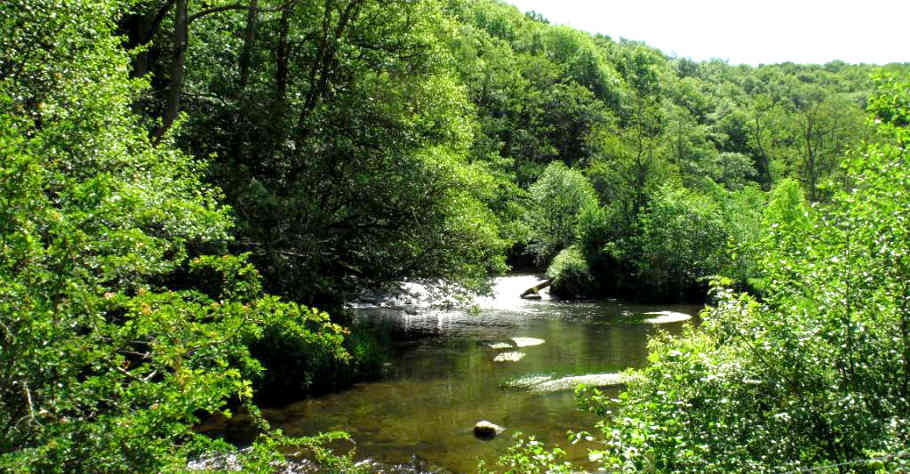
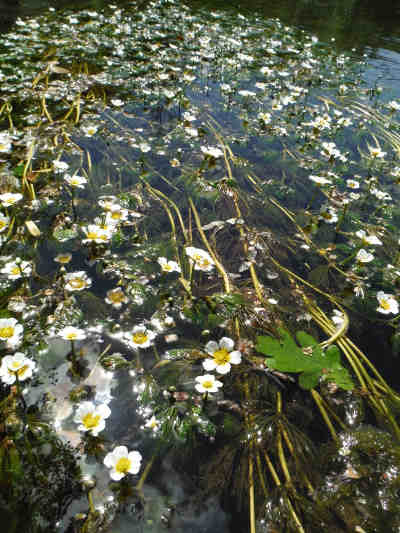
I will certainly remember two mornings spent by myself on small streams this month for reasons other than the catch. The first was on the Arrow at Mowley Wood, and due to other commitments I had no choice but to fish very early on a bright Sunday morning. The day was clearly going to be hot. The mayfly was just about over by now, and in fact nothing at all was rising at this stage. All the same, I was still speculating with a size 12 Monnow Gosling and the odd fish was prepared to come up for it. Thus I got three decent trout by the time I reached the weir at the top. A leash was a modest result, but they were acceptably nice Arrow fish and in any case the surroundings were what made my morning. It really was one of those occasions when you glance around murmuring to yourself: “My, my, just look at that.” Wild flowers were everywhere. There is a hay meadow running along this beat which is coloured almost totally gold with the flowers of June and the river is full of white flowering ranunculus weed. It was a long time since I had fished Mowley Wood in the first glory of summer, but I promised myself to fish this beat at least once a year in future, just for the sake of being there.
Another morning on the upper Monnow near Longtown was more of a bitter-sweet occasion. Again the weather was hot and nothing much was rising, so I was speculating in what looked to be likely places, this time with a Rusty Klinkhammer in size 16. Now and again a trout would come up and in fact I had returned 9 modest fish by the time I reached the bridge at the top. However, in one particular place, a trout was rising to naturals. This pool looked like perfect trout territory, being deep and rocky with a pronounced inflow running right down the middle. The rise, from what looked like a heavy fish, was about half-way up, and a few seconds later there was another good swirl from near the head. For some reason I formed the idea that there was just one large trout in this pool and it had moved upstream in the run of fast water. I sent the fly up the run to the general area before it came bouncing back down with the current, and on the third or fourth try he came up and had it. I got a look as the fish took and saw that I had been quite right about the size. The next minutes were anxious ones, the little rod bent double as the fish lunged about the pool. But there were no particular snags beyond some alder roots which I took care to keep it away from and eventually I seemed to be getting on top of the situation. The fish was on its side now at the surface, the mouth open as I drew it slowly towards my outstretched net. I could see it was wonderfully coloured and spotted, at least the whole gape of the net in length, somewhat north of 16 inches or so, which may be common enough on the main rivers but is a real specimen for a small stream. Ping! The hook popped out just as the head came up to the wooden rim. That handsome, unattainable trout hung there in the water for a second without moving, but no longer connected with me. I knew then I couldn’t have it. I made a desperate lunge with the net, but to no avail – it was gone in a flash.
I sat down heavily on the bank, exhaled and indulged in a little silent reflection. Events like this are supposed to build character, are they not? What would Kipling have advised at this moment? Keep a stiff upper lip, remember that triumph and disaster are both no more than imposters and to be treated the same and so on. You know the sort of thing. Despite these noble ideas, I was thinking it would have been something to have photographed that beautiful fish before releasing it. The hell with Kipling! I voiced a couple of unprintable words, felt slightly better, and fished on upstream.
Tight lines for July!
Oliver Burch www.wyevalleyflyfishing.com
May 2015
Another good month of spring fishing has just passed. Temperatures were low at times with cold downstream winds, but fish seemed to keep rising. Activity was interrupted by heavy rain and a brief flood mid-month, but in the case of the upper Usk the pause lasted for barely 24 hours. The high water pleased the salmon fishermen, and it should also have pleased the trout fishermen, because a large amount of accumulated muck was flushed out of both rivers. It certainly did the fishing a world of good for the following week. Otherwise there was good top of the water sport through most of May with a variety of up-winged flies hatching, and by about the 20th the mayfly fishing had started. Some of the brooks fished particularly well and an open day on the wild streams was well attended. The shad were in both rivers, right up to Erwood in the upper Wye, by the end of the month. At the time of writing (29th May) levels on the upper Usk have dropped off again, making fishing somewhat tougher with a need to recourse to deep-fished nymphs in the gutters and channels on some days, but even now some more rain is rattling on the office window!
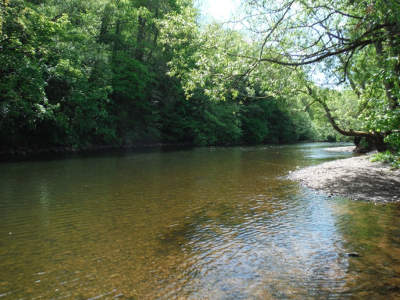
AS from Newent, one of our regular anglers, started early on the small streams, taking 12 from Bideford Brook with a nymph on the 2nd . He later took 16 from the Olchon Brook and 15 from the Dulas. He had a very good day on the 15th , taking 21 trout from the Middle Escley including a superb small stream fish of 16 inches. He was back on the Olchon by the 22nd , taking 14 this time with a mayfly emerger pattern, mentioning somewhat ruefully that he missed a lot of fish on this occasion - we can all sympathise with that situation.
Returning to the 3rd May, JB from London was another who made a good catch from Chanstone Court, taking 10 trout. On the same day, SP from Coventry and a friend went up to the moors of central Wales and Llyn Bugeilyn, where they caught 19 of the Welsh black finned trout to 12 inches. Apparently it was overcast and rained. I quite believe it; in fact I can hardly remember a day up there in the clouds when the weather was not like that. On the 4th May, SM from Reading fished the Usk at Cwmwysg Ganol where he got 9 to 1.75 pounds. On the 7th , AK from Blakeney fished with a Grey Wulff at Trallong and Abercamlais for 7 trout of which 4 were over 15 inches. Back to the small streams: on the 8 th GS from Bury St Edmunds got 20 from the Forest of Dean's Blackpool Brook. They were very small but the number is encouraging. Also on the 8th , JE from Kingston on Thames got a dozen trout to 14 inches from the Middle beat of the Escley Brook. He also had an interesting solution to the important logistical problem of finishing up at the Bridge Inn at the end of this marathon with a car not too many miles away. I can advise that, on occasions and when the bar is quiet, the landlord can be persuaded to drive you back to the start point, so another approach is to buy a good dinner and cultivate him. On the 13th RD from Richmond also fished the Middle Escley and met the owner of the cottage on the far bank half way up. He reported the encounter reminded him of Dickens' Miss Betsy Trotwood and her attitude to donkeys. Personally I always walk round this bit.
On the 9th , NG from Herefordshire took 22 trout to 12 inches from the Arrow at Mowley Wood. That is a wonderful catch from one of the most beautiful stretches of water I know, particularly at this time of the year. On the 10th, JE of Kingston (now recovered from the Escley experience) went on to catch 22 on dry flies from Aberedw. "On your doorstep for a tenner...magical!" he reported. On the same day, JD from Porthcawl was fishing the Edw upstream at Hergest and got 21. On the 11th , GS from Leominster had 17 from the Arrow at Kington and APP from Branston had 11 from the same beat two days later. On the same day, NG from Sutton St Nicholas took 14 from the new beat at Whittern. On the 17th , RM from Oxford had a dozen trout to a pound from the top Edw beat at Hundred House.
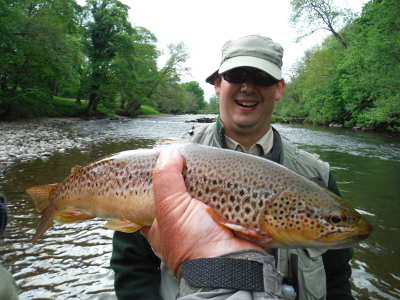
Meanwhile the Usk was still producing good fish. On the 13th , MP from Swansea got 15 trout up to 3 pounds with nymphs from Trallong and Abercamlais. On the 16th , ST from Galway with a friend fished dries and got 25 trout to 2 pounds from Dinas and Abercynrig and HW from Penclawdd got 13 fish to 16 inches at Cwmwysg Ganol on nymphs fished with a French leader. On the same day, over on the Wye, SJ from Llandysul got 20 trout to 15 inches from the Rectory. On the 17th , GM from Oxford caught 12 trout to 1.5 pounds from the Usk at Glan y Cafn and saw some poachers off into the bargain. (They were spinning, which makes their illegality about as obvious as it could be. No matter whose permission you have or don't have to fish, there is no legal spinning at this time of year for any species on the Usk). On the 20th , IC from Bristol had a nasty incident at Glan y Cafn, losing his footing while crossing a channel and being pinned against branches by the current. At this time the water was still high after the previous day's rains. It's a warning to us all that it is very easy to make a mistake while wading. IC lost some fly boxes and a Tenkara rod during the experience and it would be good to hear that they have been found and returned.
On the 22nd , GS from Leominster had a very impressive catch from a small stream, taking 18 trout to 15 inches from the tiny Hindwell Brook at Knill, while on the 23rd LK from Surrey got a dozen from the Edw at Cregrina using a Tenkara rod. On the same day AS of Newent got no less than 26 up to 14 inches on the Lower Escley using a mayfly emerger pattern. Over on the upper Usk at Fenni Fach, GW from London reported a wonderful day with 27 trout to an estimated 2.5 pounds. MVB from Oxford fished the Middle Escley on the 24th and got 21 fish using a relatively large Adams and finally a mayfly pattern. DP from Neath reported a catch of 24 trout to 21 inches from the Taff below Merthyr. JD from Porthcawl got a dozen from the Senni, which must have warmed up by now. On the 25th , MS from Maidenhead was fishing the Monnow at Skenfrith and got 10 on mayfly patterns, while MS from Cwmbran came to the Usk at Dan y Parc and got a dozen in what, by this time, were quite difficult low water conditions - summer rather than spring levels. On the 26th , JG from Monmouth got a dozen from the Edw at Aberedw.
Specimen trout captor of this month, I think, has to be SE from Abergavenny on his first fishing trip for 10 years. I liked his approach as he explained it in his catch return. He apparently went along to Chainbridge on the lower Usk late on the evening of the 22nd , sat down quietly watching the fast water for a bit, saw movement begin and then set to work with something he described as a "small and brown" dry fly, hooking a really large trout just before dark. After 10 minutes, the leader broke just as an Usk 4.5 pounder came in safely over the rim of the net. Well done - that is a specimen brown trout anywhere!
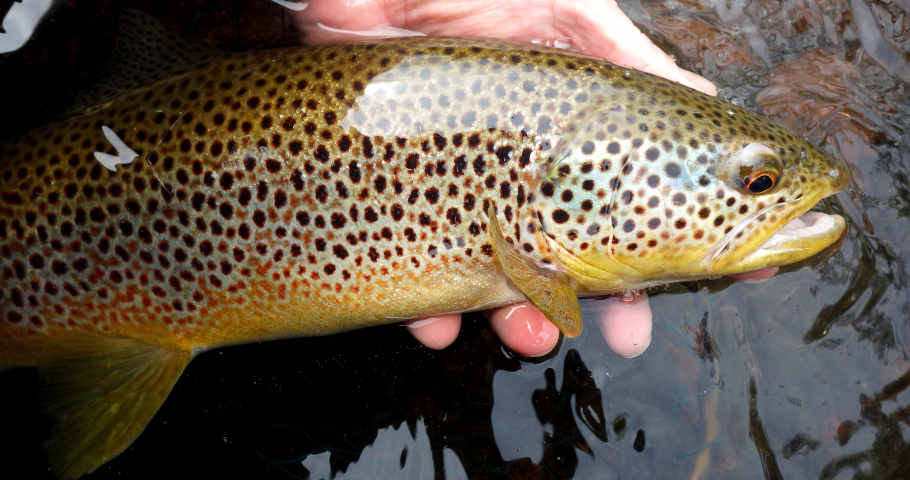
Those of us who guide don't get so much time to fish for ourselves during May, which is very much a high season month. This is a statement of fact rather than a complaint; standing at a client's elbow trying to will a trout to rise to a fly can be just as interesting as actually doing the casting. I did manage a day to myself on the 2nd May, fishing the upper Monnow where it forms the English-Welsh border. The weather was miserable, with a sort of Scotch mist of fine drizzle filling the valley with cloud and hiding the nearby mountains. Although the river seemed in reasonable condition, nothing was rising. But I went prospecting up the stream with a Parachute Adams and rose plenty of trout with it, so I suppose they must have had olives on their mind. About 3 o'clock there was a brief but intense hatch of olive uprights and fish began to move about a bit. I also saw a solitary large brook dun and (also solitary) the first of the year's mayfly. It looked a bit disconsolate, presumably having nothing to mate with. After enjoying myself thoroughly, I ended up with a dozen trout, mostly modest 10-12 inch fish, although a better one was lost. It was ever thus.
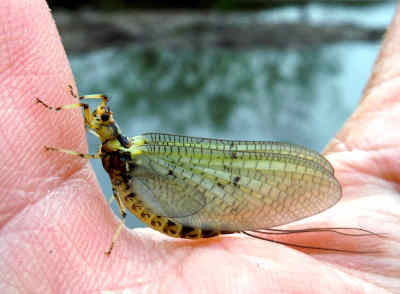
However, later in the month I made a point of reserving some mayfly days to myself. Fishing the same section of the upper Monnow during warm weather on the 24th , there were now mayfly all over the place and size 16 dry flies were no longer appropriate. Instead I was using Monnow Goslings tied on size 12 and 10 hooks and trout were more than happy to come up for them. The same big dry fly got me through an interesting afternoon on the Dulas Brook and also worked just fine all the way through a really nice mayfly day at Monnow Valley. This lower Monnow beat is criticised a good deal for being overgrown and difficult to access. All this is true and it is difficult to see what can be done to remedy the situation given the wildness of the location and the banks. However, it pays to learn Monnow Valley; there are places to get in and out, there are some hotspots and when fish are rising it can be one of the best places to fish a dry fly at this time of year.
One rather memorable guiding day was spent with Susanna Martin's family, who for many years have owned the pretty little holiday cottage by the Lugg at Lyepole. The white painted cottage dates back to the 18th century and inside I was shown a framed photograph of CV Hancock, angling correspondent of the Birmingham Post and author of a border angling classic Rod in Hand, fishing the river here during the 1930s. Unfortunately Susanna herself was not there due to an accident, but the fishing passed pleasantly with intervals for coffee and cakes. Our remit for the day was to study short range nymphing techniques with autumn and winter fishing in mind. This involved trundling two heavy bugs along the bottom of the pools in the East European style and although the trout were not too impressed with our efforts, some out of season grayling did co-operate. However, I could see that at least two of my audience, although nodding politely, were essentially dry fly men at heart. Meanwhile fish were in fact rising to olive uprights in the pools above and below. By mid-afternoon, two of us could resist no longer and we went up above the bridge with my companion's Hardy rod, which was old but good, to see what he could do. "The reel is an old thing I inherited from my uncle," I was told. "But it seems to do the job." I glanced at it, then did a double take before I was able to tell him he had a Hardy Model Perfect Mk2, probably from the late twenties or early thirties, and really worth quite a lot of money. Well I never! To complete the traditional approach, a size 14 Greenwell's Glory dry fly was now tied to the tapered leader. As a fitting end to the afternoon, we found three trout sipping regularly beneath an undercut bank; my friend went on to rise them all in turn with the Greenwell's and caught two for me to net. The 90 year old reel buzzed quietly in the most satisfactory way and altogether this made the best possible finish to a good day. And yet there was something else to come.
The genesis of the Greenwell's Glory must be one of the most famous stories in angling. How in 1854 Canon Greenwell of Durham was fishing the Tweed at Sprouston and found no good imitation in his fly box for a fly he saw on the water. This surely must have been some kind of olive. He went to the fly-dresser James Wright, and together they evolved a pattern, the main features of which were a red hackle with black list and a body made of pale yellow silk darkened with black cobbler's wax and ribbed with gold wire. (This would have been the wet version of the fly, which I still fish now and then on lakes, although the modern dry version has become more famous). The Canon went off to the river with the new fly and apparently made a killing. James Wright was invited to a celebratory dinner that night and when the company enquired what the new pattern should be named, somebody called out: "Greenwell's Glory of course!"
Canon Greenwell survived until 1918, fishing until the age of 97. His fly became a general purpose olive imitation in use all over the world, although the American Adams came later to challenge it in that role. And now here is the twist to this story. What I did not realise until Susanna told me a week or so later, was that the Canon's great grand-daughter had actually been one of our party during that day of spring sunshine at the Lyepole cottage.
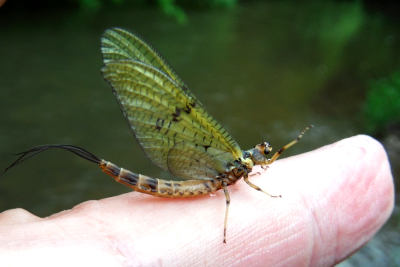
I also spent two days, one on the Usk and one on the Upper Wye, with Bill Toone, a fanatical trout fisherman who hails from Bozeman, Montana. Bill fishes all the great Montana rivers and has fished for trout in Pennsylvania, New Zealand, Slovenia - you name it. He is the editor of Flyfisher magazine. He attends the Presbyterian church where Norman Maclean's father (A River Runs Through it) was once minister. He also models on occasion for the local Simms wader company's sales literature. Well somebody has to do it, I suppose, and presumably he is never short of a pair of G4s. With this angling pedigree, I was prepared to be impressed by my guest's prowess and I was not disappointed. Using a surprisingly short and ungreased leader, Bill went on to give a master class in dry fly presentation with drag-free drifts which seemed to go on for ever. His casting and line control was effortless and relaxed. My job was to net his fish and, perhaps more importantly, select fly patterns to make them rise in the first place. This was not as easy as it may sound; on each day we had at least five species hatching, including olive uprights, medium olives, iron blues, pale wateries and yellow mays along with the odd large brook dun and true mayfly, tiny caddis, midges and various terrestrials. Bill made the point that he was not used to compound hatches; Western American flies, it seems, are helpful enough to hatch one species at a time. Patterns which worked for us included Parachute Adams, Iron Blue Comparadun, Deer Hair Emerger and a small Hair Wing Sedge. Bill, it has to be said, missed very few fish but there was one particular trout living under an eddy behind a rock which gave us the run-around. We were standing quite close to it and rose it four times, each time to a new pattern tied on, once and once only, and missed it every time. "I guess that feller's won," said Bill, laughing, and claiming the sight of the trout looming up under the fly was upsetting his strike timing. He really didn't care so much, while personally I found this slight evidence of human fallibility somewhat reassuring. I am not alone in missing on the strike sometimes! Bill, a great ambassador for the sport, headed off to the upper Severn and then Scotland to complete his British angling holiday.
Last month I was trying to answer a question from GW from London about studying the march brown and other invertebrate life in our rivers. Quite apart from trout food, the bugs living in our streams form one very important aspect of their health or otherwise and yet it is quite surprising how much we don't know about them when it comes down to real local detail. There is a will to improve the situation. The Environment Agency is the place where you can logically expect this information to be held. If you don't know the site, try googling "Environment Agency - Catchment Data Explorer" and by a little searching and drilling down you can get a look at all the data which the EA is holding on our streams. The EA has always undertaken a good deal of water sampling, so there is plenty of information about acidity and alkalinity, heavy metals and other pollutants, all of which might make interesting reading if you are looking at your local brook. But when you come to the section on invertebrates, you might be surprised at just how little information is available. There are a lot of blanks waiting to be filled in. The bugs living in our streams form one very important aspect of their health or otherwise and yet it is quite surprising how much we don't know about them when it comes down to real local detail. Nevertheless, there is a will to improve the situation.
Most of the information now being gathered is provided by amateurs. One amateur angler who did decide to follow a professional approach (by taking a PhD in the subject) was Dr Cyril Bennett, who began with a particular interest in the mayfly population of the River Wey on the Surrey/Hampshire border. Dr Bennett's work impressed me when I heard of it, as I used to fish that river as a boy and one branch of it, in those days at least, could be defined as something like a minor chalk stream. It contained some nice trout mixed up with coarse fish like dace and perch. It was tremendous fun to fish and some parts also had grayling. The original brown trout used to stock New Zealand were taken from the upper Wey along with the Itchen. I am told that the Wey has been sadly damaged since I knew it by reduced flows caused by borehole extraction for domestic water supplies as more and more housing estates have been built. However, Dr Bennett didn't just moan about the situation in letters to the angling press like so many others, but managed to restore the mayfly to the river and was also instrumental in founding the River Fly Partnership which is presently using volunteers to create for the first time a nationwide data-base of the invertebrates which inhabit our rivers and streams. The EA is in strong support of the project.
There is an opportunity here for anybody who can spare a little time on a monthly basis. If you are prepared to attend one of the River Fly workshops, you will be taught how to take a kick sample from a river or stream in a systematic way for valid data collection, and how to examine and report the results. And if you will undertake to visit a site convenient to you and provide this information on a regular monthly basis - winter too, mind - you will be equipped with a specially designed net, containers and everything needed to do the job. Last year I took on the Bideford Brook, which is just 10 minutes from home, and I'm finding it quite interesting, not only to see what creatures live there, but how the populations alter in appearance month by month as the season goes round. The whole sampling process does not take much more than an hour. Tony Bostock of the Severn Rivers Trust, one of the busiest men I know, is the River Fly co-ordinator for the Cotswolds, Severn catchment, and also our Wye and Usk region and can be contacted at tonybostock@severnrivertrust.com. Currently there may be places on workshops to be held on the Onny at Craven Arms, Shropshire, on 11th June, and on the Afon Vyrnwy at Meiford, Powys, on 7th July.
What comes next? I would hope for at least another week of mayfly fishing into June, so get out and enjoy it while you can. Virtually anywhere on the Monnow system, Lugg, Arrow and any brooks containing enough silt to house the burrows of the mayfly nymph should provide some interesting sport. June is another angling month in which very much depends on the weather. If we get some more rain and cloud to keep it all going, there might well be good fishing right through the month. If, on the other hand, we get a heat-wave, the bright sun might be a problem on the main rivers by late June - in which case consider concentrating on early or late fishing, trying some shaded brooks with a small rod or visiting the mountain lakes.
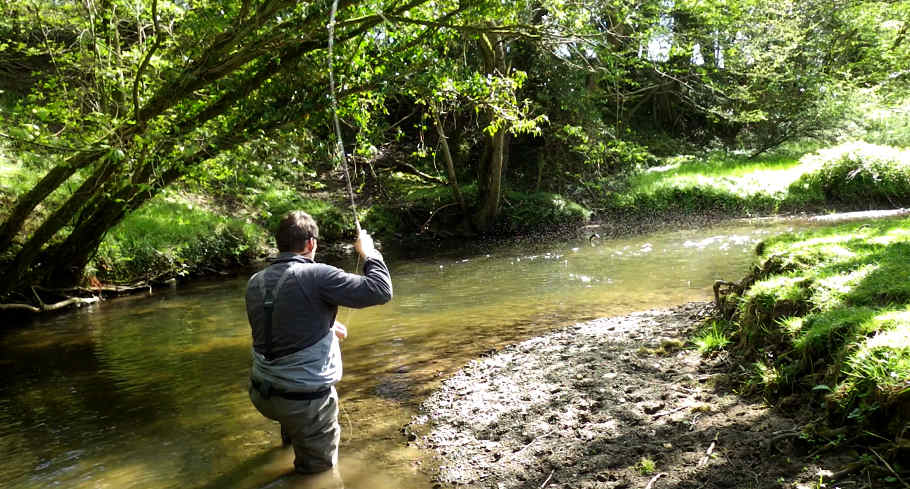
As we get into high summer, you can continue to expect a mix of flies on the water. One summer species which is often rather under-rated is the yellow may (Heptagenia sulphurea), which has been around for a few weeks now. You can hardly miss this one - the body and wings alike are a vivid sulphur-yellow colour. On the chalk streams and elsewhere there seems to be a generally prevailing idea that trout just don't like to eat these, due perhaps to some bitter taste, and will take almost any other fly in preference. Well I admit that I have seen yellow may duns on occasion studiously ignored by trout (on the Usk at Glan yr Afon for example), but I have also had mid-summer days on the Usk and on Wye near Erwood which were absolutely saved by fishing a yellow may imitation. I have also seen chub lining up to polish off yellow may duns floating down the lower Wye. I notice that Oliver Edwards puts great store by fishing yellow may imitations on the freestone Yorkshire rivers, which are not unlike ours. So, I would advise you to pay attention if you see any sign that fish are interested in these creatures. The dry pattern which usually works for me is Mike Weaver’s Yellow May Sparkle Dun.
The blue winged olive is the fly I mainly associate with summer afternoons and evenings. When fishing spider patterns, the Little Dark Watchet is the classic wet blue winged olive imitation. I find it pays to move the flies a little more than usual when fishing these in high summer, tweaking them back under the surface to provoke takes. I imagine this may be because the emerging blue winged olive nymph is a lively little creature on its way to the surface; as with so many other questions, we will need to interview a trout to find out. Otherwise, the blue winged olive is a pretty little fly but it can be quite difficult to imitate, particularly during the evenings and as the spinner fall begins. I can recall a very difficult Usk fish (at Glanusk Park) rising between two boulders well out in the stream on a hot summer night. It was a hard enough place to get a cast into, but this fish didn't like the various offerings we were making, although I was going right through the fly box to find something suitable. We finally got it on a small Rusty Spinner, the fly we had started with, just as darkness fell at 10 o'clock. As far as I can tell, the main key to imitating the blue winged olive with dries is to get the body colour right, which in the case of the duns seems to vary from what has been described as a "greengage colour" during the day to something like apricot orange by the evening. The Comparadun style of dry fly seems to work quite well. I can remember taking two heavy trout on a late summer evening from the old mill pool at Monnow Valley. It was already very dark under the trees there and I was wading deep. These fish, it seemed, were taking blue winged olive spinners floating down the black swirling currents over deep water and a parachute version of the Tups with a pale orange body (after trying a good many others) proved to be their downfall. By that time I couldn't see the fly disappear, but tightened when I heard the fish break surface and all went well.
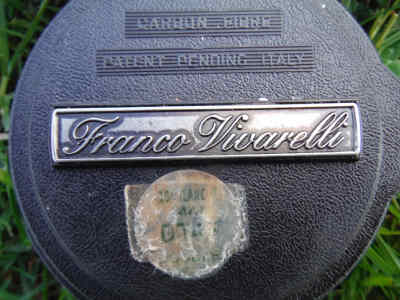
As the summer draws on, various types of sedges are becoming more and more important, and will remain so right into the autumn. I don't claim to know so very much about the British sedges (caddis) of which there are nearly 200 species identified so far. I do recognise the grannom and the giant red murrough sedge, plus one or two others, but otherwise I am afraid my identification tends to go no further than "large, medium, and small, brown, grey, black etc." A lot of interest has been generated recently in some of the smaller species such as agapetus and their life style. As a practical angler, my only advice is to keep close by you some generally useful patterns such as Hair Wing Sedge and Elk Hair Caddis in different sizes from 12 right down to 18, and to use them more frequently as the season goes on. Also, to experiment with tweaking them or dragging them slightly now and then. Sedge flies do scuttle about a bit on the surface; trout get used to seeing movement there as the season moves on and a drag-free drift may not always be the answer to provoking a take, particularly where the current is very slow.
I will finish with an apology for a mistake made in the April newsletter. It is Franco Vivarelli, not Zeferelli, who makes that clever little automatic fly reel in a workshop near Bologna. I must have experienced one of my senior moments because I definitely had the wrong Italian there - Zeferelli makes films, doesn't he? Actually no, come to think of it that should be Zeffirelli! This is getting worse. I had better drop this thread before I start babbling about the Sergio Leone range of Spey casting rods.
Tight lines during June!
Oliver Burch www.wyevalleyflyfishing.com
April 2015
Whan that Aprille with his shoures soote
The droghte of March hath perced to the roote
Etc, etc - We were made to study this at school. If there is one thing I remember from the lines of Middle English with which Chaucer kicked off the Prologue to his Canterbury Tales, it is that the writer and his mediaeval contemporaries clearly thought that March should be a dry month and April a wet one. I wonder what they would have made of this spring, in which the situation was totally reversed?
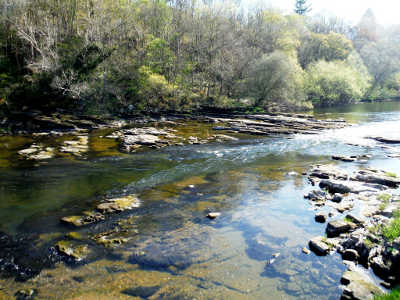
We ended March with a healthy dose of rain and started April with the rivers more or less in flood. Initially it was quite a problem to find somewhere to fish, but if you could manage to go upstream far enough the trout were more than ready to co-operate. But as the days and weeks went by, no more rain fell and the river levels slowly dropped off. At the same time, we experienced high pressure weather with clear skies, cold nights with morning frosts, followed by hot bright days. Later there were also some very cold winds and weather forecasters began to talk about something called a polar plume - what would Geoff Chaucer have thought of that? By the end of the month, although the forecasters were promising rain, we had little more than some black clouds racing across the sky in the wind and a few light showers which were hardly enough to start the intermittent windscreen wiper programme for more than a few strokes - but no significant rainfall in our catchments. Although the Wye held up slightly better than the Usk, most of our rivers were eventually down on their bones, the water painfully clear and the beds covered with sun-grown algae. During the last week of April, some trout and salmon in the Usk were reported affected by patches of fungus.
Non-anglers may have enjoyed the sunshine but our trout fishing, while still very good during the first half of April, became rather more difficult as the level dropped. At the same time there seems to have been a huge angling effort on our rivers and I have just analysed more than 50 pages of reports, many of very successful days! It's very gratifying and quite flattering to read that anglers from all over the UK and abroad are visiting the Wye and Usk catchments. Of course it's a condition of the ticket purchase that you make a report, but please remember to do so because the information you provide, even about a difficult or blank day, is of great use to everybody, including the WUF, fishery owners and other anglers.
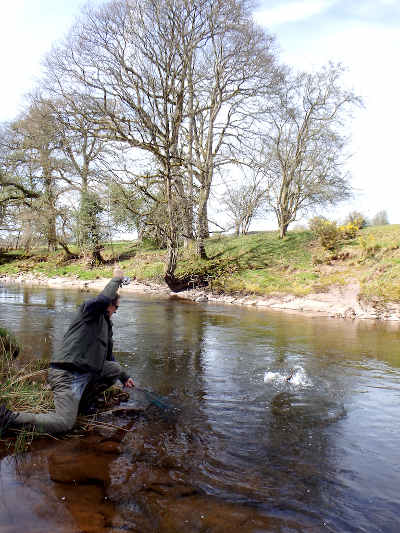
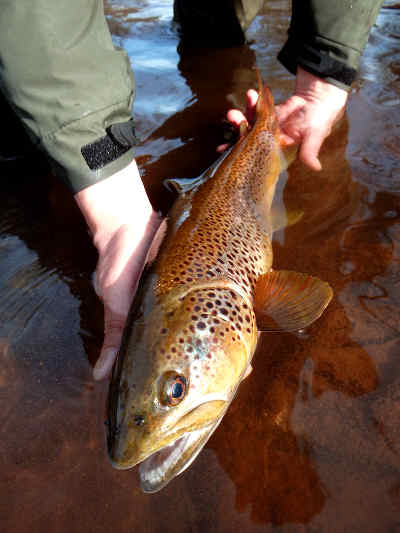
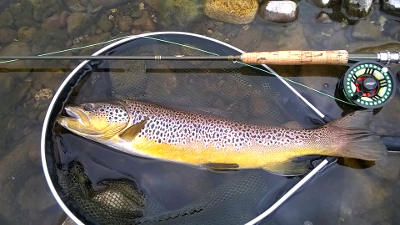
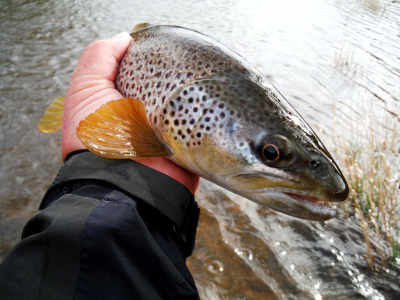
Despite the strange spring weather, fly life on our rivers seems to have been encouragingly active. The grannom sedge was visible on many beats for much of April. Personally, this year I never saw one of those really dramatic hatches which start every trout in the river feeding, but rather a few of the little creatures trickling off all through the day. This kind of hatch is actually more useful to the angler as your artificial offering is not completely outnumbered by naturals, and I managed to pick up a few fish on a simple Deer Hair Sedge. Large dark olives became less significant as the month went on, but their place was taken by other olive species which again have arrived early this year. The big march browns were still in evidence, although in reducing numbers, right to the end of April and fish continued to take them. GW from London, who on the 2nd took a dozen Usk trout to 1.5 pounds at Glan yr Afon, asked whether there is a definitive scientific survey including the Usk and the march brown, Rithrogena germanica, the fly whose apparent recovery has caused so much excitement among anglers over the last couple of springs. What published material, if any, is available for reading? I would love to be corrected on this and I have asked around and worked my search engine hard, but the answer to that question seems to be "much less than you might think," although there has been plenty of chatter on the subject. There have been several initiatives attempting to study this fly over recent years, mainly using anglers as data gatherers. But to summarise what has happened on the Usk: the MB seemed to have disappeared from the river - we don't really know why. The MB seems to be back - we don't really know why. And the MB is definitely present on the Wye these days - most entomologists weren't aware that it was there! Overall, it strikes me that we know surprisingly little about the invertebrate life in our streams. Apart from angler's accounts, which are almost invariably anecdotal, what we have here is a plethora of "known unknowns" as Donald Rumsfeld might have put it. However, anglers who would like to improve this situation might consider contributing some time to the survey being made by the River Fly Partnership and I will try to give some details about that next month.
With the large number of reports arriving last month, it is difficult to do justice to what seem to have been some excellent catches, including some specimen fish. I have picked just some of the best examples. Evidently the Taff is still fishing well; on the 27th DP from Neath reported 24 trout including a 4 pounder - a superb fish anywhere. The small streams were waking up; AS from Newent and NS from Drybrook were among several anglers who caught plenty of fish from the tiny Bideford Brook in the Forest of Dean. AS also had 16 from the Upper Longtown beat of the Monnow. Anglers fishing the Welsh Water reservoirs such as Llyn On reported several limit bags of rainbows. The Usk, as you might expect at this time of year, was also producing some excellent trout from the beginning of April. GM from Honiton fished Cefn Rhosan Fawr on the 3rd and had a brace of 3.5 and 2.25 pounds. On the 6th , TD from Amport in Hampshire got 4 to 18 inches at Ashford House. The next day, DR from Truro had a dozen to 15 inches upstream at Penpont. On the 7th , EH from London fished Trallong and Abercamlais and reported 8 fish averaging a pound. On the same day, MP and JW got 20 fish between them from the Breconshire Fishery, while on the 8th EH of London had moved on to Dinas and Abercynrig, where he got 25. Dave Collins from West Herefordshire was out on the Gwent Angling Society water above Abergavenny, where he took 11 grannom feeders. On the 9th , HW and PJ from Penclawdd got 17 fish between them from Trallong and Abercamlais, while PG from Welford on Avon fished the lower river at Trostre, where he got 7 fish to 19 inches. He was fishing dry with a Tups Indispensable - still a useful pattern. On the 11th , DR from Truro with a friend got 20 from Dinas and Abercynrig, while JS from Bath got 8 fish to 2 pounds from Glan yr Afon, using the "clink and dink" or New Zealand method. On the 13th, PJ from Ammanford had a dozen from Fenni Fach, also on a suspended nymph, and on the 15th SM and AF from Herefordshire had a dozen from Trallong and Abercamlais, including three 2 pounders. And on the 16th HW from Penclawdd was back at Cefn Rhosan Fawr, and reported a fish of 19 inches.
So far, very good, but now that we reach the second part of the month and the low water conditions, it all gets rather more difficult. There were good reports from the little Dore at Chanstone Court. SC from the W Midlands had 11 fish from it and TW from Birmingham had 14 while fishing a March Brown spider in the fast water. This was all encouraging because we made great efforts to prune this very overgrown water during the winter. On the 18th , NC from Warwickshire fished the Arrow at Hergest Court, always a nice spring fishery, and got 9 to 12 inches. AS from Newent fished the Lower Escley on the 25th and got 10. Over to the Usk - on the 20th DR from Truro took 11 from the Dan y Warren beat. (I can recommend this little fishery. It's only one long pool, but a good one for a few hours, and the surroundings are quite beautiful. Take along your "significant other" together with a picnic basket and a bottle of wine to chill in the river). On the 22nd , JP from Caerphilly got 13 from the Glanusk Ty Mawr/Canal and Rovers Trust beat, using a Partridge and Orange. On the 23rd , MN from Bristol got 8 fish to 17 inches from Glan yr Afon and on the 29th EH from London was back at Dinas and Abercynrig and got 9 on the dry fly.
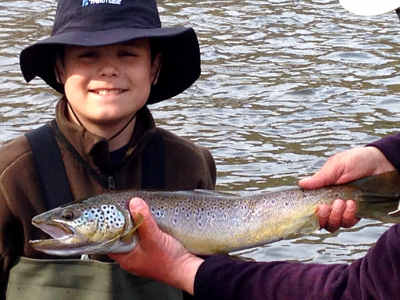
For me, the fish of the month was caught by 11 year old Hugh Young, who was down from London with his family for a week's Easter holiday of riding and fishing. I was lucky enough to watch this. We were at Ty Newydd on the upper Wye; it was late in the day and the fishing had been fairly quiet. Hugh was working away diligently with one of my rods, casting a Deer Hair Emerger upstream and across, stripping back line with his left hand to keep pace with the current. This method of fishing a dry fly is a busy one and Hugh was determined to master it. But the last march brown of the afternoon had been seen a full half hour before, so I feared sport might be over for the day. Meanwhile, Hugh's 9 year old sister Helena was fishing a little downstream and had caught a few out of season grayling with a pair of spiders. (A tip: if you have a young child whose wrist is not yet quite strong enough to manage a single handed rod well, try him or her with a longer rod fished double handed. Helena had my much-loved old Grey's Missionary 10 foot 4/5 weight, which has a fighting butt to hold with the lower hand, and was managing quite well with it. There's nothing so new about switch rods).
Hugh shouted he had a fish on, so I went up with the net, expecting another grayling. Then I saw the way in which the leader was cutting the current, which made me pay more attention. When I got a good look at the fish out there in the channel, I became quite anxious and remained so all the time until we somehow got it stuffed into the net. It was a cock brownie of 21 inches. Hugh, by contrast, remained totally cool throughout. I did tell him after shaking his hand that it might be a while before he catches one to match it. On reflection, he might well prove me wrong about that. I certainly hope so. He was on at me to teach him double hauling by the end of the week.
Before trying to work out what might happen next as we get into May, I'm going to attempt to answer one other question which was put to me this month. This can be roughly summarised as: "Can you define, for different parts of the season, which are the most productive times of the day to go fishing for trout?" Well, if you are prepared to fish the bottom of the river with heavy nymphs all season, using the same tactics as for grayling during the winter, the answer might be that you can do it from dawn to dusk and quite successfully too. Some of the Czech nymph specialists do exactly that, putting their flies skilfully and accurately in front of trout which are either lying doggo or definitively feeding on the bottom. My own view is that, come the spring, I have had quite enough of trundling heavy nymphs along the gravel and stones and now for a change I'm hoping for some dry fly or spider sport with rising fish. Most of the anglers I talk to seem to feel the same way.
So, if we first take a trout river like the Usk as an example, we could visualise daily fishing throughout the season in terms of changing "windows of opportunity" for fishing on the surface or just below it. I need to emphasise that what follows assumes a typical British seasonal weather pattern, if there is such a thing. When we open on 3rd March, the water and often the air are pretty cold. For most of the day, the trout won't be coming up, but a short hatch of large dark olives may well bring them to the surface for a brief spell after lunch. At this time the window of opportunity is going to be narrow. It will probably come some time between 12 and 3 and may only last for an hour or so.
Sometimes in March I will go along to a favourite pool, sit down with a lunchtime picnic on the bank and just watch to see what happens. As the sun rises a little higher every day and the water gradually warms - always depending of course on the vagaries of the British weather - that middle of the day window of opportunity gradually becomes wider as more insects begin to hatch and the trout feed on nymphs and duns for longer. Soon there will be march browns, the grannom sedge and its pupa perhaps, and the window of opportunity is widening, now starting perhaps at 10 in the morning and going on to 4 or 5 in the afternoon. The process goes on through April and May as the warming continues and more and more insects, terrestrial as well as aquatic find themselves on and around the surface of the river. The window enlarges until the trout are very happy to feed on top for most of the daylight hours. And, with luck, the angler can fish the surface all through the day or as long as he has the energy to do so. These should be the prime months of his season.
About the middle of June, typically, the heat of the sun becomes a bit too much. A dead period develops in the middle of the day and the window of opportunity divides into two. Midday fishing now becomes very difficult. The two windows of opportunity, morning and evening, start to narrow as the heat and perhaps drought conditions take their toll, and eventually the angler's best chances are a short visit after dawn or an evening session, perhaps taking advantage of a blue winged olive hatch. July and August are rarely the best months of the year, "dog-day" fishing and often quite difficult. This is when many of us think about sea trout, the hill lakes or perhaps a shaded small stream. But the evenings can be good and a few days of cloud and rain and an associated flood to clean out the accumulated muck from the stones can often wake the river up and revitalise the fishing for a while. By September, the sun is lower and the water is cooling. The two windows of opportunity join up into a single one again and the Usk trout angler can fish his dry fly through the middle of the day once more, admittedly for fish which might be rather less naïve than they were in the spring. There is good fishing again until his season ends on the 30th .
Of course, if he is a grayling angler he can then move right over to the Wye or one of its tributaries and fish the dry fly for that species during October, probably all through the daylight hours if he chooses. For a while the window of opportunity is still wide, even though the day is shorter, and October grayling fishing can provide some of the best dry fly and spider sport of the year. Something about the slanting light makes the sight of an Irfon grayling with a big magenta coloured fin looming up beneath a dry fly quite magical. At the same time, even on one of these golden days, there is that slightly sad autumnal sense of enjoying the last of this pleasure for a while. The sun is daily lower in the sky until eventually there is no warming effect on the water. Once more the window of opportunity is reducing. After about the first week in November, it finally closes for the year and the grayling are no longer prepared to rise to the surface. They are still there, of course, down on the gravel and in the pink of condition for that matter, feeding on caddis larvae and whatever else they can find, but the angler who wants to catch them will have to go back to the heavily weighted flies or bugs, or perhaps trot a maggot or worm just above the bottom, until the new season opens. Now and then you might see a very brief winter rise to large dark olives, usually during the early afternoon, but it is not something you can rely upon.
We can also talk about fishing weather and its undoubted effect on catches. I suppose I will now express the traditional preference for "soft" days of cloud cover, dull and warm, with a diffused light. At any rate, I prefer them to "hard" days of clear skies and bright light with big temperature swings, such as we have just experienced all through April. And even non-anglers seem to know that gentle southerly or westerly breezes are preferable for fishermen to those harsh winds from the east and north. But in truth, if we waited around for the perfect day, we would probably never get to go fishing. Get out and try it! Come to think of it, I know at least one lake which fishes best in a "noyous" east wind.
I hope we shall now have some rain and then more good spring fishing to look forward to. May on our rivers includes what I think of as the period of "general upwing hatches," particularly of olives. Angling on a river like the Usk gets slightly more complex. It is more than likely that you will come to the water and find several flies on the water and in the air at the same time, and you will then need to puzzle out which one is interesting the trout on this occasion. The large dark olives will probably be taking a break until autumn, but we are already seeing olive uprights and medium olives, and a few pale wateries and even yellow mays - which are very early indeed. Stone flies may be around on the upper reaches. If you are tackling up in the car park, wondering what to tie on first, I have great faith in the Adams as a general purpose olive imitation at this time of the year. Like most anglers today, I tend to favour the parachute version (mainly in size 16), but there is still a place in my box for the original dressing with hackle point wings. Old-fashioned it may seem, but trout sometimes still prefer a fly pattern standing up on its toes to the half- submerged version.
The larger olives are not likely to be missed, but also look out for the tiny iron blue, which I have already seen on both rivers. Trout are very fond of this inky blue fly and sip it down in preference to other larger and more obvious insects. The problem is that the creature is so small and dull that it easily missed on the surface by us - not by the trout! I usually try to imitate it using a small F-Fly with a dark mole fur body and showing a little claret silk as a butt. Alternatively, a small Snipe and Purple is the spider pattern associated with the iron blue - although it has to be said that Snipe and Purple, one of the spider classics, will take trout and grayling at almost any time of the year, whether iron blues are present or not. The large brook dun, a large brownish-yellow fly often mistaken for the very similar march brown, appears on our rivers and many of our streams during May, and like the real march brown usually causes great excitement among the trout. Any artificial March Brown patterns should work or you could try a largish Deer Hair Emerger.
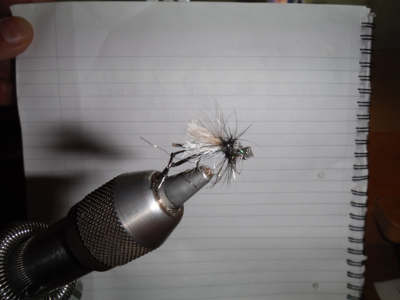
I saw the first hawthorn flies by the lower Wye yesterday, the last day of April. This one is a terrestrial insect, which has a habit of finding its way onto water by accident in any kind of breeze. Bibio marci, named for its custom of arriving on St Mark’s day (25th April), is instantly recognizable by its clumsy flight and the pair of long black legs which it trails behind. It not only hangs around hawthorn bushes, but also in alder trees, and trout just love them if they fall on the water. It is several years since I encountered hawthorns on the Usk, but I certainly have seen them on a number of memorable occasions, at Kemeys and up at Brecon. I had some great fun last spring when trout were feeding on them as they floated down the middle of one of our Forest of Dean lakes. You can put down fishing the hawthorn fly as a minor tactic, but it's worth having an imitation in your box, just in case you see the creature on the water. I like Charles Jardine's appropriately named St Mark's Fly, which is a delightfully fussy object with tangled legs, but at a pinch a Hopper from your reservoir fishing or even a Black Klinkhammer should work. In any case, you should certainly have something small and black with you in the case that gnats are interesting fish.
The big and much anticipated event this month is of course the mayfly hatch. I suspect that, like last year, this is quite likely to begin early after a mild winter. "I’m quite glad we aren't really a mayfly river," Jean Williams of Sweet's Tackle Shop was saying the other day. She was talking about the Usk and her meaning was that with the march browns and all the other hatches, there is quite enough to be going on with. But the lower Wye is certainly a mayfly river, although it's usually the chub which appreciate them most there. And we have super mayfly fishing in some of the smaller streams and tributaries, including virtually the whole of the Monnow system, Lugg, Arrow, Llynfi Dulas, top of the Edw, Forest of Dean streams and more. The main point is that the mayfly nymph requires some silt to make its burrow and therefore the population is relatively thin on our very rocky and fast-flowing rivers. However, there may be a few of the big white flies even there and I remember last spring spending some time targeting a mayfly feeding trout on the Irfon, which is not a river particularly known for this kind of sport.
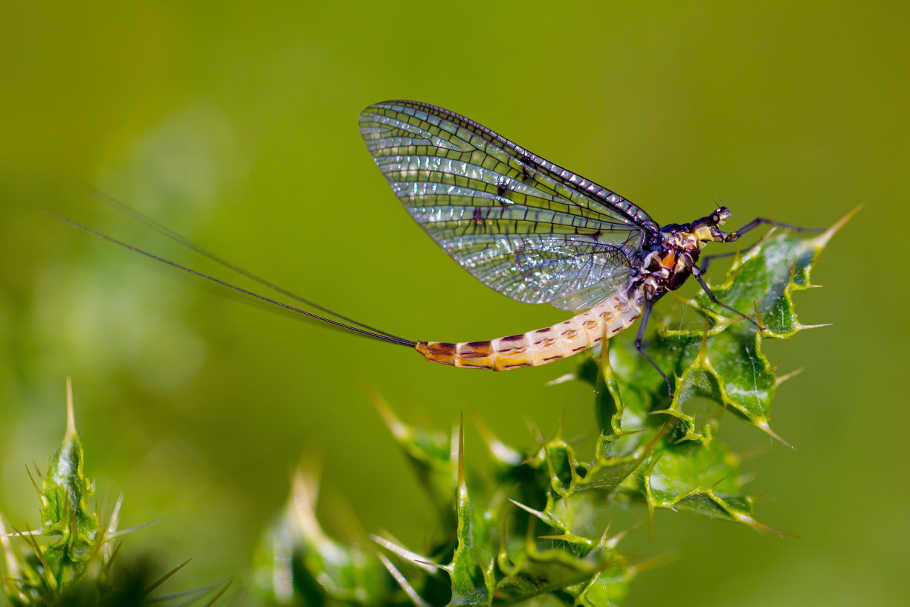
There are actually 3 mayfly species in the UK, which for practical purposes anglers can treat as one. If silt beds are present, the smallest brooks often have good hatches and it can be quite an amusing sight watching a 6 inch trout try to eat a 2 inch mayfly! The nymph lives in its burrow for 2 years before the main hatch takes place over a 3 week period, which is typically, depending on weather and the latitude, the last week of May and first 2 weeks of June, although odd individuals will be seen for the rest of the summer. You might wonder why a fly named for May often has its main hatch in the first weeks of June? The answer is that the English common name is old enough to predate the 11 day calendar revision of the 18th century.
Rather like the march brown, it is only when the hatching mayflies reach significant numbers that the fish react to them, after having learned over a couple of days what tasty and substantial morsels they are. Anglers used to talk of the green drake (the large, greenish female dun), the spent gnat or grey drake (the female spinner), while black drake or dark mackerel usually described the significantly smaller and darker male. Don't worry too much about these names, but try to copy what you see the fish taking. If you cared to, you could follow the hatch as it develops through the day, fishing a nymph pattern deep during the morning, covering the surface with a dun imitation during the afternoon while noisy rises are taking place to the natural fly, and finally fishing a spinner pattern during the quieter rises of the evening. That strikes me as a slightly laboured process. If I arrive at the water during the morning, I usually get some sport by fishing a Parachute Adams or similar on top for the olives which are probably being taken then. Later in the day, when the white mayfly duns appear and those great big "ker-splosh" rises start, I swap the tippet from 5X to 4X, tie on a larger mayfly pattern and go right to it. If I feel a need to imitate the spinner later, I usually take out some scissors and do some judicious pruning to the fly I already have on.
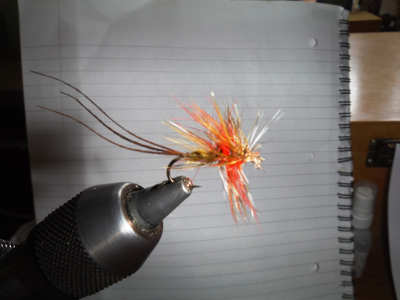
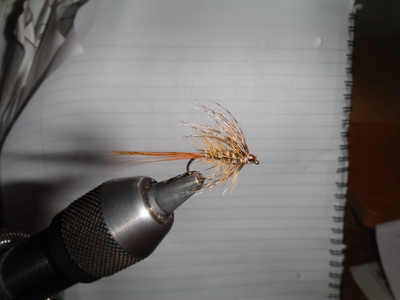
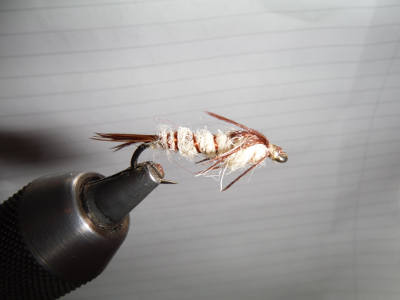
Like most of us, I have tied up lots of mayfly patterns over the years, but in the interests of simplicity now tend to use just a few. On the principle of GISS (general impression of size and shape) Mike Weaver's Hackle Mayfly is a goodone, featuring long tails, buzzy wings and legs, plus also colour as the combined orange, olive and grizzle hackles mimic the considerable range of colour you can see in real mayflies. It seems to work for me. However, there are also many times when fish are unwilling to take a high-riding fly with confidence, preferring to take a half-drowned version. For this case, I have an adaptation of a famous Irish wet mayfly, the Gosling, which I dared to rename the Monnow Gosling in honour of this river. The main differences from the original are long pheasant tail fibres for a tail and a soft front hackle of grouse rather than mallard. Fished ungreased and awash, this dullish brown fly works well when more obvious imitations are being rejected. For the nymph, I haven't found anything better than Richard Walker's original Mayfly Nymph with a gold bead.
Hackle Mayfly:
Hook: Kamasan B400, size 10 and 12
Thread: brown
Tail: 4 cock pheasant tail fibres
Body: yellow/olive synthetic dubbing
Rib: dark brown floss, wound closer at tail.
Hackles: one orange, one olive and one grizzle, wound through each other. Three turns orange, four olive and
five of grizzle is about right
Monnow Gosling:
Hook: Partridge Captain Hamilton Dry, size 12
Thread: brown
Tail: long ginger cock or 4 cock pheasant tail fibres
Body: pale hare's mask
Body hackle: palmered ginger cock
Rib (optional): fine gold wire
Head hackle: two turns of brown partridge
Mayfly Nymph:
Hook: Long-shank 8 or 10
Thread: brown
Weight: gold bead
Body: natural sheep's wool
Tail, wing-cases and legs: pheasant tail fibres
Rib: dark brown floss, wound closer at tail
One final note: the gravel flats of both rivers are now populated with salmon smolts waiting for the next flood to take them away to sea. Much better to meet them in three years time than now! Similarly, grayling in the Wye system should be left alone to spawn. I appreciate that it is not always possible to tell what is going to seize your fly next, but if you are catching too many unseasonable fish, please move on. That should be plenty to be getting on with. Tight lines for May!
Oliver Burch www.wyevalleyflyfishing.com
March 2015
Compared to other parts of the country, we open our trout season relatively early. Congratulations to everyone who braved cold winds to try the Usk, the upper Wye or one of the smaller rivers this month. Some really interesting fishing trips were reported, even though most of the action tended to be confined to the part of the day when large dark olives or march browns were coming off. After all these winter months, there is something rather wonderful about being able to catch fish on a dry fly with the temperature still in low single figures and with snow lying on the hills around, even if the fun only lasts for an hour or two. We had good river conditions from the start, with relatively high spring water levels. 24 hours of rain in the middle of the month caused a brief interruption, after which trout fishing continued to be interesting. Large dark olive hatches occurred on almost every day, while the march brown appeared from about the 16th of the month, reported from widely separated locations on both rivers. It really is encouraging to chart the resurgence of this famous fly. So far, I have no reports of the grannom sedge (which came rather early last year). Traditionally March is supposed to come in like a lion and go out like a lamb, but writing now at the end of the month, a 3 day gale is still blowing and the main rivers are once more in flood.
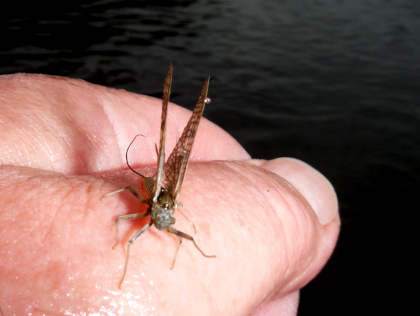
PW of Evesham and a few others asked for clarification about the large dark olive and march brown. I believe the photographs provided in the February report showing them apparently at the same size caused confusion. I think the common English names are also slightly unhelpful. The large dark olive or Baetis rhodani is by no means a large fly at all - about 1 centimetre, although they can vary slightly. The "large" in the name is only in comparison with other baetidae olives (believe it or not, there is also a small dark olive). If you look at one closely, you will see that the body is indeed a very dark olive green (varies slightly between sexes). But from a distance, the pale grey of the wings is what stands out. So you are looking for a small fly, apparently pale grey, either drifting on or fluttering up from the surface. We used to call them spring olives, a name which I prefer, but I suppose that failed to cater for the fact that they also appear during the autumn and winter.
By contrast the march brown is quite definitely a mottled brown in colour and about three times bigger, very nearly as large as a mayfly. And like the mayfly, it is noticeable that on their first appearance, trout are somewhat wary of them. Fish seem to know exactly what a large dark olive is, and will nail the first one they see. With the march brown, it seems that they require a little time to get used to the idea that they are edible. Once they do, there is no holding them back. I had the following experience this month. I was wading in a pool in the Usk just below Abergavenny, practically bouncing on tip-toe in the current trying to keep dry as the water levels were higher than usual, and casting for some rising fish with a dark olive imitation. The olives had been coming off for half an hour. Then I saw the first natural march brown of the day drifting directly down towards me. When it was only a few yards away, the neb of a large trout broke the surface and distinctly bumped the fly without taking it. Then there was a slow swirl right round the drifting fly in a circle, giving me a view of a mottled back and dorsal fin, and finally an olive coloured tail like a spade showed as the trout went down again. A moment later I was able to pick the fly up in my hand. I imagine the poor creature must have felt much like a swimmer in the water being circled by a great white shark. I set him on his way again. The next day, and the one after that, Usk trout were taking march browns without hesitation. In fact we have now had excellent reports of big march brown hatches and associated catches from most parts of the river.
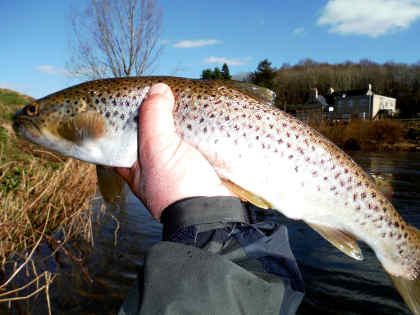
The Taff at Merthyr Tydfil seems to have fished well throughout the month, DP from Neath reporting various hatches and catches from opening day. DP very kindly offers to give advice to visitors on parking and river access points, which is always helpful in urban fishing. He can be contacted on Daniel.1986@live.co.uk . Tony Rees of the MTAA has also kindly provided a new map of the Taff fishing - click here to view it. On opening day, guide Frank Williams and guests had a good day on the Usk at Fenni Fach, taking 13 trout during large dark olive hatches. On the 6th , BT from Essex took a dozen trout from Dinas and Abercynrig. On the 12th , PW from Evesham and his brother had a good day at Glanusk Park, taking 10 trout to 15 inches. On the 15th , MB from Cwmbran took 8 trout to 2 pounds from Dinas and Abercynrig. On the 17th , DA from Hampshire fished at Ashford House while olives and march browns were coming off, and got 4 good trout to 2 pounds on a Jingler. On the 18th JJ from Stourbridge with a friend took 14 trout of around a pound each from Dinas and Abercynrig with nymphs. PJ from Ammanford was out at Trallong and Abercamlais on the same day. He had problems with ice in the rod rings when starting, but later got 7 trout during the large dark olive hatch, mostly on a CDC dun pattern. He also encountered two canoes out on the river in breach of the agreements. It hardly needs to be stated that a river as small as the upper Usk cannot accommodate anglers and kayaks at the same time. On the 19th AP from Cheltenham fished at Glan yr Afon and got 5 trout to 40cm with a Kite's Imperial. On the 21st BH from Oxford got 5 at Dinas and Abercynrig using a French leader, PW from Evesham with a friend reported 10 from the same beat on the 23rd and TD from Amport had 9 trout to 17 inches on the 24th , also from Dinas and Abercynrig. On the following day, TD moved to Ashford House, where he reported a very big march brown hatch and took 5 more trout to 16 inches. On the 25th , Dave Collins from Moccas (nice to see you out and about again, Dave) fished the Gwent AS water on the Usk above Abergavenny and got 9 trout to 14 inches during a good march brown hatch.
The Wye was slightly later, but the same hatches and rises as on the Usk were eventually replicated. The problem I had when fishing it on a couple of occasions was that nobody seemed to have told the grayling that their season was over! Most of the fish which rose to my fly turned out to be the wrong species. However, MB from Cwmbran came to fish at Gromain on the 23rd and got a dozen trout, mostly with a Parachute Adams while olives were hatching. There were also a few reports from the smaller streams. CP from Swansea fished the little Dore at Abbeydore on opening day and got 1 trout and 5 grayling with nymphs. BP from Pembridge tried the same beat on the 22nd and got 5 trout between 6 and 10 inches, also with nymphs. RW from Portishead got 4 trout to 12 inches from the Llynfi at Pontithiel on the 25th , mostly with nymphs. And on the same day, MB from Malmesbury got 7 trout from the little Bideford brook in the Forest of Dean, where he noticed large dark olives hatching. A few anglers took a trip to the reservoirs: RD from Troedyrhiw fished the high altitude Usk reservoir (during the eclipse on the 20th ) and got 6 (rainbows, I presume) and SR from Llangadog also took 6 on the 22nd , fishing with Diawl Bachs.
Some rather sad news came from the MTAA this month, in that the Upper Neuadd reservoir in the Brecon Beacons is not going to be available for a time while the water company make a decision about carrying out work on the dam. Ever since I have known this reservoir at the very top of the Taff system, it has been kept half-empty due to suspected weakness in the barrage. As a result you had a rather shallow lake, ideal for brown trout, surrounded by large areas of soft and boggy marshland draining water like a sponge. In recent years, at the members' request, the MTAA have stocked a few rainbow trout, but Upper Neuadd always seemed at its best to me as a brown trout preserve. I used to fish it across the wind with rather small wet flies, such as Williams Favourite and Grouse and Claret Spider in size 14 and 16. The panorama surrounding this mountain lake is absolutely wonderful, with the highest Beacons peaks crowding close all around it. Now, it seems, there are more serious concerns about the safety of the dam, and so anglers will be deprived of it for a while. Do take the opportunity to fish this one if and when it becomes available again.
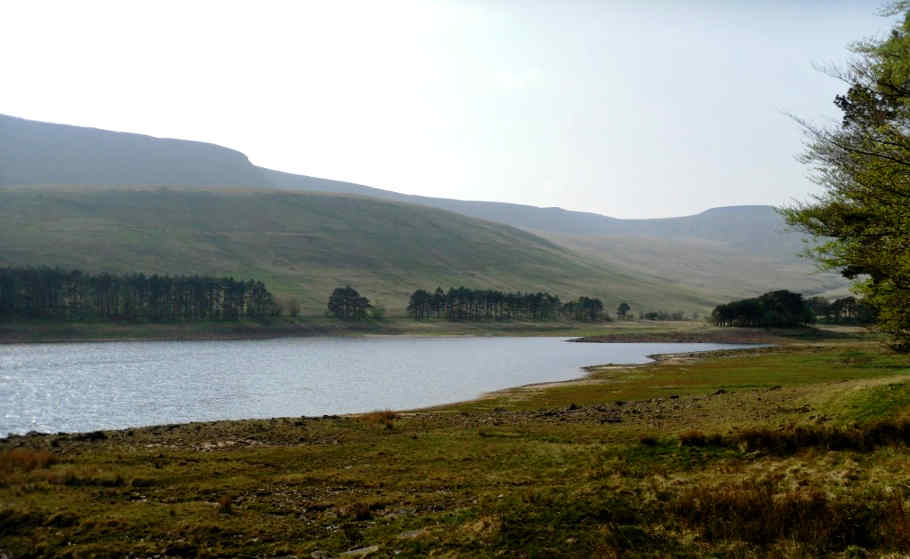
As we get into April, we can now expect the grannom sedge. Last year's rather early hatch of this fly was meagre, but perhaps we can hope for one of the more spectacular events this spring. We should also start to experience some more general olive fishing through the day - time to be trying out Parachute Adams and similar patterns. Spider fishing just below the surface should also be effective. We can also look forward to some of the smaller streams and brooks of the catchments warming up and coming into condition. I have received a number of calls asking advice about small streams lately. Here are some answers to those frequently asked questions which might be of interest to those thinking of fishing small streams and brooks for the first time. As always, I'm describing what works for me; others will doubtless take a different approach and do quite well enough:
Little streams seem like a good place to learn fly-fishing? To be honest, if you are a complete novice at fly fishing, especially on moving water, it would be wise to take your first few trips on a larger river with easy to wade and open pools. That way you will have plenty of room for your back cast while you are learning and improving your casting. The casting on small streams is quite demanding and quite specialised. Don't be daunted by the idea of wading in larger rivers; provided the right location is chosen, this is relatively easy. When you have got the hang of that and can place a cast roughly where you want to, then try the smaller overgrown waters.
Small stream fishing is relatively cheap though? Absolutely it is. Most beats will not cost you more than 10 pounds for your sport, and for 75 pounds you can buy a season ticket from the WUF which will give you access to more miles of water than you can possibly get round in a season. Tackle is relatively simple: waders, one small rod, reel, line plus a box of flies and small net will meet the case.
So, presumably any old rod will do then, provided it is short? I don't think I can agree with that. The problem here is that, inherently selfish and lacking in conscience as I am, I have never had any problem talking myself into buying nice bits of kit. I am now going to attempt to do the same with you! I know that some very good anglers do manage excellent results with quite modest tackle, but why handicap yourself from the start? You certainly need a short rod, and I would advise you to buy one no more than 7 feet long, probably rated for a 3 weight line. There are those who experiment with 5 and 6 feet rods of 2 weight rating, although personally I have never felt the need. I will tell you a trick later to effectively shorten the length of your rod while casting. But consider now the specialised demands on a small stream rod. Significantly, you will rarely be casting with 30 feet of fly line outside the rod tip, which is the theoretical loading length for fly rods rated with the AFTM system in more conventional single handed fly fishing. Small stream rods have to handle shorter lengths of line and more or less flex under their own weight, which means they generally have more of a through action than conventional rods designed for larger waters. The casting involved onsmall streams is more of a continuous whipping action than with longer rods, with much less of a distinct pause waiting for the back cast to unfurl. Nevertheless, you want be able to deliver the fly accurately, so the need for a through action rod does not mean you can tolerate a series of vibrations or wobbles to spoil the loop when the rod unloads. The specialised requirements of the small stream rod have led some manufacturers to experiment again with fibre glass, or glass/carbon composites and there are those (not me) who make a case for going back to split cane. Buying a fly rod is always a bit like buying a watch or a suit: most of us can't afford Rolex or Armani, but we can't expect to be pleased by the very cheapest available. Suffice it to say that if you would like a good small stream rod, which will then please you over a lifetime if you look after it, you will probably need to pay a couple of hundred pounds. If I needed a new one right now, I would buy a Greys Streamflex.
But there is no need for an expensive reel; it's just a reservoir for line, right? That is true, but there are a few points to consider. It should balance the very light rod described above, which means a weight of about 3.5 ounces. It needs to hold your 3 weight line and remember that a double taper, should you opt for that, takes up a little more space than a weight forward line. There will be no need to house much backing. A click check will be fine and any disc drag mechanism, in this case, would be so much useless weight. Nor is there a need for a large arbour. If you have a fly line with memory which kinks when wound on a small arbour, buy one which doesn't (Cortlands). That all sounds easy enough, but now consider this: in no other form of fly fishing will you be handling the reel quite so much. Wading up your small stream, you might come to 50 tiny pools during the day. On arriving at each pool, you have to strip off line ready to cast. And on leaving it, you have to wind the line back onto the reel before moving on. If you have to be using the reel so much, it seems to me that you might as well own one which gives you pleasure to handle. After being irritated by using some cheap ones, I have a pair of small click check reels by a well-known British maker, both of which look nice, sound nice, and give me pleasure. (All right, I have already admitted that I never had any problem about self-indulgence when it comes to fishing tackle. There is a double barrelled name for people obsessed with tackle buying, and friends apply it to me regularly). Now I'm going to make an unconventional suggestion. If I were buying a new small stream reel now, I might choose one of the automatics by Franco Zeferelli of Bologna. These are about the right weight and have the great advantage that, with one squeeze of the lever, up to 20 feet of fly line whips off the surface and back onto the spool. It will save you a lot of winding up time. They have been around for a few years and I think Glasgow Angling now market them.
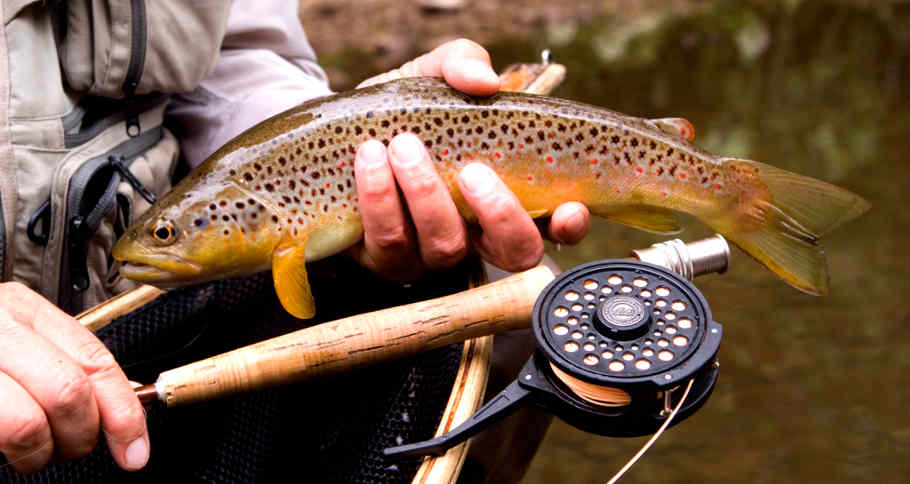
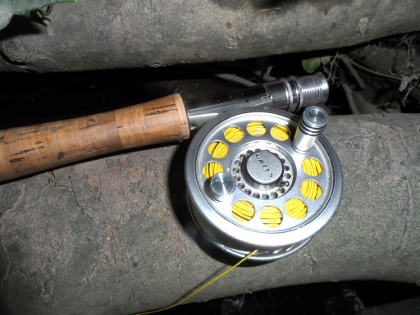
Fly Line? This is very much a matter of personal preference. You will only ever need a single floating line. A lot of people tend to favour a forward taper line nowadays, but I can see no advantage in it for this particular work, in which the ability to shoot line is not critical. For a long time I used Cortlands 444 floating double taper 3 weights, and I'm still very happy with those. A few years ago, Cortlands introduced a "Sylk" version of the same, which I like even better, not because it is coloured dull yellow to look a little like one of the old silk lines, but because of the fine diameter and taper. It works beautifully at close range for me. Other people will have other preferences and recommendations, but I would suggest that it would be a great pity to fish with a cheapline or a worn line, just to save a few pounds. The fly line contributes so much to the pleasure or otherwise of your day, so why not have the best you can find? A short tapered leader is in order, and the needle knot has never been surpassed in neatness as a means of joining line to leader butt. I use a tiny metal ring to join a couple of feet of tippet to the main leader, and cut up and discard the tippet section at the end of the day.
Thigh waders are good enough? The WUF passport book used to advise on the wading difficulty to be expected in wild streams and marked those which can be fished in thigh waders or even wellington boots. So they can, in places, but over the years I have formed the habit of fishing most of them, even the smaller ones, in breathable chest waders. This is because nearly all of them have a few deep holes, even surprisingly deep holes, and having chest waders means that I can usually make the whole upstream journey in the river channel. This is much the preferred means of progress on our waters and I do not believe that in these mostly rocky streams we are doing much harm to invertebrate life in the process. Wading deep occasionally saves a great deal of scrambling up and down banks and through brambles etc. in order to avoid deep places while wearing shorter waders. It's just easier that way. However, I don't wear expensive waders for this kind of rough work. The battered and much patched and repaired no 2 or no 3 pair will do fine, and if thorns or a barbed wire fence do their worst, there is no need to be too upset.
I suppose I am going to have to learn some fancy casting? Not that fancy. Of course you need a basic overhead cast. The important thing about this is that most of the time the same basic cast will be made with the rod canted over to the side - it is rare to have enough space overhead to make a conventional cast with the rod upright. But it is not difficult to convert an overhead cast to a side cast - nothing else changes. The important thing is that you are able to make it on either side of your body - I will come back to that. Now and then it's useful to be able to do a roll cast to send the line in a loop through a tight gap. This one is easy to learn and looks satisfyingly impressive. Very rarely, in a particularly tight place, you might find the bow and arrow or catapult cast useful.
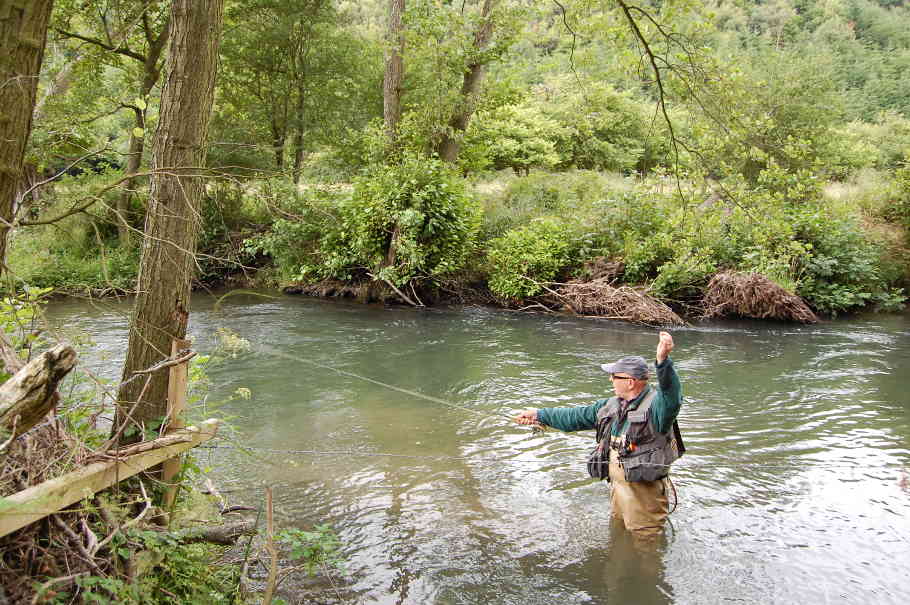
I can only cast with one hand. Is that a great disadvantage? Now, let's have no nonsense about left and right handed pools. There are no such things, because you are going to be able to cast competently on the left or right side of your body as required. That doesn't mean you need to be ambidextrous (although some manage to learn to cast with either hand by practising with two rods simultaneously). It simply requires that, facing the target and with your normal casting hand, you can make casts to the right or the left of your body, or to express it another way, choose between forehand to the side and backhand across your chest. There is one huge advantage in making the "across the body" cast. Most of us are around 2 feet wide across the shoulders, therefore facing upstream and making the cast across the chest results in the effective length of a 7 foot rod becoming 5 feet. This is exactly what I would choose to do in a tight spot. Therefore, as a right hander facing upstream in an overgrown section, I might well choose to tuck my right side well into the vegetation of the true left bank, leaving a shortened rod plenty of room to move in the open part of the channel. I only recently learned from an old magazine article that the Rev Edward Powell, that highly efficient if not entirely admirable border fisher, used to do that all the time.
I suppose I will have to be as stealthy as a Red Indian? I guess it wouldn't hurt, if you want to be. But if you are a clumsy old fellow like me, you can get a lot done by choosing how close to the fish you can afford to work. It is necessary to know the vision limitations of trout and take advantage accordingly. Much has been written about the nature of a trout's window, but it will be enough to say that you are reasonably safe while he can't see you. Get to know just how far you need to stand off to be safely outside his window. You may not see a rise (unless you are lucky) when you arrive at the pool, but you should have an idea where a trout is likely to be lying. Approach that spot with care. You will always be fishing upstream (I can think of virtually no circumstances in which small streams are best fished down). Therefore, you are likely to be approaching from the trout's blind spot. The lower you are, the closer you can approach. Waist deep in the pool you have already fished while wearing chest waders, is one very good way to reduce your profile while making your shot to the one above. Remember, you can get closer to a trout lying under a disturbed surface. Walking high along the bank is a very bad idea - another good reason for being down in the channel. Don't wear bright clothes, but drab colours. That applies to every kind of fishing. And if you want to use a bush or another object for cover, remember that being tucked in front of it is usually just as effective as behind it. I do crouch down occasionally, but have never felt the need for knee pads although you can get these, if needed, from stores catering for carpet and flooring layers. Remember that one good shot putting the fly in the right place is usually all you need to provoke a take. Your first chance is your best chance. And it's an obvious remark to make, but the trout shouldn't be able to hear you or, more accurately, sense vibrations from you either. Put a rubber tip on the end of that wading staff.
Dry fly or nymph? This is largely up to you and we all have our preferences and comfort zones. I dare say a good nymph fisherman could fish sub-surface all through the season and get good results. I think that would be rather a waste, however, because, like most of us, I like to use a dry fly where I can and the dry fly method is supremely adapted for small streams once they have warmed up and fish are prepared to rise. However, it wasn't always thus. Old Canon Eagles famously used to fish our Longtown streams with a team of three or even four wet flies and had great success. I like the story of him asking the young Edward Powell, sometime in the 1920s: "All this dry fly nonsense - anything in it m'boy?" I feel I can imagine more or less how Powell fished, but I would love to see exactly what Eagles did.
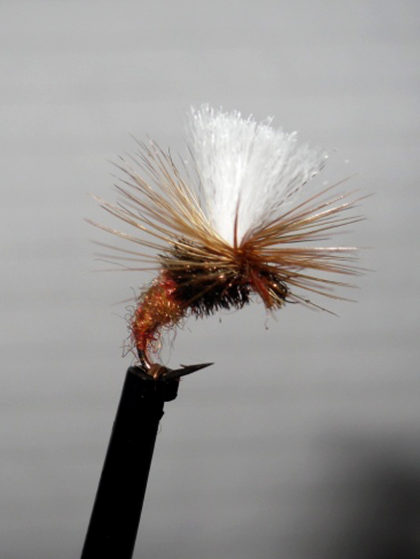
That was then. Without a master class from Canon Eagles on how to fish a leash of wet flies in a small stream, for most of us the choice lies in fishing upstream with a single nymph and watching the leader for a take, a nymph suspended below a dry fly, or a dry fly alone. In the early season the choice has really been made for us. Most of our streams open on 3rd March (18th March for Severn tributaries) when the water will almost certainly be too cold for rising trout. For the first couple of weeks or so it will be a question of searching the dubs and holes for fish which may be lying virtually comatose. Later, as hatches begin, the nymph will begin to work in the faster runs and eventually as the water becomes warm enough, fish will begin to rise to the dry fly proper. Logically enough, the lower the altitude of the stream, the earlier this warming up takes place. I would expect the Forest of Dean streams close to sea level to be among the first, and the high Usk tributaries above Sennybridge to be the last, as the spring advances.
Any good fly patterns? I don't think you need many. On the larger rivers you certainly come across trout which have become fixated on a certain hatching insect, which you therefore need to imitate accurately. But on the brooks, trout usually are happy enough to take whatever they can get and general purpose patterns work well most of the time. The mayfly hatch, where it occurs, might be an exception. So, for nymphs I use a Goldbead Hare's Ear in several different sizes/weights, mostly 14 and 16. Sawyer's PTN is also good, ideally weighted with a bead. In fact lots of different small nymphs will work, but offering a large choice is quite unnecessary. For a dry fly I happily use a size 16 Rusty Klinkhammer, but others work well too. Something small, scruffy and dull coloured will probably be taken. (Friends say all the flies I tie look scruffy, but I refuse to be ashamed of anything which the trout has approved). You should have a mayfly pattern for the relevant months in brooks which have a silty bottom and a mayfly hatch. That's it, although I am sure, like me, you will find some irrational excuses for carrying more and thus needlessly confusing yourself!
Oh come on! You aren't going to send me out with just three or four patterns? There are a dozen compartments in my fly box. All right then. I have just looked in my own small stream box and found an eclectic collection. Apart from the rusty brown ones, there are little Klinkhammers in olive and black. A few small Pheasant Tail Nymphs, the original Sawyer's version made with copper wire, used for fishing New Zealand-style below a dry fly. How about some of these little Kicking Beetles, made with black foam, peacock herl and tiny rubber legs, for use if you suspect trout are taking natural beetles falling from the trees on a windy day? They would probably take a Klinkhammer anyway, but it might amuse you to tie one of these on. You might add a few heavy Tungsten Hare's Ears to your collection of bead head nymphs. I find tungsten isn't usually needed for the brooks, but there is the odd very deep hole where you might need help in reaching the bottom. Maybe you should have the Pink Shrimp as well to go with it, for those larger streams containing grayling. Some Deer Hair Emergers will take on the duty of imitating anything on the surface with a prominently sloping wing. I can think of one or two occasions when that pattern has proved useful. A few of these small Elk Hair Caddis patterns might be good to have with you, especially as the year goes on and the sedges are about. I tend to have two mayflies tied on size 12 hooks with me during the early summer. One is Mike Weaver's Hackle Mayfly, mainly because the effect of a mixture of coloured hackles, including orange, grizzle and olive, pleases me inordinately. The other is a variant on the Irish Gosling, actually a wet fly, which is best fished awash. These Grey Dusters in the corner are sometimes useful things to have, as are the Cree Duster variants. Not only acceptable to trout, they are very easy to make. And something small and black can never be a mistake to include, so I have some Williams Favourites in size 18 and 20. Will that do? Please bear in mind again that the significant difference between small stream trout and those living in larger rivers, is that the trout in brooks are much less likely to be feeding selectively on one particular hatch of insects.
OK, nothing's rising - where will a trout be lying? One could write a book about that and quite a few people have. But if in doubt when confronted with a small pool with no visible signs of life, you could do worse than introduce your dry fly or nymph into the current flowing in at the head. That is where the food will be arriving and the spot which trout are likely to be watching. Fish the foam line, particularly where it runs close to an undercut bank.
Of course the fish will all be small? On average and depending on the stream, that's true and only natural. They will be wild of course, and usually very handsome in appearance. If regularly having a tussle with large fish is very important to you at this stage in your fly fishing journey, stocked rainbows and browns in still waters (and chalk streams for that matter) would probably attract you more. However, of course it is true enough that we all appreciate playing a large fish now and then, and the fact is that small streams can produce them on occasions, although usually unexpectedly. Check the WUF's back records and you will find the occasional trout up to 18 inches taken from the brooks and large grayling also in some cases.
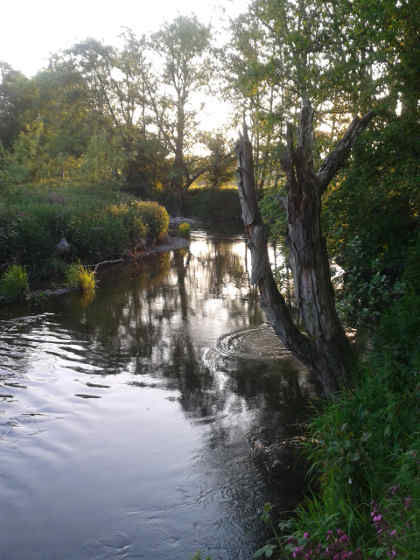
What is the most difficult fish to catch on the smaller streams? I will answer that one without hesitation. It is the midsummer fish lying out on the pool tail shallows, just above the place where the water breaks over the gravel to run down the next pool. You come up from below and there he is, out in plain view, veering from side to side occasionally to inspect or take morsels coming downstream. Knowing he is rather vulnerable out there, he is quite ready to bolt at any sign of danger. He is just under the surface in shallow water, which means his window prevents him from seeing very far to the side. This means you must drop your fly very accurately if he will get to see it at all. Nor must you line him in the process, so you will have to try to cover him by casting diagonally across as well as up. The water on the stickle below is running much faster than the pool tail, so that the line dropped across it will quickly accelerate and create drag. Pool tail trout are even less likely to take a dragging fly than others. Finally, if he does spook, he will bolt straight up the pool and scare any other fish in it. For all these reasons, I rate a pool tail trout as worth any three ordinary ones!
I like to fish with a friend. I suppose there won't be room for that on a small stream? Well, you certainly won't be able to fish the same pool simultaneously. One option is to go leap-frogging up the stream, taking pools alternatively. Much more fun, in my opinion, is to share the rod, moving upstream together and taking turns to fish on each pool. One casts and the other advises and thus the challenge of each new situation is met and discussed by the pair of you. A team effort makes for a very satisfying day.
Anything I should read? Three books come to mind, all by authors very familiar with the streams in our area. Fly Fishing the Welsh Borderlands by Roger Smith, still very much with us, is an excellent over-view of the history of it all, including the literature, the characters involved and the fly patterns. I contributed a few lines to that one, so I'm more than happy to suggest it for background reading! Small River Fly Fishing by James Evans, formerly President of the Game Fishers' Club, is more than 40 years old now and so some of the tackle recommendations are rather dated, but, if you can find a copy, what he had to say about fishing our streams is well worth paying attention to. One I would thoroughly recommend as a practical "how to do it" book is Mike Weaver's The Pursuit of Wild Trout, which was published in 1991. Mike still publishes articles, usually on fishing small streams, in Trout and Salmon. The book incorporates all of his river trout fishing experience world wide, but small streams and this area do feature heavily. Rather like Righyni, Weaver seems to be one of the rare original thinkers in fly fishing, one whose advice is worth weighing carefully.
So, can you summarise the attraction of small stream fly-fishing? A lot of things are attractive about it. I like the lightweight, roving approach carrying the minimum of gear. Somehow, solving the technical problems on 50 tiny pools is more fun and more interesting than spending a similar amount of time on a couple of pools in a big river. There is something rather marvellous about extracting beautiful trout from a forgotten little stream which nobody has bothered with for years. The WUF has done a great job of opening some of our local ones up, but others exist in many parts of Britain, still waiting to be discovered. It almost always involves a good walk and fishing the brooks gets you into close contact with some wonderful country. Finally there are the fringe benefits apart from fishing which make the day memorable, such as a pint in the local pub, a look round the village church or a chat with a farmer.
Tight lines for the April fishing!
Oliver Burch www.wyevalleyflyfishing.com
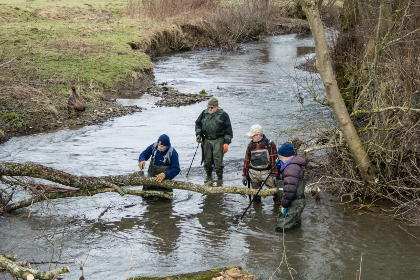
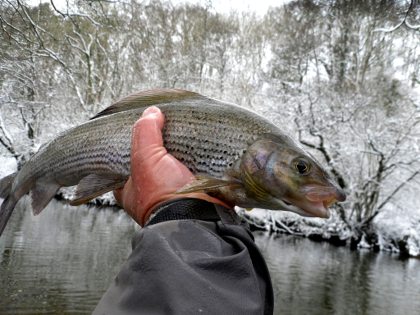
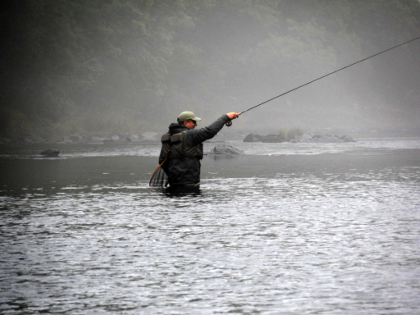
February 2015
It has been a quiet month. February, usually the coldest month of the year, rarely provides the easiest fishing, even for an arctic species like the grayling. After what has been a second relatively mild winter overall, we seem to have had a bit of every kind of weather this month, including some cold night frosts, winds, snow on the hills and plenty of rain without much sunshine to compensate. Quite a few days were lost due to floods during February and it seems likely the rivers will still be high when the new season opens on March 3rd. Bad news came from the Crickhowell section of the Usk, where a heavy oil spill into the Nant Cwm Beth stream affected approximately 1 kilometre of the tributary and main river. NRW contained the spill with booms, but a fish kill resulted in the brook.
In between the floods, we did manage to tackle quite a lot of the planned maintenance of small streams for this year. The volunteers (known in the WUF as Dad's Army as it tends to be retired people who supposedly have that much time on their hands) were this year divided into north and south teams, and to date have cleared beats on the Dore, Honddu, Escley Brook, Forest of Dean streams, Edw, Arrow and upper Lugg. Meanwhile, some hardy souls did what they could with the grayling fishing. The main Wye below Builth Wells was for most of the month at near flood heights, although running reasonably clear and it was possible at times to take grayling from the slower runs, usually by trotting. Around Rhayader the upper river was generally at a more manageable level and, as always, the Irfon levels were quick to drop away and provide fishing opportunities whenever the rain stopped for a while. The Lugg and Arrow in Herefordshire remained persistently high, although a few of us gave them both a try. On the 1st of the month MB of Cwmbran reported what seemed to be a leash of big grayling from Craig Llyn, "biggest grayling around the 20 inch size and a couple slightly smaller." TU from Bristol visited the main Wye at Abernant on 5th February and got 22 with the trotting rod. On 7th February AC from Blagdon with a couple of friends reported 9 from the Glyndwr Preserve on the Dee in North Wales, a reminder of the widespread range of fishing and rivers which the WUF is marketing these days. On the 8th, CC from Llanwrtyd Wells enjoyed himself trotting the Irfon at Cefnllysgwynne, taking 6 good grayling to 2.5 pounds. BP from Pembridge had 4 fish to 2 pounds from the Lugg at Lyepole on the 9th. MP travelled from Machynlleth to take 8 grayling from the Lugg further downstream at Eyton on the 18th.
What to do from 3rd March as the new season opens? Well, I know it's my remit to write about trout and grayling fishing rather than salmon, but I have to admit to an increasing temptation to put a bit of time into trying for a Wye springer. I will therefore put down a few words if I'm allowed. A few years ago, the odds to me looked to be too long for taking a salmon in March or April and there would be more fun to be had with a trout rod on the Usk at this time. Salmon fishing could wait for later in the year. However, if you check the WUF's recorded statistics for the last few seasons, while we have had some ups and downs with the overall figures and 2014 was a disappointing season for most UK rivers, the spring run on the Wye has been very slowly building. It would be wonderful to think that the glories of the former spring run might return. These are very special fish, often back after three winters at sea and packed with enough protein and muscle to last them 10 or 12 months in the river as well as producing eggs and milt. Did you notice the report from pike anglers who saw salmon moving slowly upstream through Backney during their day's sport in January this year? That should be enough to raise the hairs on a salmon angler's neck.
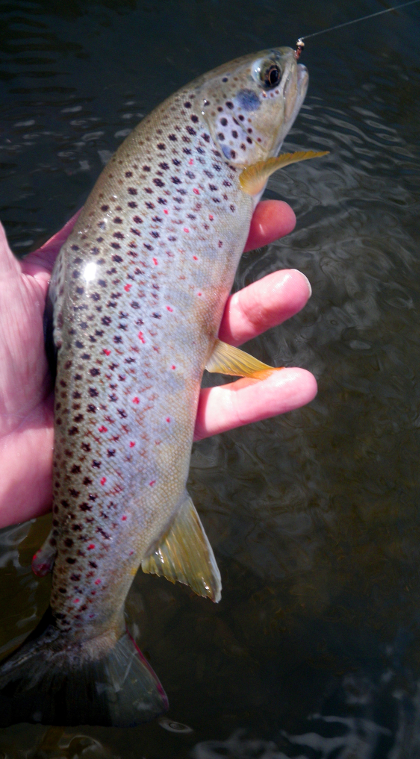
The lower or middle river would normally be the likely area to try. However, given the amount of rainfall this week and the current level of the river, it looks likely that the lower part will still be too high when the season opens. And, of course, there has been plenty of running water this winter to allow spring fish to reach further upstream than normal. Last year we opened with a fish from the top of the river and I remember a ghillie telling me that once he used to see fresh salmon up at Builth as early as Christmas day. April will probably be better than March, and it's possible that numbers of well mended kelts will disappoint you before you meet the real thing, if the high water hasn't yet taken them away. But after all the presence of well mended kelts (spawned out females in the process of recovery) are a sign of health in the river. If you do get a springer, it's likely to provide a lifetime memory.
For the trout angler, most of our small streams will be open from the 3rd. The exceptions are the Severn tributaries, including Forest of Dean streams, which start on the 18th and the Aeron which opens on the 1st April (check the Passport if in doubt). Small streams do take some time to warm up, depending mainly on their altitude and of course the spring weather. If you fish them in March, you should probably be prepared to spend most of your time searching the deeper pools with a weighted nymph, either fished singly or perhaps duo-style with a dry fly as indicator. Of course, if any rises are seen, I would be prepared to change to a dry fly like a shot, but that is much more likely to happen at some during April rather than March. There will be more on small streams next month.
March can provide some very interesting trout fishing on our main rivers and occasionally some real specimens turn up at this time of year. These rivers, too, need a little time to warm up and sometimes there is almost a competition as to whether the Usk or the Upper Wye will be first. I tend to put my money on the Usk. You can carry on with the weighted nymphs, of course, but the great saviour of early March days, which might otherwise be quite dour, is that famous cold weather fly, the large dark olive, or Baetis rhodani. Formerly known as the spring olive, this normally puts in an appearance between midday and about three in the afternoon. It's around in the autumn too and I swear that every single day I have been out for grayling or cleaning brooks this winter, whether in frost, in rain or in flood, one or two of these courageous little creatures has appeared on the surface. Quite often the occasional grayling has reacted by rising. The duns hatching in spring are somewhat larger than the autumn and winter ones and trout just love them. When I see the first olive bobbing downstream like a little grey sailing boat, I make a bet with myself that the trout will start rising before I see number six, and I am usually right. The rises are invariably very excited and splashy, as if the fish were ravenous after the winter.
I can remember a March day on the Usk Town water, very bright after a cold start, with the river low and clear, seemingly lifeless. Rooks were quarrelling noisily on their nests in the pines by Llanbadoc Church and it was good to be out in the sunshine, although I had taken nothing that morning but a few parr. Certainly I had started fishing too early. Then, at some unseen signal, olives began to hatch out on the fast gravel shallows at the head of the Bell Pool. This is an exposed place, where the river's flow is spread out rather than concentrated. I suddenly realised that two good trout were out there over the gravel, obviously having moved up from the deeps of the main pool, snapping up the duns systematically. I had a team of spiders made up, which I cast across to just above the first fish and allowed to drift down across his position. The flies were no more than awash in the surface. Later in the year he might have been spooked in such clear shallow water, but this fellow was full of enthusiasm and took first try. I got the second one five minutes later. They were both about 15 inches and both had taken a Waterhen Bloa, the classic North Country spider imitation of the spring olive.
Personally, I'm very happy with a brace or so if they are caught in an interesting and memorable way. You may only see this hatch for an hour or so, perhaps less, although the timing can vary on different pools. My suggestion for early March is that you might as well fish gentlemen's hours, starting around 11 and possibly leaving as early as 4 if the hatches are clearly over. Keep your eyes skinned for the first sight of the grey olives and bear in mind that these usually hatch in the faster more oxygenated water at the heads of pools and that trout will react initially by moving forward to take advantage. I usually take two rods made up ready to the river. One is a 10 footer with a team of spiders, with the option of a heavy nymph to be used on the point. This will be more useful in the early stages when the trout are interested in rising nymphs or the emerging duns in faster water. The second is a 9 footer made up with a single dry fly on a long leader, which is likely to prove more effective later when duns are being picked off in slower current, or where they become corralled by eddies in the stream.
Sawyer's PTN or a Tungsten Hare's Ear, usually in size 14, are pretty good imitations for the Baetis nymph. For a wet fly to imitate the emerging stage, Waterhen Bloa as already mentioned is a very effective and time-hallowed spider pattern from the North. Again this should be size 14 or occasionally 16, and always sparsely dressed. The standard dry imitation for the last few decades has been Oliver Kite's Imperial. It might be thought that Kite was a chalk stream specialist, but he was born and bred in Monmouthshire and he made a habit of an annual Welsh holiday in March to get the jump on his beloved Avon's opening date of 1st April. Thus he certainly knew about our kind of spring fishing and would fish the Teifi first at Tregaron, and later make his way back to Wiltshire via the Usk at Kemys. His Imperial, supposedly invented at Tregaron, uses a very interesting combination of grey heron herl and purple thread for the body. I used to fish it a lot for spring olives, but more recently I think I've discovered a better one. This is the Bastard Adams from my good friend Stuart Jarvis, who before retirement was gillie at Glanusk Park.
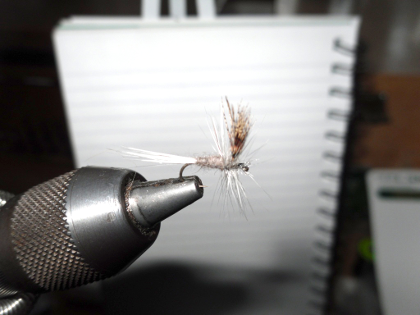
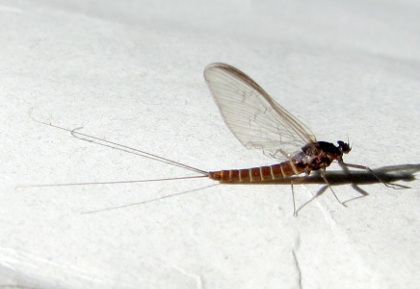
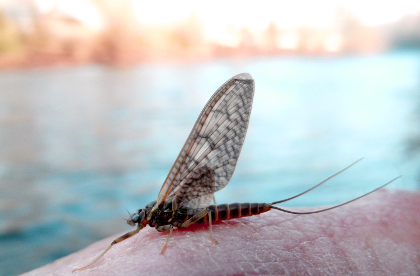
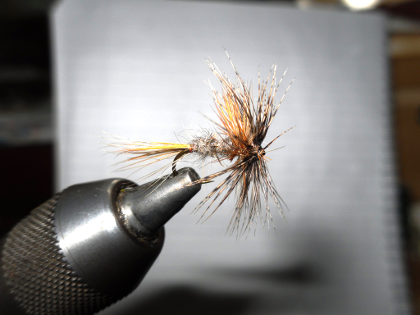
Here is his dressing:
Hook: 14 - 16
Tail: Dark blue dun
Body: Slate grey under-fur of rabbit or muskrat
Hackle: Dark blue dun
Wing: Bunch of brown partridge back feather fibres, tied upright.
Of course there are suggested large dark olive imitations written about regularly in the magazines. An article in the March edition of Trout and Salmon recommends the Jingler, a pattern which has long been popular in the North. It certainly looks right and I have tied up a few to try out this year.
Hopefully we can expect a couple of other interesting hatches to appear on our rivers during the early spring. These are the march brown, which is usually more of an April fly nowadays, and the grannom sedge, also expected in April. Accordingly, I was going to leave it until next month to mention these two and it seems slightly strange to be writing about them on a very cold morning in late February. However, you can rarely rely exactly on nature's timing. It has not been so very cold a winter altogether and both of these species appeared on our rivers by late March last year, so perhaps I had better deal with them now. The Usk used to be famous for its spring march browns, which produce a really spectacular hatch. It is a large insect, almost the size of a mayfly, and it tends to come off in sporadic bursts, each lasting about 10 minutes, during the course of the day. You can wander about from pool to pool, looking for one which is "on song" or sit and wait overlooking a known hotspot. Later in the season there are some very similar looking "false march browns," including the large brook dun. Close examination with a magnifying glass and your pocket recognition book should tell you what you have got, but I shouldn’t worry overmuch - the trout like them all just the same. Again the duns tend to come off from the fast water at the heads of pools and the fish will come forward to take them, forming a lunch queue with great enthusiasm.
In the days of the great march brown hatches, Usk anglers would fish with a team including the Brecon Cob, a wet fly designed to be fished down and across in high water. Then the natural fly became very rare and at one time it was believed to be extinct in most parts of the Usk. Thankfully, during the last few years it seems to be returning, and we are now seeing it on the upper Wye also. Woodcock and Hare's Lug is a spider pattern which I find works well when trout are feeding on march browns. You have an immense choice of dry patterns, several of them produced by local fly-dressers, and there are new ones every year in the magazines. At a pinch, a largish Deer's Hair Emerger, which imitates only the slanting wing of the natural, will often take fish. One design which works well for me is an old pattern by Dai Lewis, the professional angler of Tregaron who could neither read nor write, but had the reputation in his day of knowing more about trout than any man alive. Here it is:
Hook: 12 or 14
Thread: Brown Tail: Long ginger cock whisks
Rib: Yellow thread
Body: Hare’s ear
Hackle: Ginger cock with two soft brown partridge hackles in front.
The grannom sedge, the first of the year’s caddis flies, provides a very different phenomenon. With spring olives and march browns we can expect to see dozens or even hundreds of individual insects; in the case of the grannom we are talking about millions. A big hatch in full flow almost obscures the sky. In the preceding weeks, you can get an idea of how big the hatch will be by looking at the number of tiny caddis cases anchored to the stones, looking a bit like the spots on a leopard’s hide. When the hatch begins, usually late on a warm sunny morning, it builds quite quickly, first the pupae rising to the surface, next hatched adults on the surface, to be followed by the mating flies whirling around like a snow storm of little brown scraps. On occasions, you need to shut your mouth to keep the tiny creatures out.
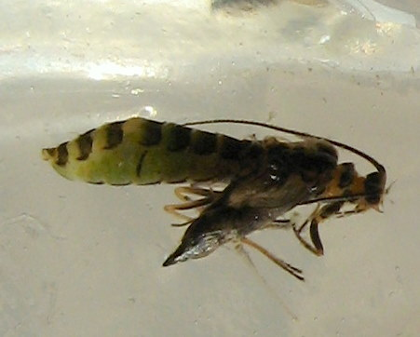
The trout certainly react in a most spectacular way, but anglers sometimes find this hatch difficult to fish. Targeting individual fish with a dry fly often fails to work when the hatch is a big one. Simon Evans, after spending some time on a high bank watching a group of grannom feeding trout, advised that this is probably because the fish are constantly weaving from side to side to snap up the numberless morsels on offer. There is not much value, therefore, in presenting a fly where a fish just rose - he is now elsewhere! Dry fly fishing, after all, works much better with rising trout which remain on line. I think Simon is right about this. My own experience is that during the rising pupae phase of the hatch, I usually get some results with a team of spiders presented across the stream. This at least gives the fish a chance to see one of three artificial flies at slightly differing depths and takes are pretty positive when they do come. There are several spider patterns specifically designed to imitate grannom, but the one I favour most is Hare's Lug and Plover, a Roger Fogg pattern. I might even employ three of them. Using this method, I like to fish the runs and pool tails, wherever I can see fish moving. Dry fly fishing works much better when the grannom are trickling off slowly over time rather than the full "blitz" hatch. Many wise anglers have scratched their heads trying to invent a really effective imitation of the adult grannom. Our David Collins has produced a few, including emergers and parachute style flies, which do work. I also tend to try a Hairwing Sedge (Elk Hair Caddis if you like) or sometimes a small Superpupa, but I admit that I often struggle.
You might also pick up a few trout with a dry fly during the final stage of the hatch, which takes place about 5 o'clock. Personally, I am often fished out by then and so quite content just to sit down on the bank and watch. Again it is a spectacular sight. What you see is a great cloud of insects over the surface, waving up and down to some extent, but all determinedly moving upstream. It looks almost like a drifting column of smoke or a sandstorm advancing across a desert. These are the impregnated females, each carrying her cargo of green eggs, ready to lay on boulders or other waterside structure. Trout, if they have any appetite left, will mop up the odd one who loses her grip and floats away. This upstream migration is essential to cancel out the downstream drift of the hatching insects earlier in the day, which is quite logical when you think about it, or the succeeding generations of the population would move downriver to the sea and eventual extinction.
So, there it is. There should be plenty to do in March and April. Good luck for the new season and tight lines,
Oliver Burch
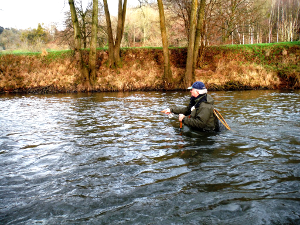
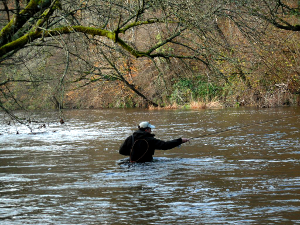
January 2015
We are not seeing an exact repeat of the 2013-14 winter, during which the rivers were in flood from 18 th December right through into March and the new season. But there are some similarities, plenty of rain has fallen and an awful lot of cold water has run under the bridges during the last month. As a result, it was generally difficult to find grayling fishing opportunities during January. The main Wye has been consistently high, although mostly flowing clear in the upper part. Thus at times it was possible to trot some of the quieter water at the side of the main flow. Unfortunately the Herefordshire Lugg and the Arrow have been too high to fish for most of the period, and the Monnow and its tributaries have also been plagued by high water. The Irfon has been up and down as usual, but has provided some good fishing opportunities for those prepared to watch the gauges for the right conditions and plan a trip at short notice. One great advantage of winter trotting, if that option is available, is that in certain places you can do it from the bank without wading when conditions in the river are too dangerous. For example, I would be reluctant to wade and fly fish in the Irfon with the Cilmery gauge above 0.60, but trotting from the bank is usually possible up to about 0.75.
Fishing conditions were not too bad just before the New Year. On the day before the holiday, PK from Marlborough was out on the Irfon and caught a dozen. On the same day, David Burren joined me on the Monnow at Skenfrith and we enjoyed ourselves catching a handful of grayling on nymphs in quite reasonable river conditions. Also on the 31st , AS from Newent came to fish the deep pools of the Dore at Chanstone Court. This is one of our smallest grayling streams, very overgrown, but using heavy bugs he came up with 4 grayling, one of them being a 16 inch fish which must have been quite exciting to play at close quarters on a 6 foot 2 weight rod.
Once into January, conditions became much tougher as the water levels rose into proper flood. It was rather hard work, but I fished the Wye several times, looking for grayling in slack water under the bank. Yesterday I came across an otter who was trying the same thing in a rapidly rising river. By preference, I was keen to fish the Lugg and Arrow, both normally favourites of mine during the middle of winter, butjudged the levels as too high all through the month. Other brave souls tried it and succeeded. On 10th January AB from London managed to get 4 grayling from the Lugg at Mortimer's Cross on a Pink Shrimp, which couldn't have been easy in a very powerful current. AS from Newent and NH from Worcester were two anglers who on different days tried trotting the Arrow at the Leen in high water and both of them caught grayling.
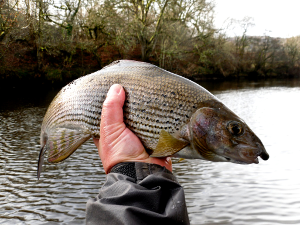
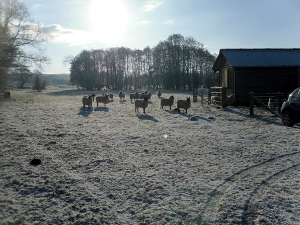
On the 21st January, Chris Beard from Stratford Upon Avon fished the Cammarch Hotel's middle beat on the Irfon and took half a dozen grayling with nymphs. On the next day, KM from Ross on Wye took the trotting option on the same beat and got 11 grayling to a very respectable 18 inches. I saw from his report that he was fishing quite light, using a 3BB stick float. It's worth noting that while grayling will at times be more than happy to give a vigorous bite on quite heavy trotting gear, there are times when they won't, especially if the water is clear. It's good to have a light option available. Towards the end of the month I had an Irfon day for myself at Cefnllysgwynne and found conventional trotting gear to be quite ineffective in very clear water. I eventually had better results by whipping a single maggot on a Tenkara rod with a tiny float and single no 4 shot.
I seem to write this every month, but I'm hoping for lower water levels during February. I don't mind if it's frosty, but it would be nice to have some fun with nymphs on the smaller streams before the grayling season ends. In fact, next month I would be delighted to fish on any of the following: Mortimer's Cross, Lyepole and Eyton on the Lugg, Court of Noke and the Leen on the Arrow, all the available Irfon beats, and perhaps some of the upper Wye beats where the river is narrower below Rhayader, including Doldowlod, Craig Llyn and Dolgau. So much fishing to do, so little time...
The month wasn't entirely wasted. When floods allowed, our two teams of volunteers have made a start on this year's programme of trimming on the wild streams. As these are nearly all small brooks, the upper headwaters of the systems, it's often possible to get work done at times when larger rivers are unfishable - a significant point, this, as most of us are keen grayling men. Generally we try to get the bulk of the work done in January in February: an approach which has two advantages. Firstly, the overhanging branches are without their summer freight of leaves, making them much easier to handle and cut. And secondly, we all want to be out fishing for trout when the season opens come March. You might think that cold conditions would be very difficult, but, believe me, even in a frost you soon work up a muck sweat once you get busy with saws and pruning knives. And we certainly do work on some cold days. There was one at Hundred House (top of the Edw) a couple of winters ago, during which I leaned on my parked car while eating lunchtime sandwiches and the whole thing started to move away downhill on the frozen road. Everybody else seemed to find it very funny.
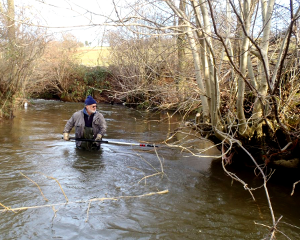
It might be worth taking some time to explain what we are trying to achieve during this work, which is confined to making most parts of these waters accessible and fishable to reasonably fit anglers. These are wild streams, well named as such, so please don’t expect the kind of manicuring achieved by a full time keeper looking after a couple of miles of chalk stream. At times (armed always with the map so you know where you are going), it will be necessary to climb over locked gates, roll under wire fences, scramble up and down banks, and push through undergrowth to reach the water. Obviously some are easier than others or simply have a naturally more open character. Wild stream beats are relatively cheap and lightly fished, so that in most cases landowners are not earning significant incomes which can provide much in the way of maintenance.
Given the many miles of water which a dozen or so volunteers are trying to address, most beats will not be trimmed on an annual basis and some might be visited only once in three years. The volunteers are not tasked to remove fast growing invasive plant species from the banks or clear up large amounts of rubbish needing skips (although we will pick up stuff which can be carried away). There are other programmes for these specific problems. In the case of rubbish clearance, WUF experience shows that is generally best to involve the local community in the clear-up, or the problem is likely to recur. The volunteers are using hand tools only, so fallen trees requiring heavy equipment and power tools to cut up and remove will be left, although we do log their position for the benefit of the WUF and landowners. The cost of removing whole trees is considerable, so in practice they are often left in place unless it is thought they are a barrier to migrating fish.
So, what can we do? Well, we struggle up the wild stream beats from bottom to top and try to make sure you will be able to do so also. Usually the river channel is the easiest path, but even in the smallest streams there are often deep holes, which cannot be traversed even with chest waders. These deep places can move on an annual basis due to erosion of the stream bed. We try to make sure there are ways up and down the banks to get past these spots and trim away obstructing branches. We also try to remove waste barbed wire when it finds its way into the stream or is in a position on the bank where it might be a hazard to waders. We are not in a position to build new stiles or cattle barriers, but we can flag up to the WUF and landowners where there are access problems and we also try to come up with alternative routes upstream. The extent of the difficulty should not be underestimated: many of these brooks erode and change theirbed at a surprising speed with almost every winter flood. An expensive access gate placed above an easy slope leading into the water might in a couple of years be dangling above an undercut cliff.
At the same time, we are all anglers and we try to look at each overgrown stream with an angler's eye. Part of the charm of the work is that it is rather like fishing. The question we are constantly asking ourselves as we work up the stream is: Where would a trout be likely to lie and are there are any overhead branches to hinder casting and floating a fly over or through that spot? The next question will be: And where will the back cast go and what is in the way of that? We take off branches as needed so that, when fishing, you can hope to find most of the likely spots open to you by using either an overhead or more often a sideways cast, on one side or another of your body. Shallow parts of the stream, where sizeable fish are unlikely to be present, will usually be left shaded. We keep it in mind that overhanging branches drop caterpillars, beetles and other items of trout food into the stream and that trout do need cover. Woody debris, which is our expression for log-jams, is also removed with a sparing hand; again, trout large and small must have cover.
It's worth reminding at this point that some of our more prolific trout streams are the most tangled and overgrown ones, and that some of those which are open and relatively easy to fish perform less well. Advice from Seth at the WUF and a very good general principle is to refrain from cutting about one third of all the cover which we feel we might cut. Most of us have had the experience of catching a good trout, or maybe just pricking or seeing one, in a somewhat difficult spot. Come the winter trimming session, the same angler/volunteer takes great care to make the favoured place just perfect for fishing next season, removing overhanging branches so that there will be no chance of interference with casting. There can be some competition among volunteers here, but our man, ever-hopeful, is determined to be first to fish this place when the season opens. And as a result of his well-meaning efforts, no large trout is ever known to lie there again - at least until it becomes overgrown once more!
I see from Trout and Salmon that Craig Llyn, one of the passport beats, is up for sale. This is a very attractive mile and a half of the upper Wye below Rhayader, well known for its back end salmon. At this point, above the Irfon and Ithon junctions, the Wye is an intimate stream compared to the wide reaches below Builth. Unfortunately I have not yet fished it for salmon, but there are a number of attractive looking pools, which look as though they could be covered quite adequately with a single handed rod. I can recommend the trout and grayling fishing which is superb, and it produces large specimens of both. I hope a new owner will keep it with the Wye and Usk Foundation. Finally, after last month's newsletter a number of people contacted me with otter stories. Among these was a message from Stephen Marsh-Smith with a superb picture of an otter family photographed at Gromain. You really ought to see it - here it is.
Oliver Burch
